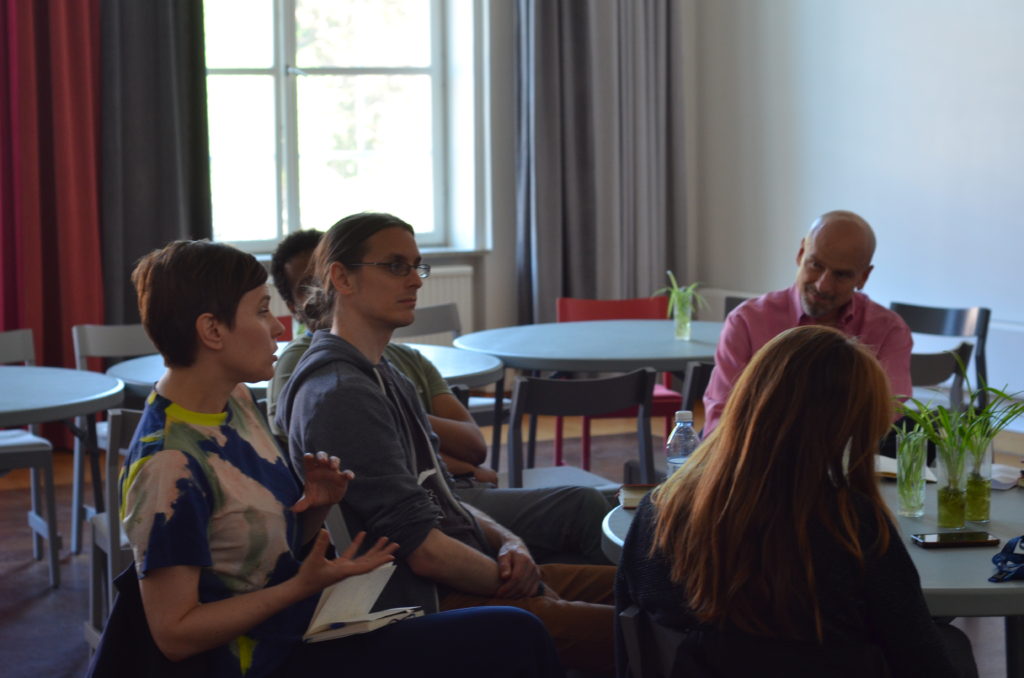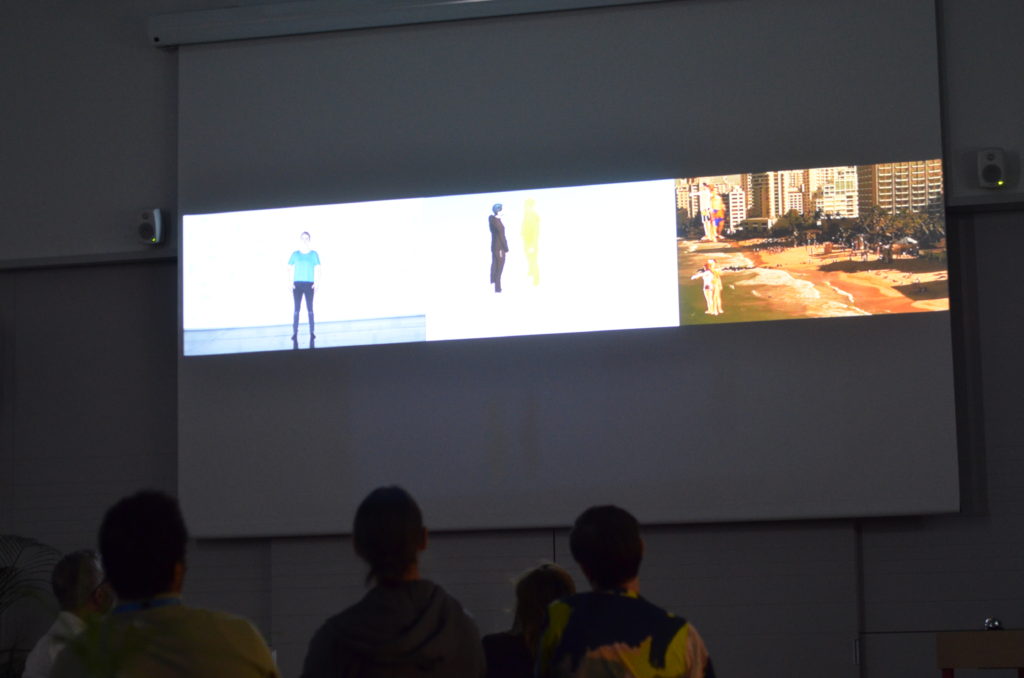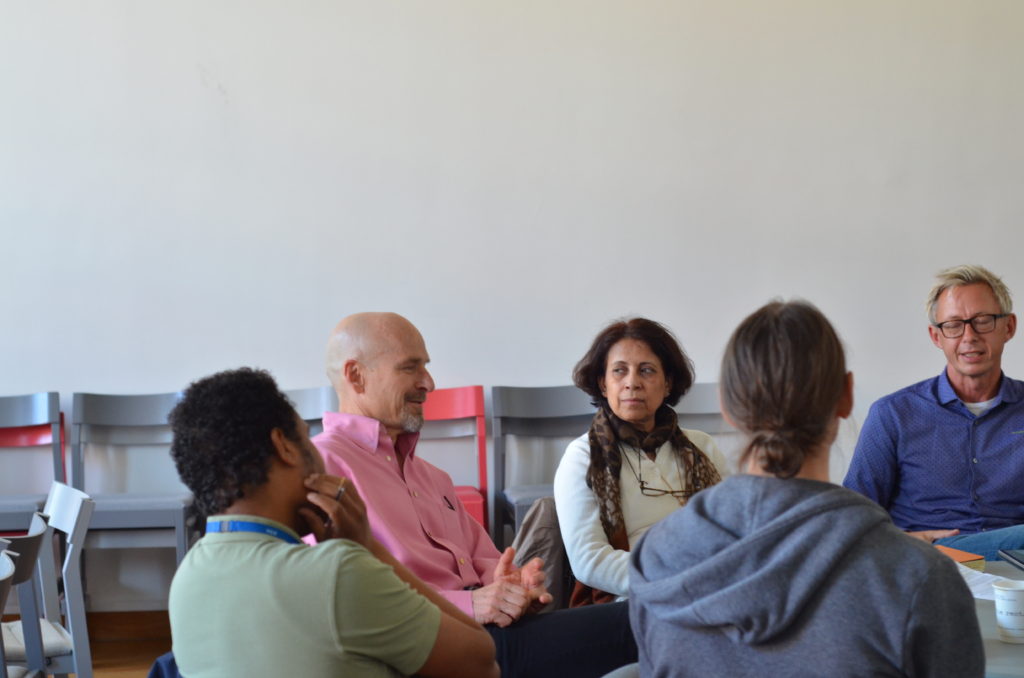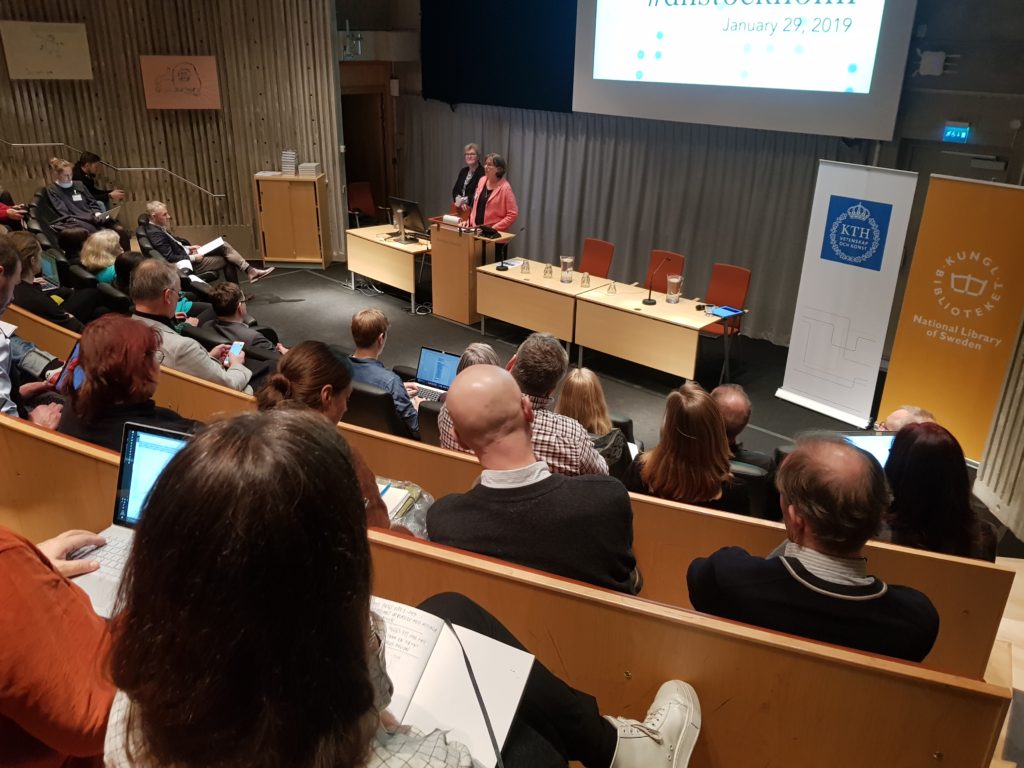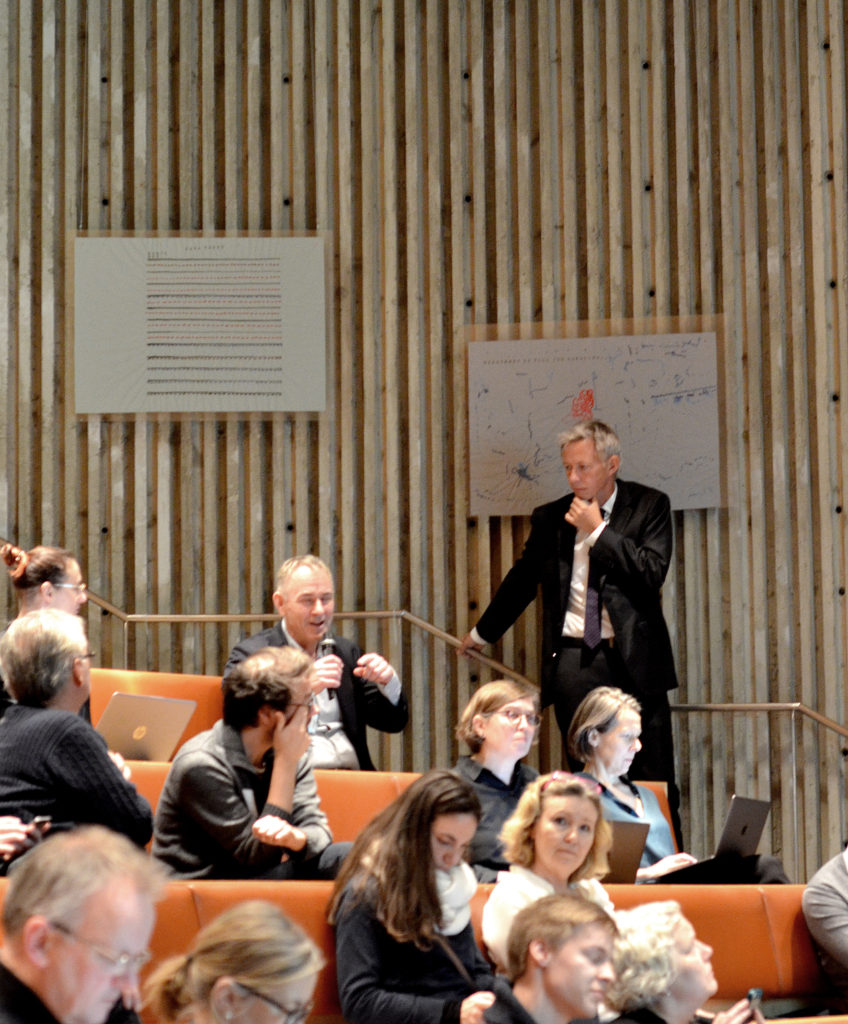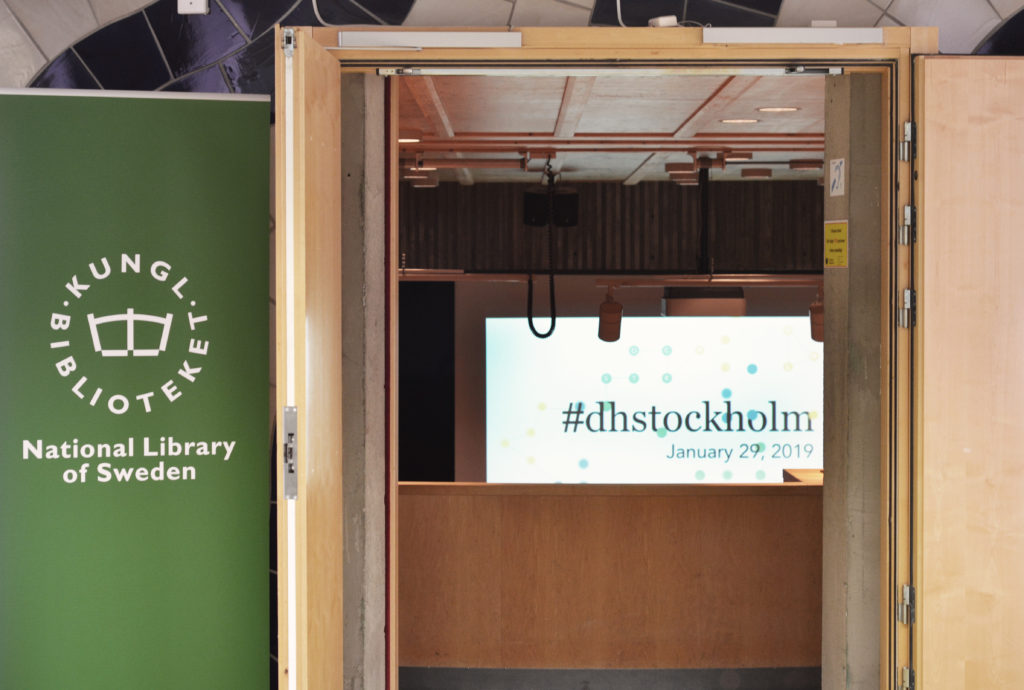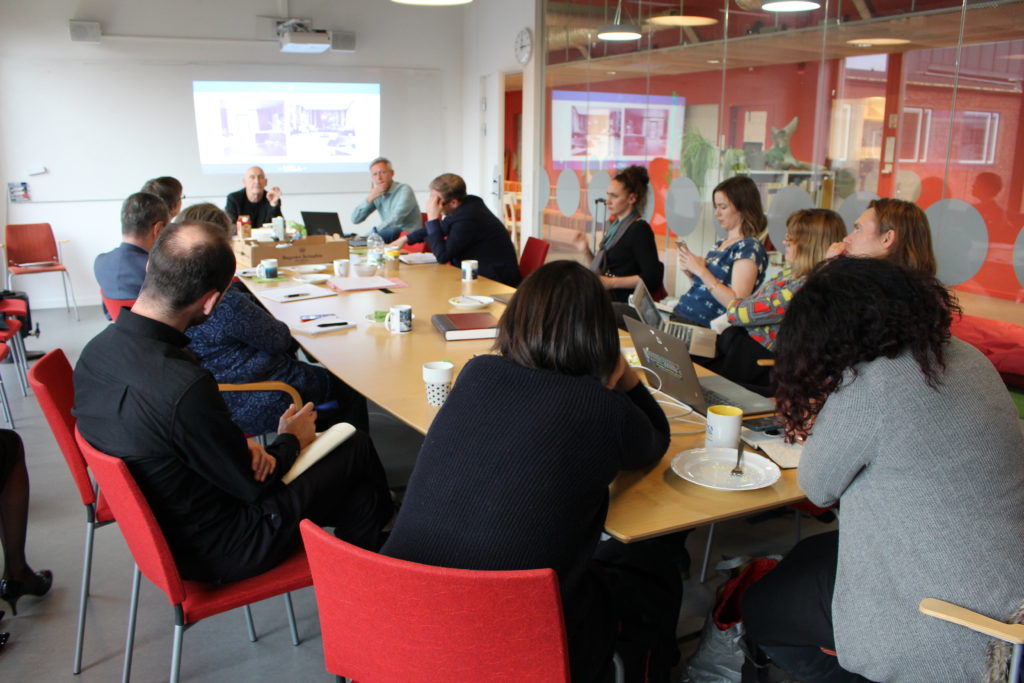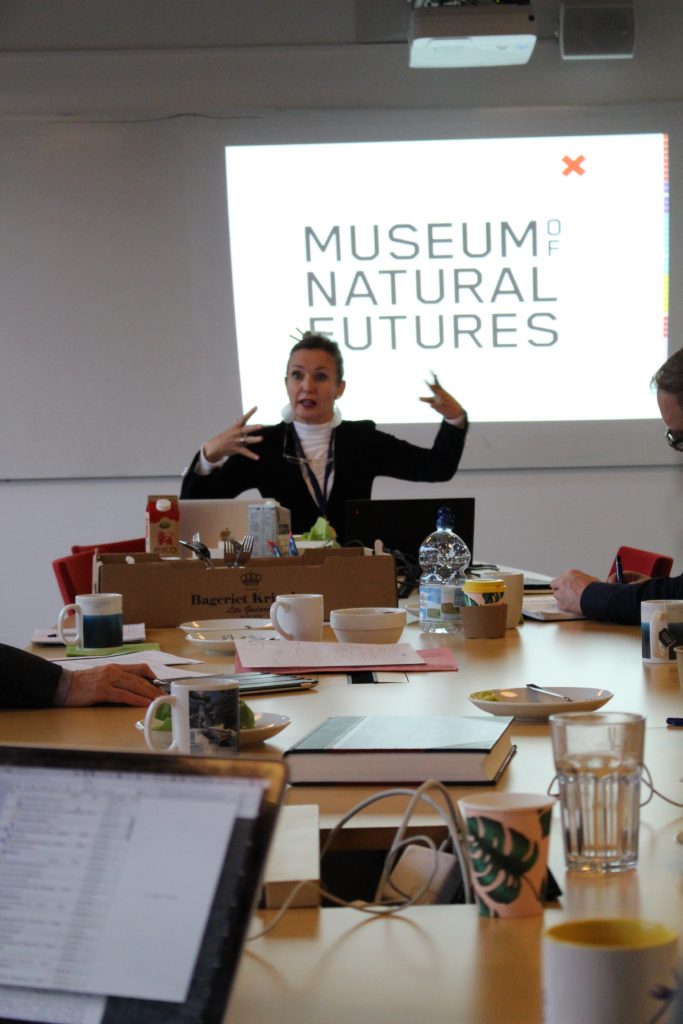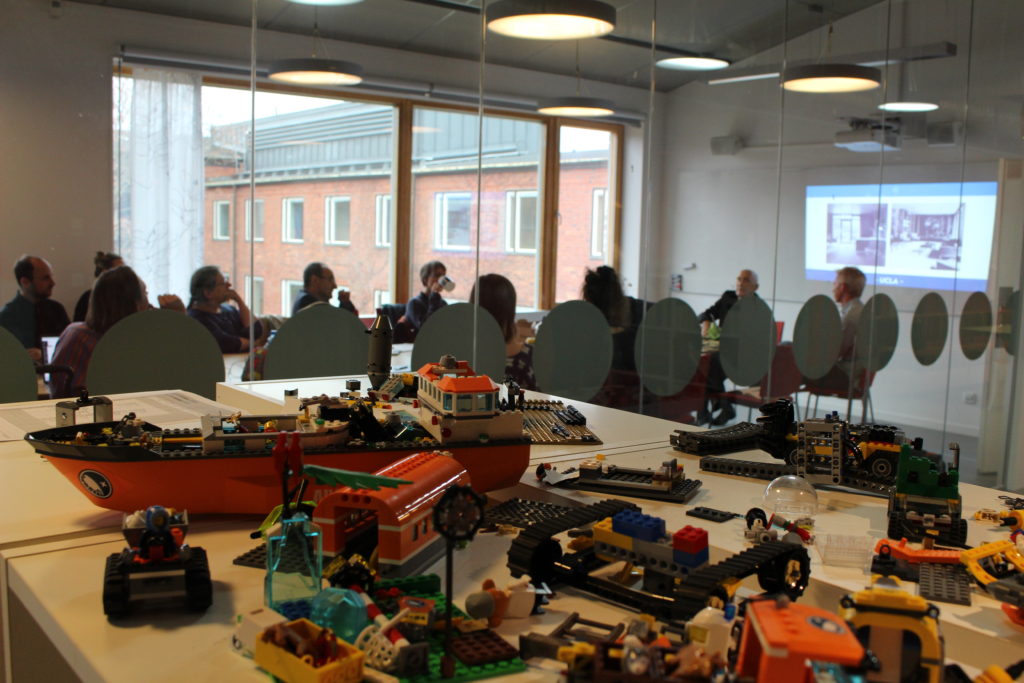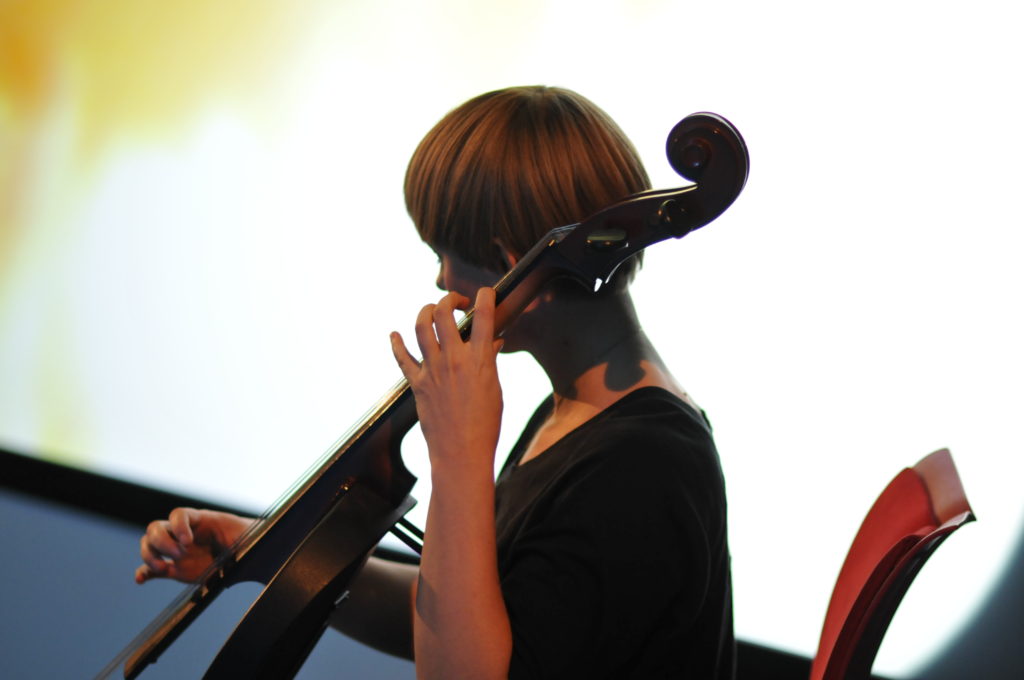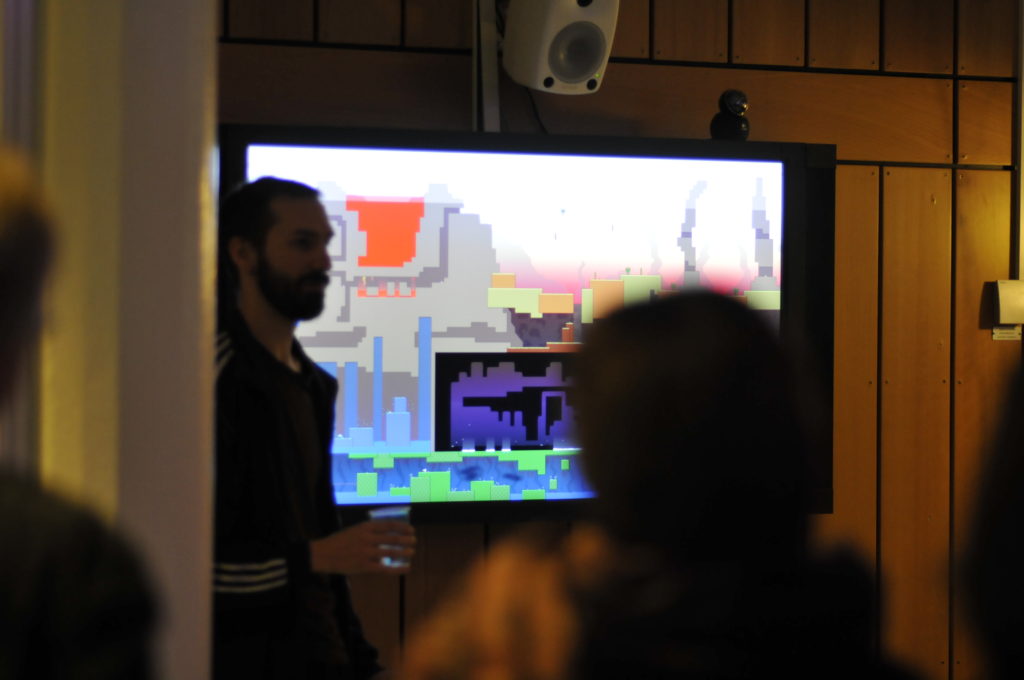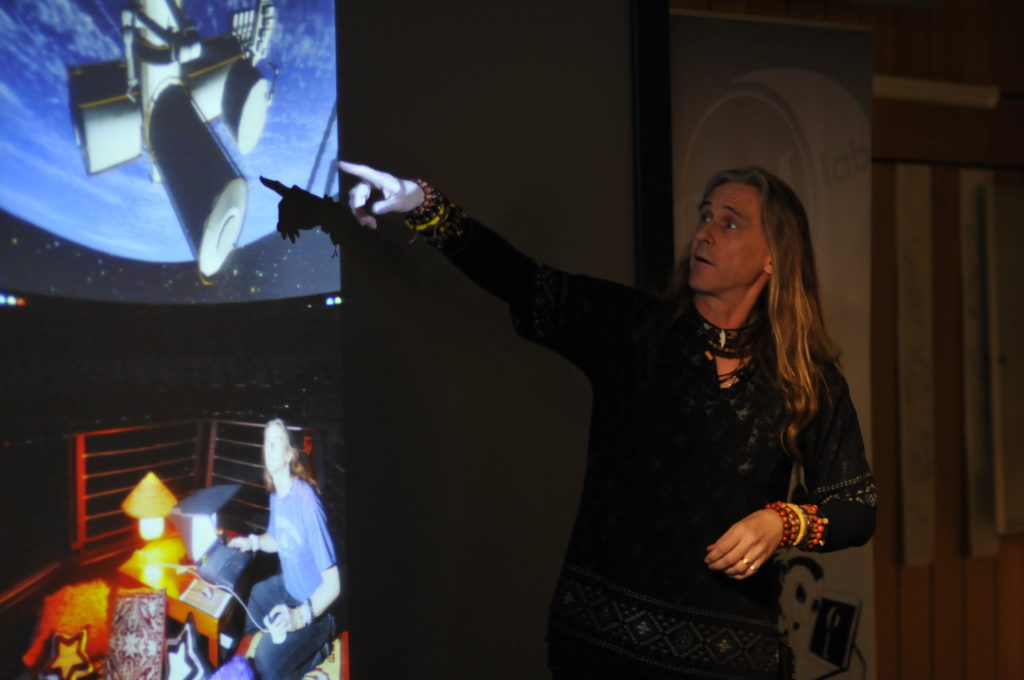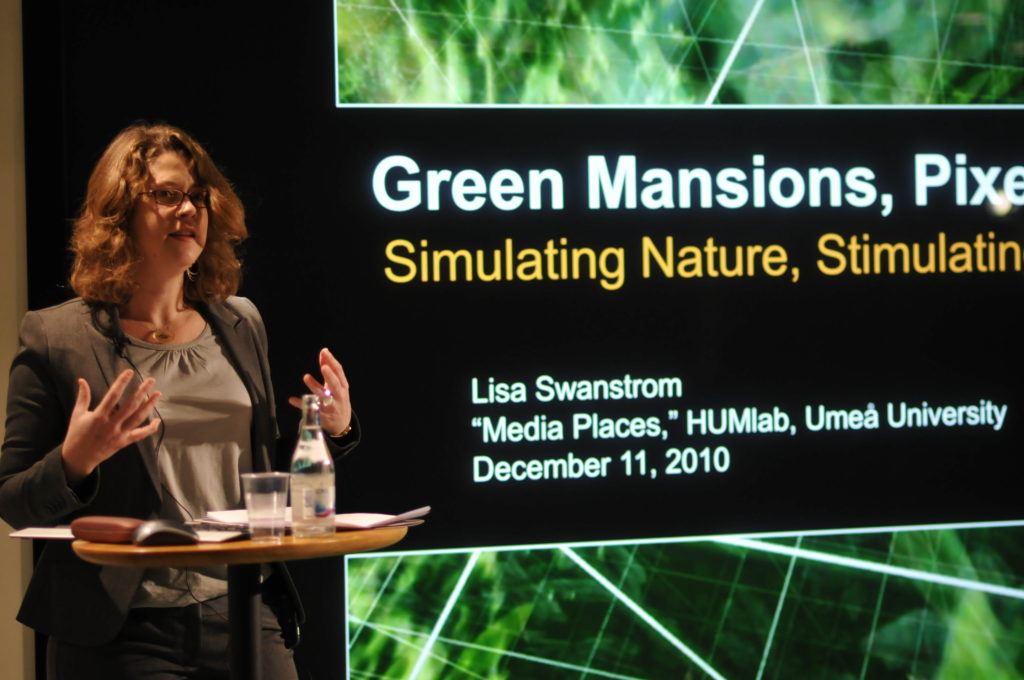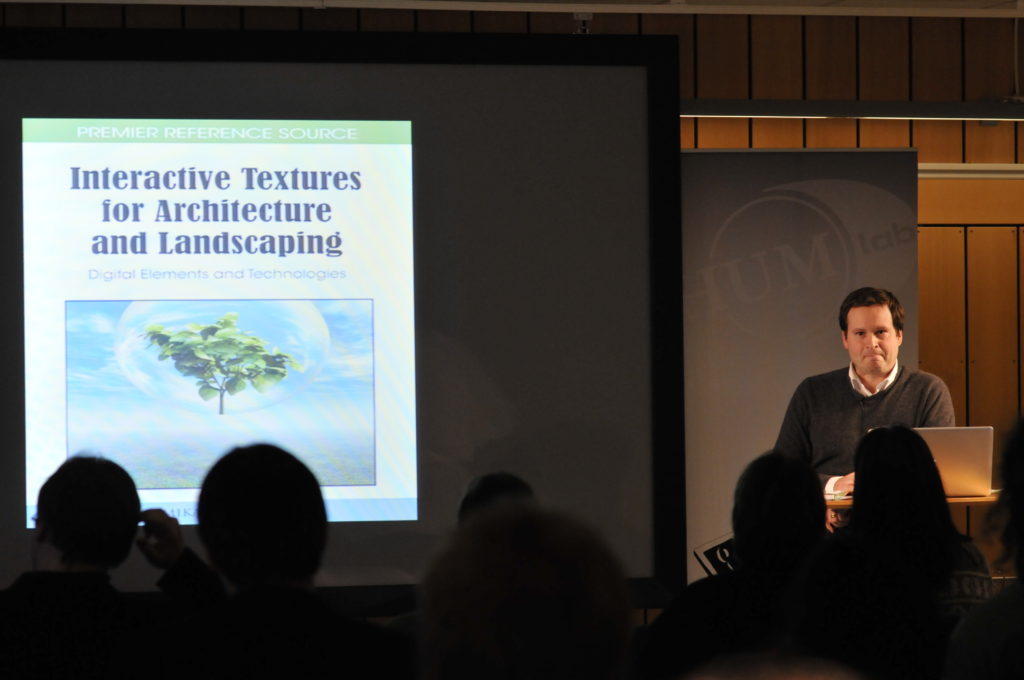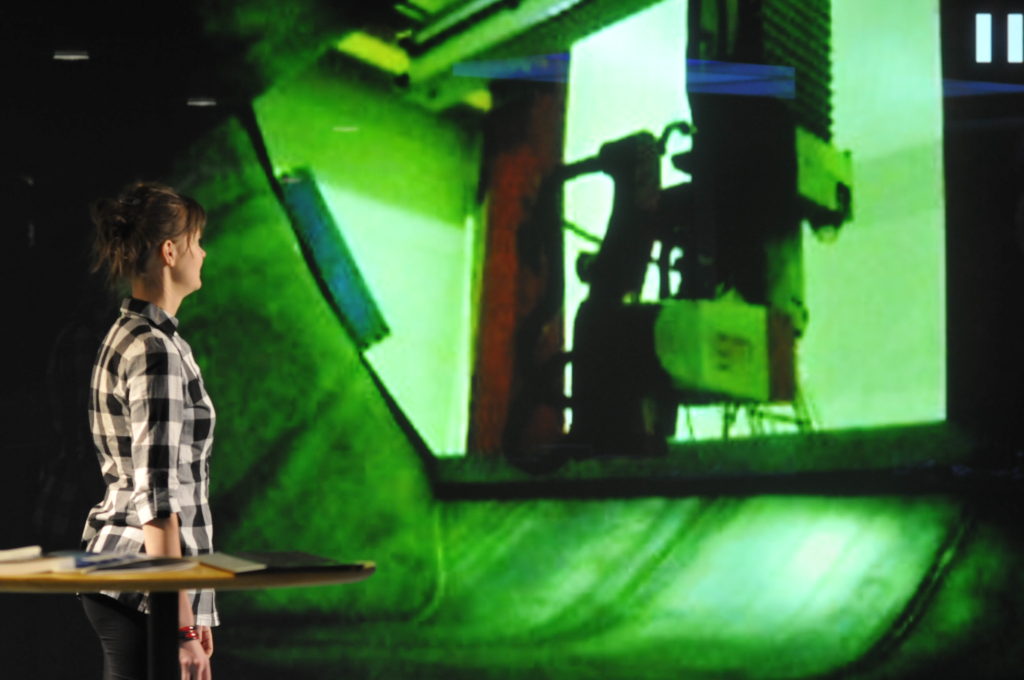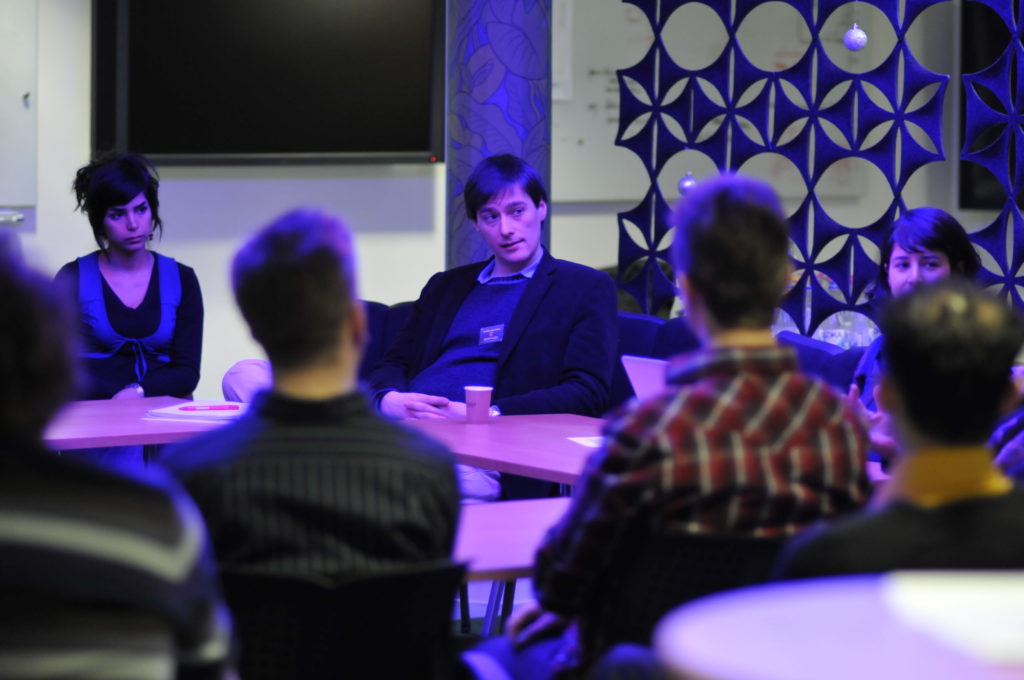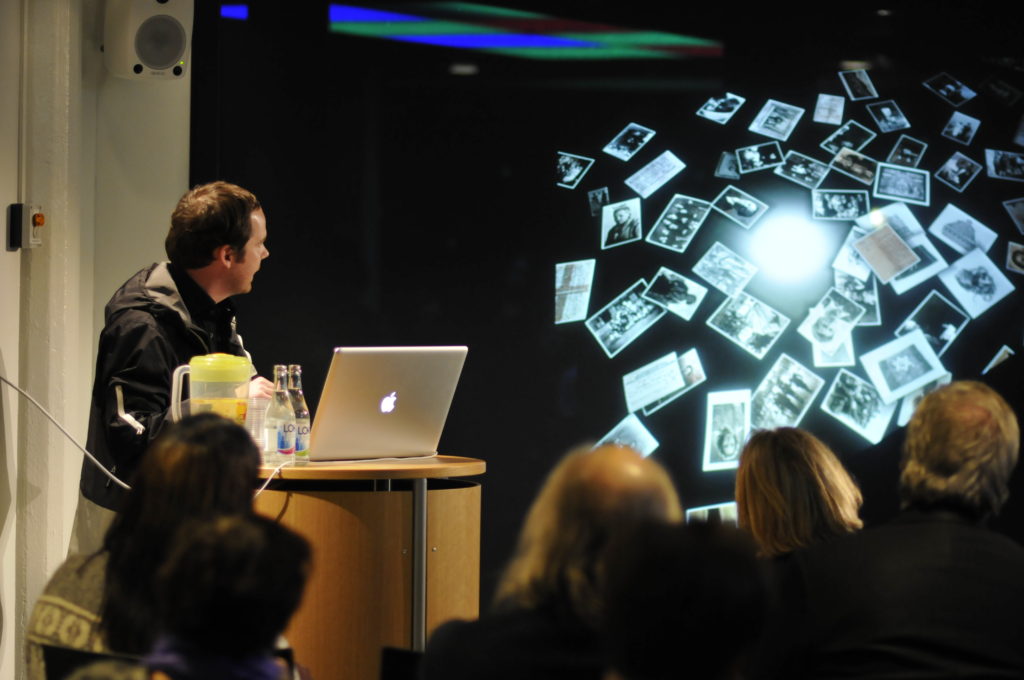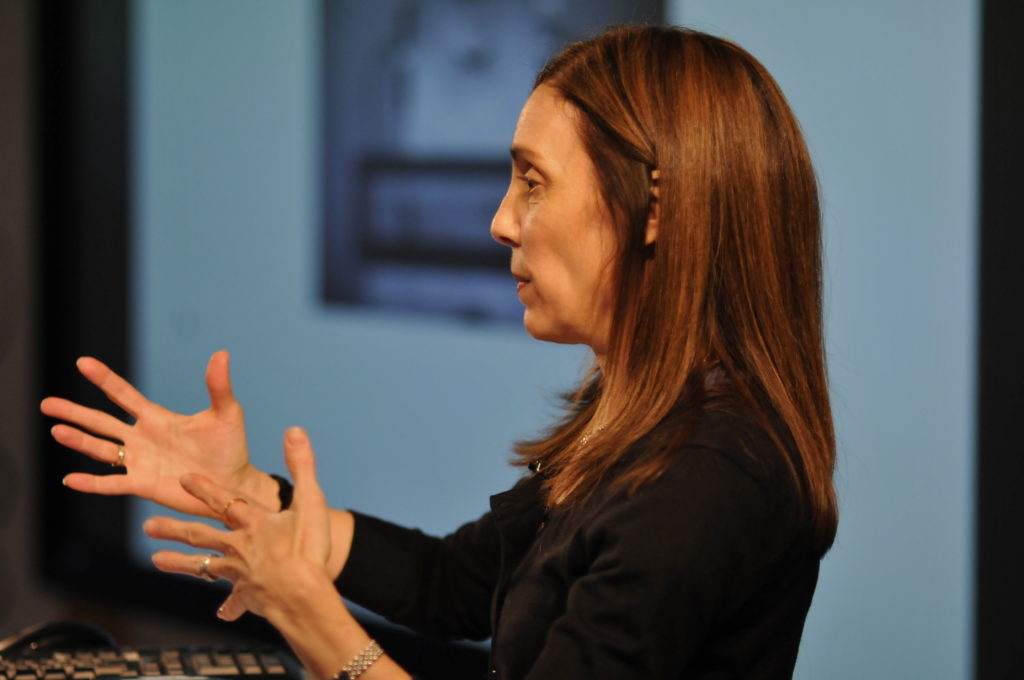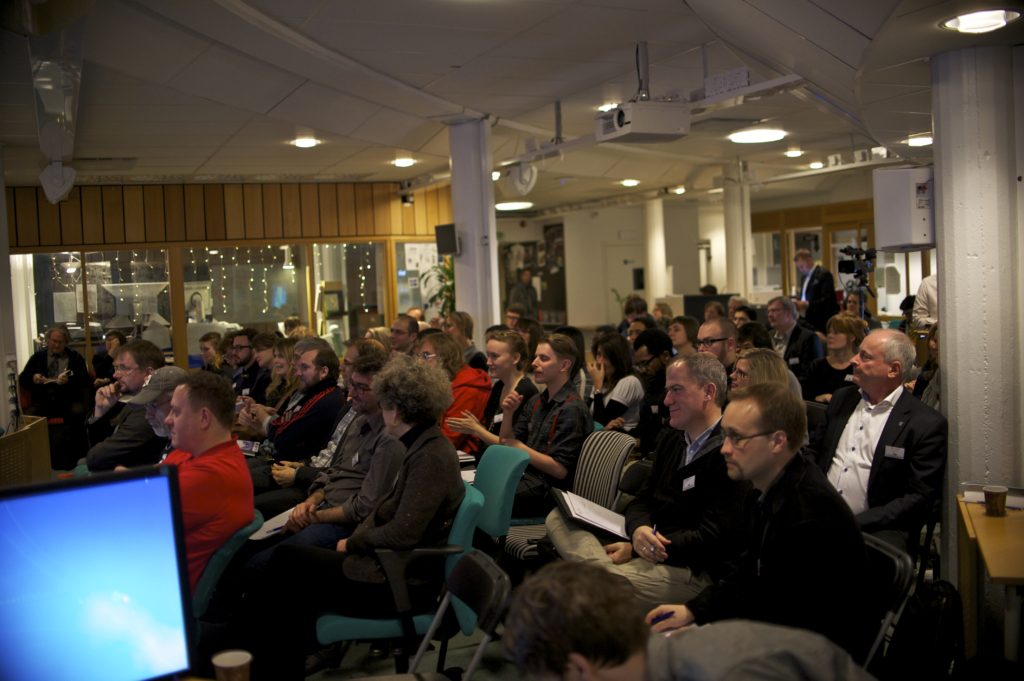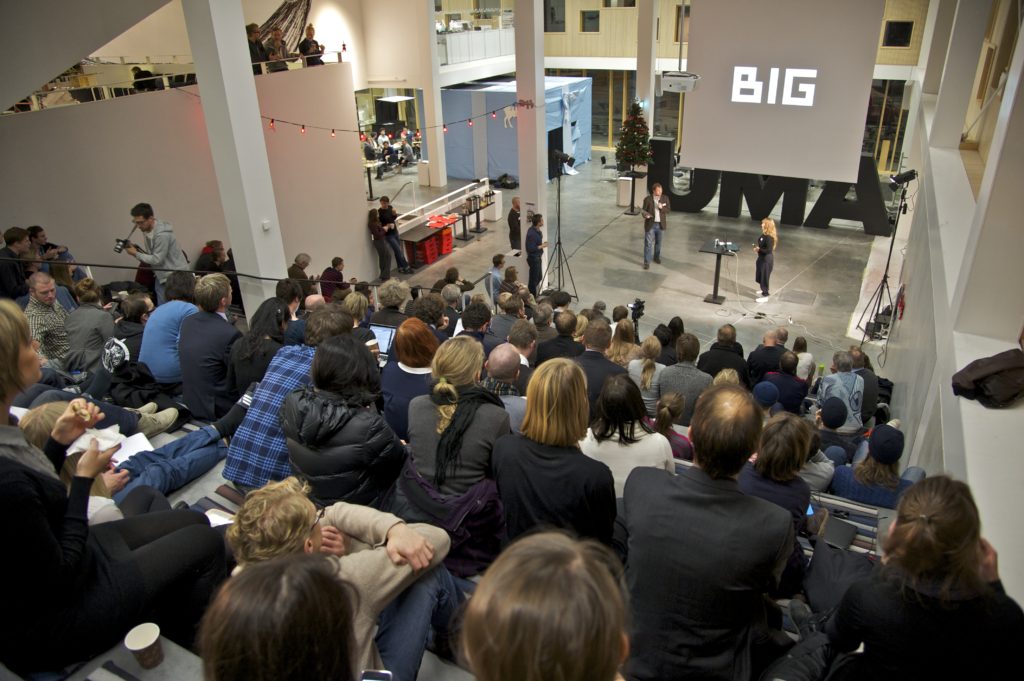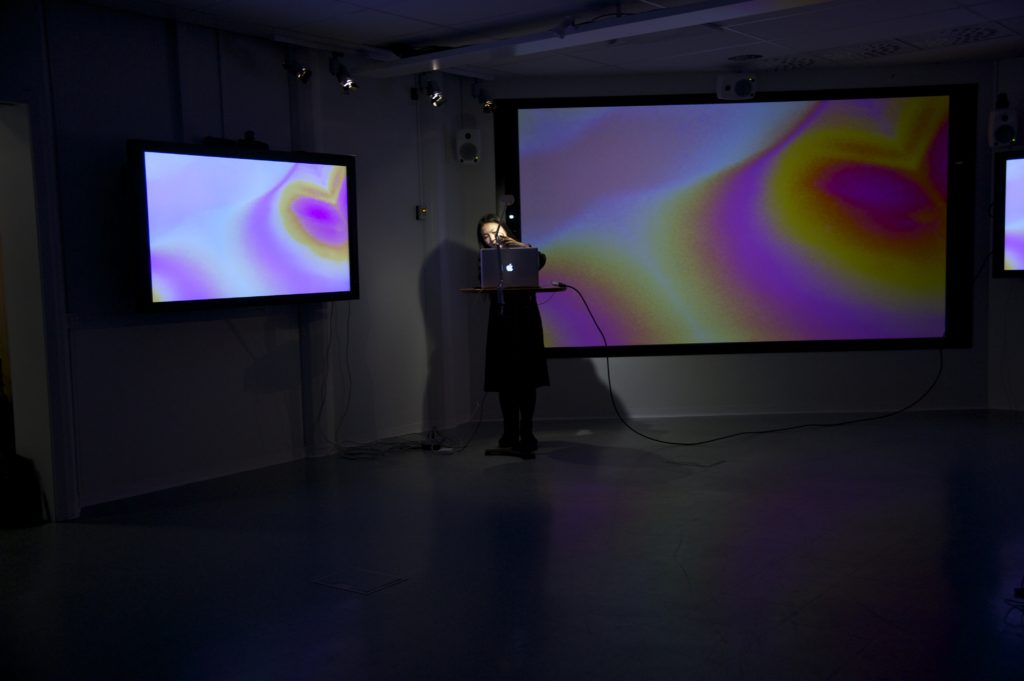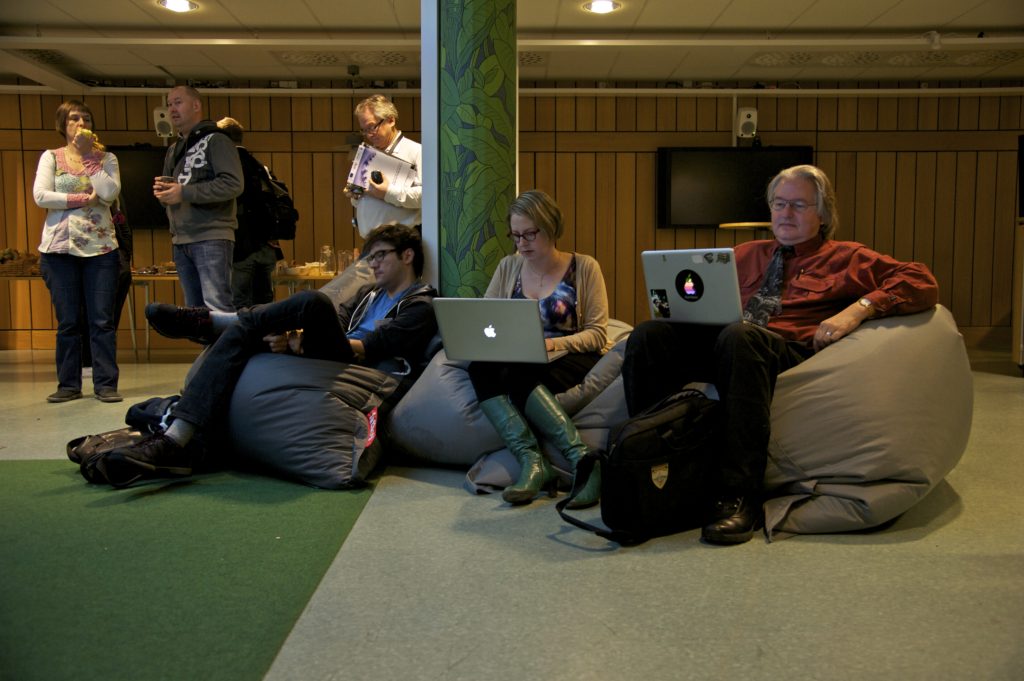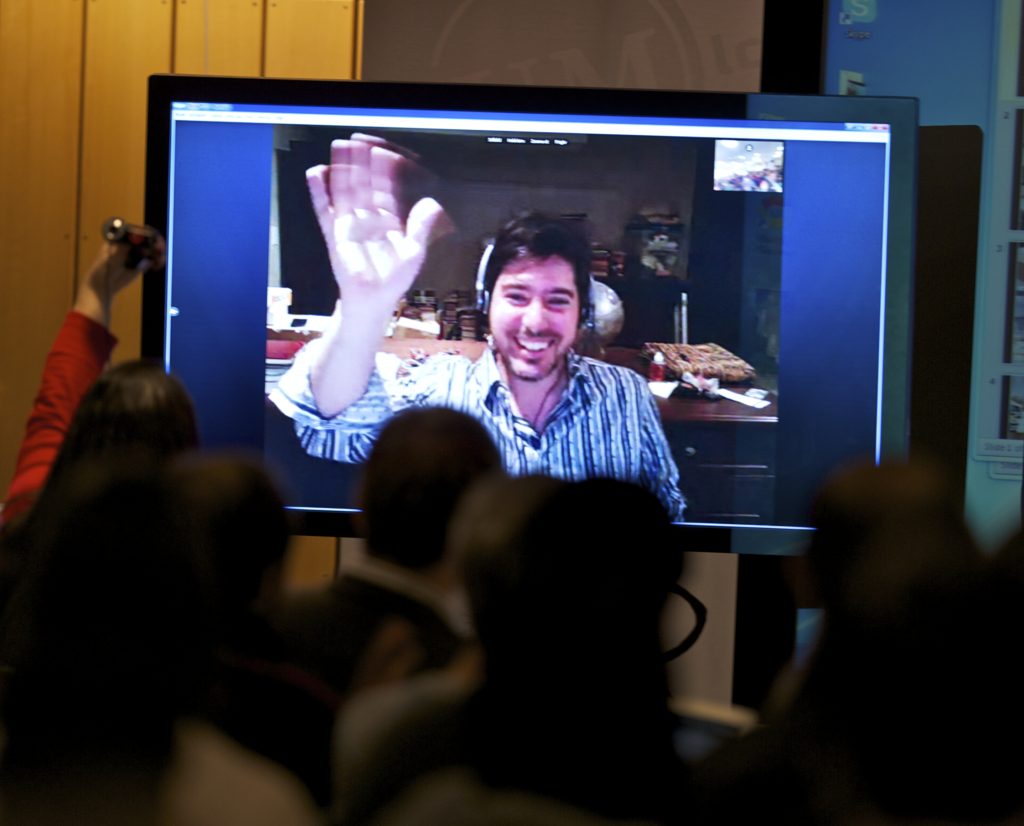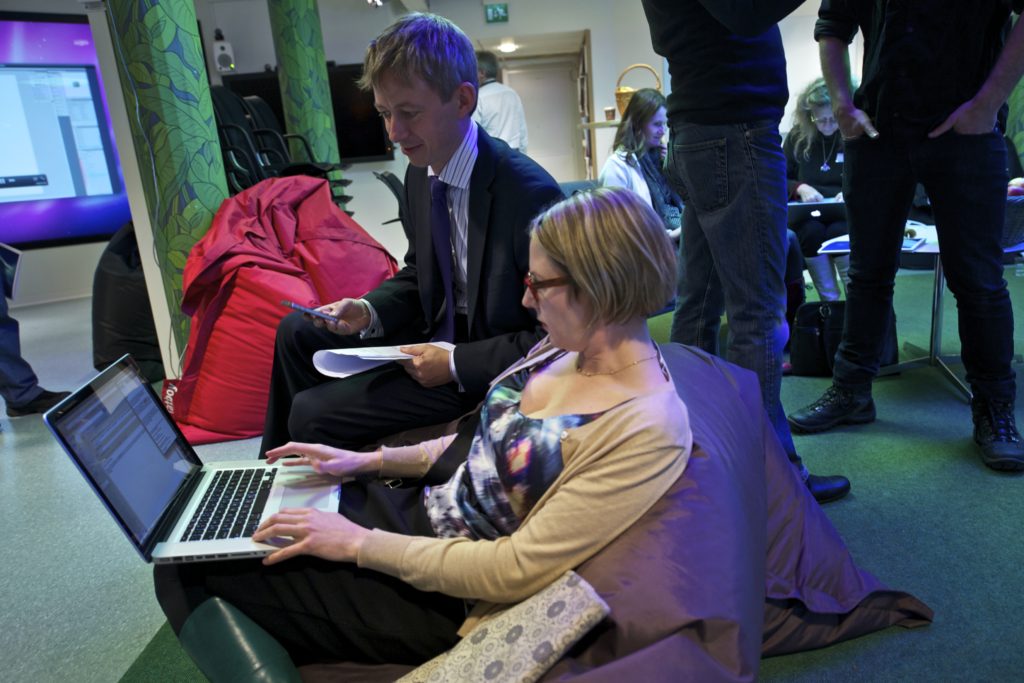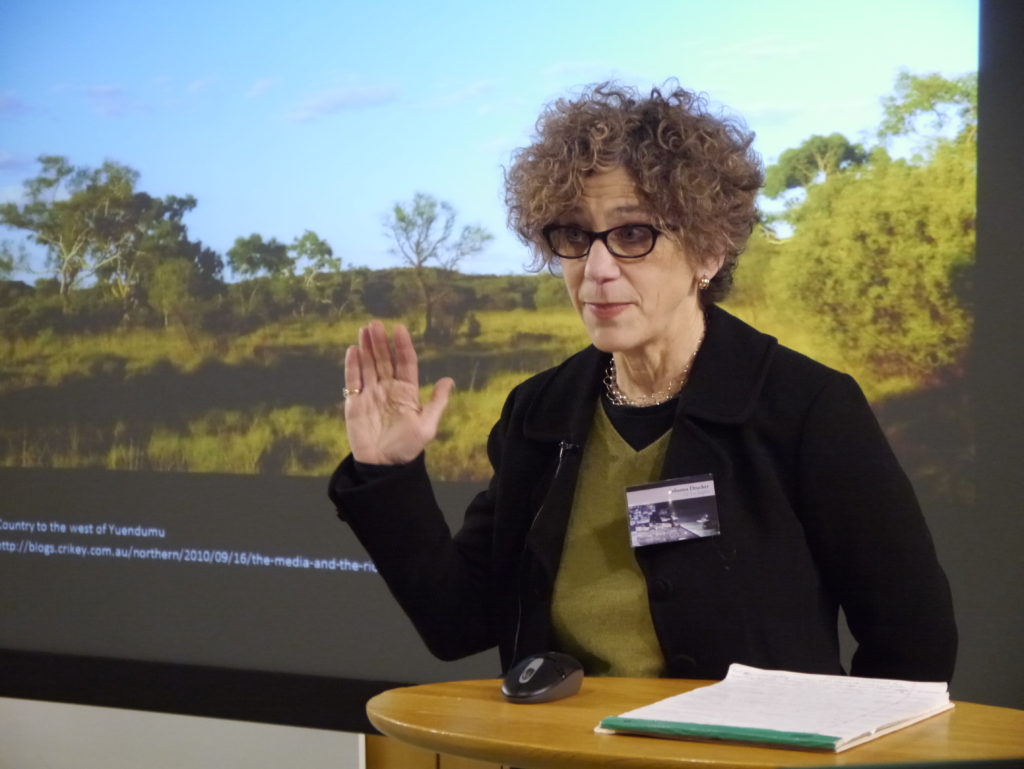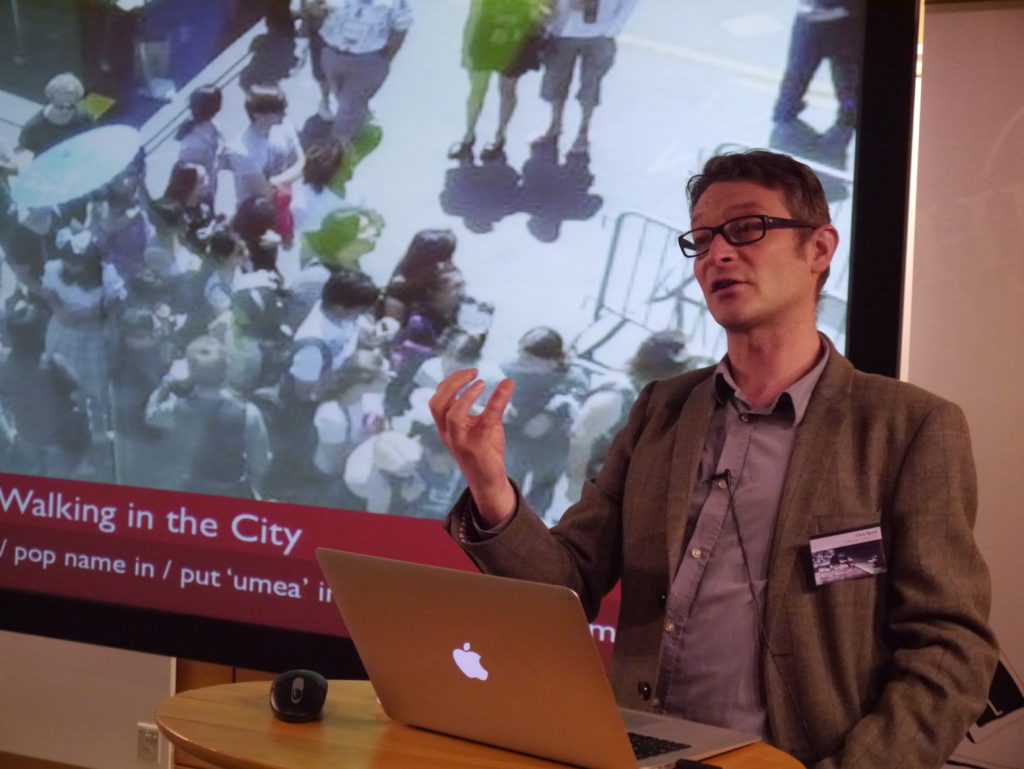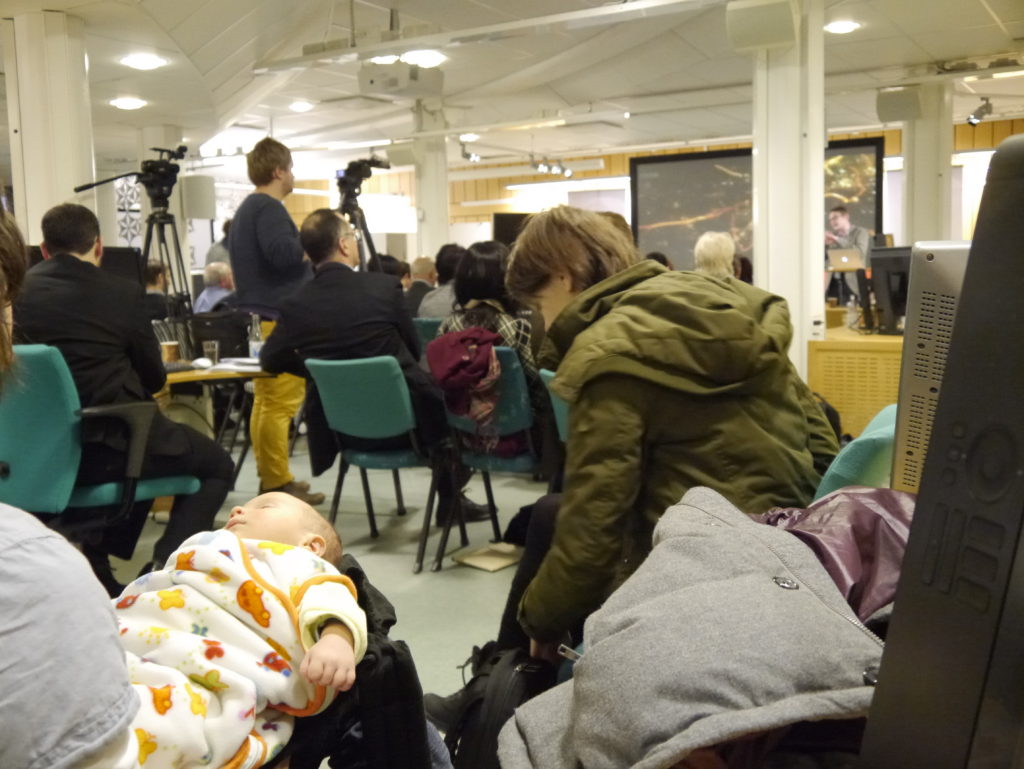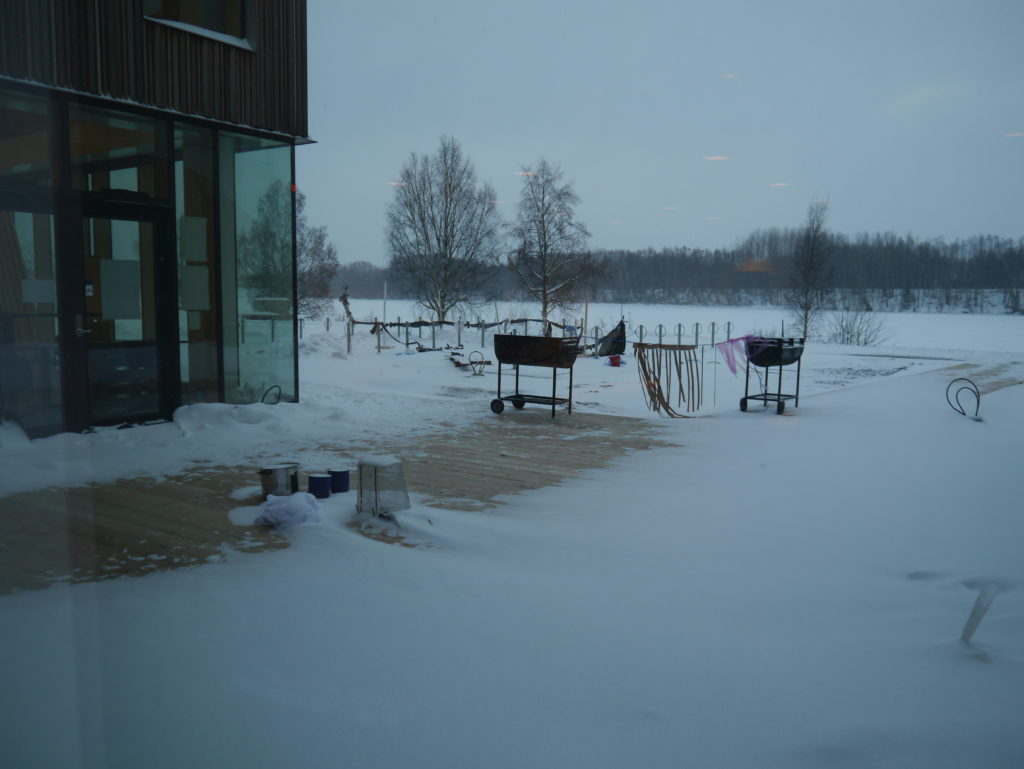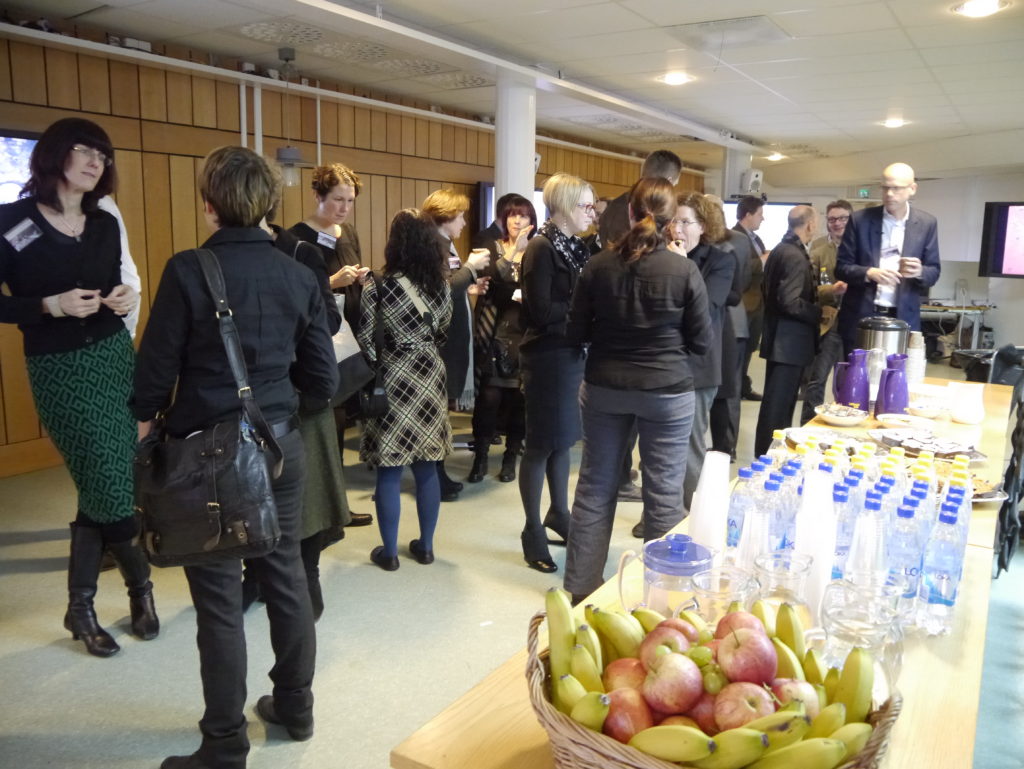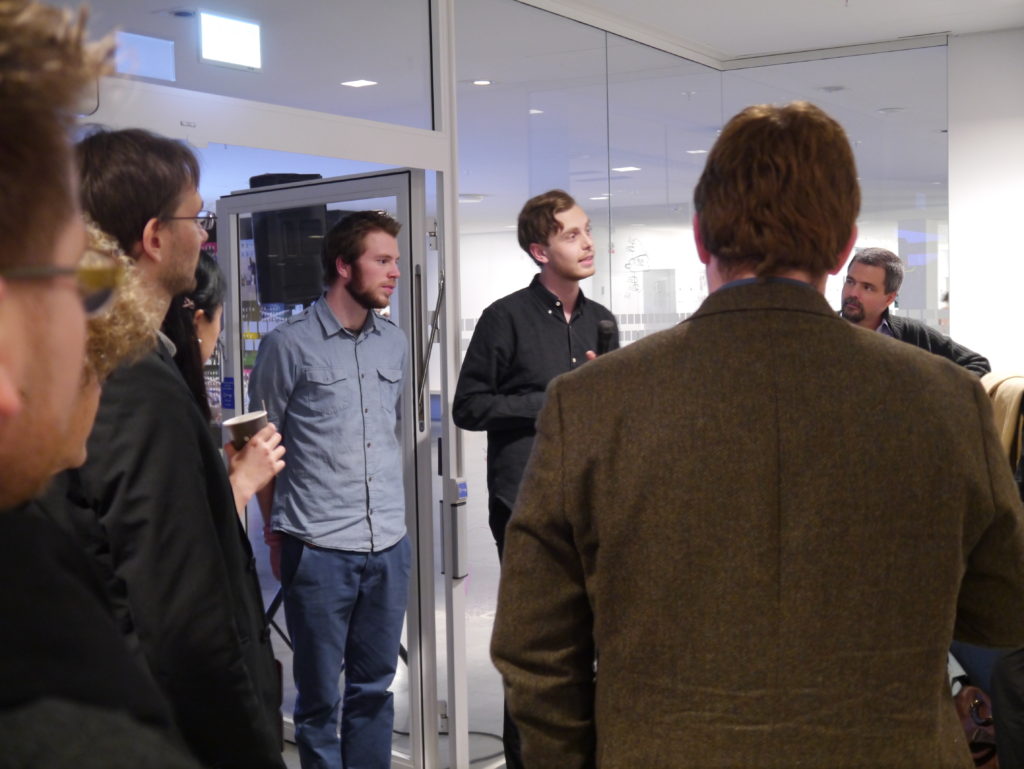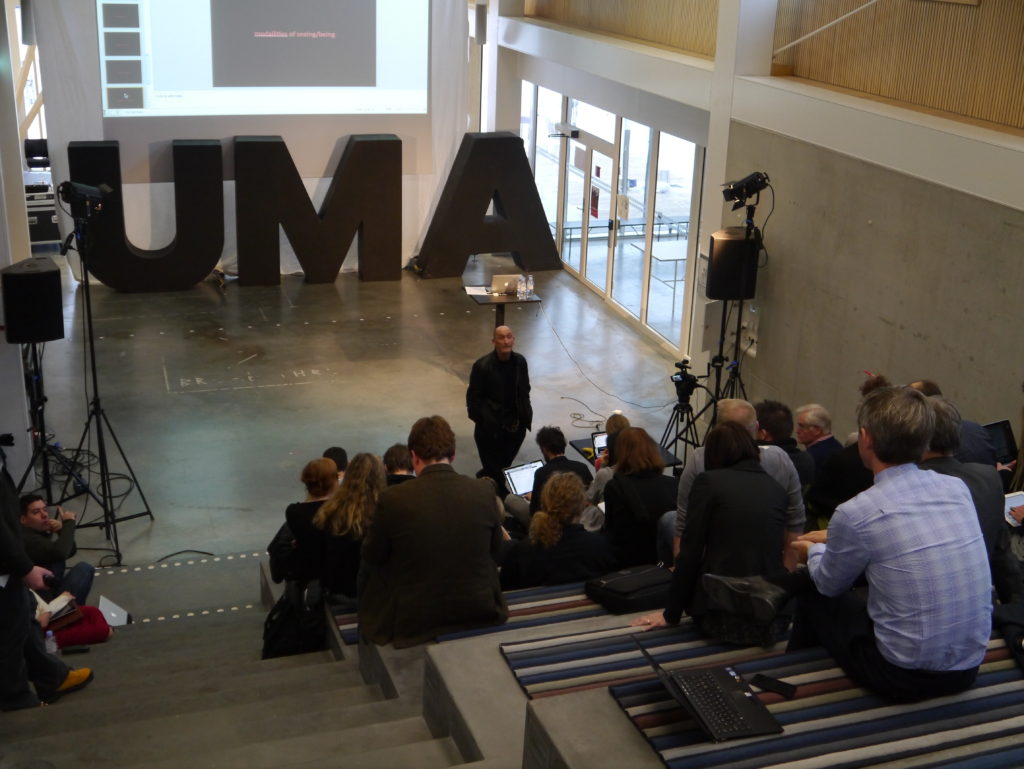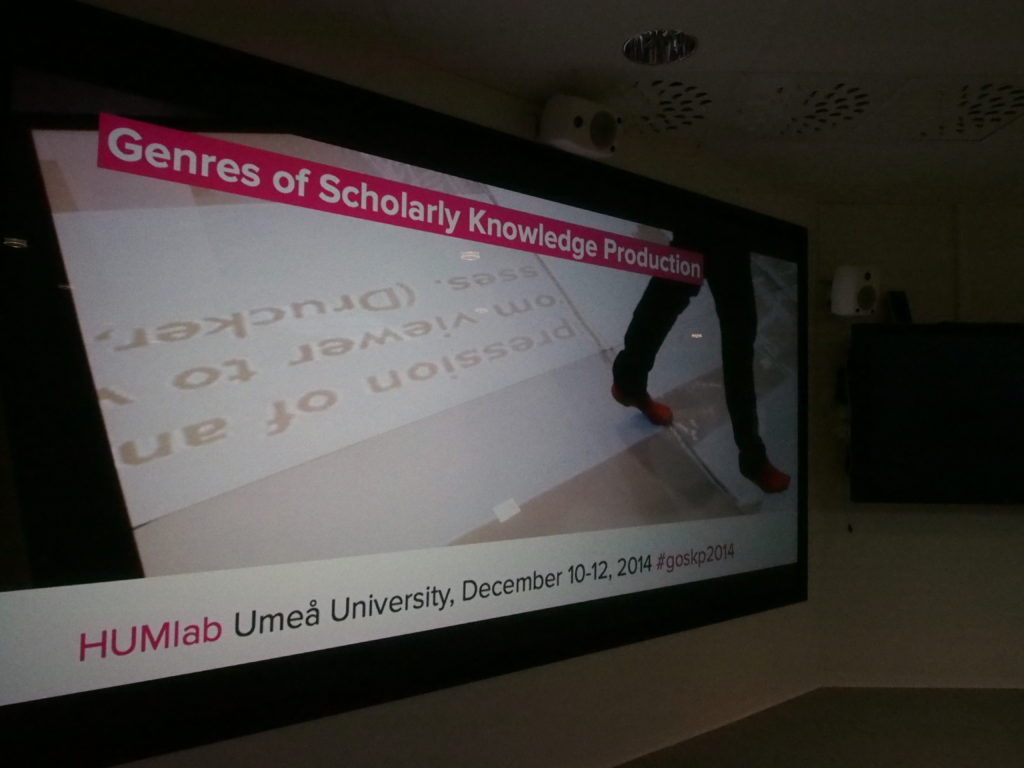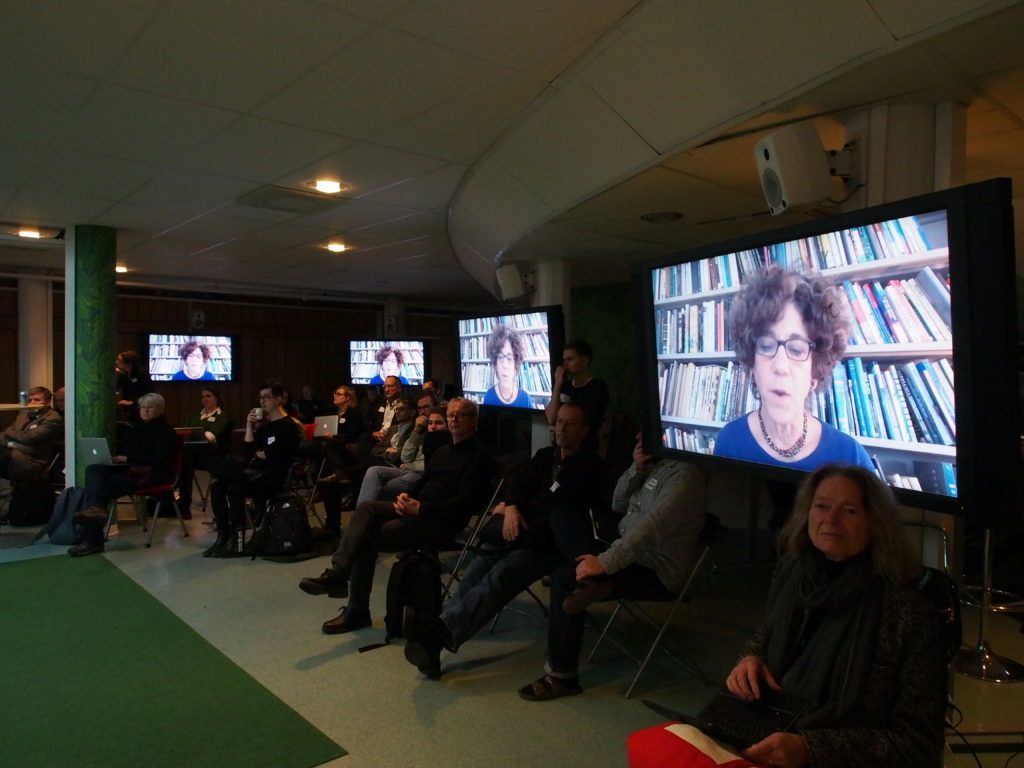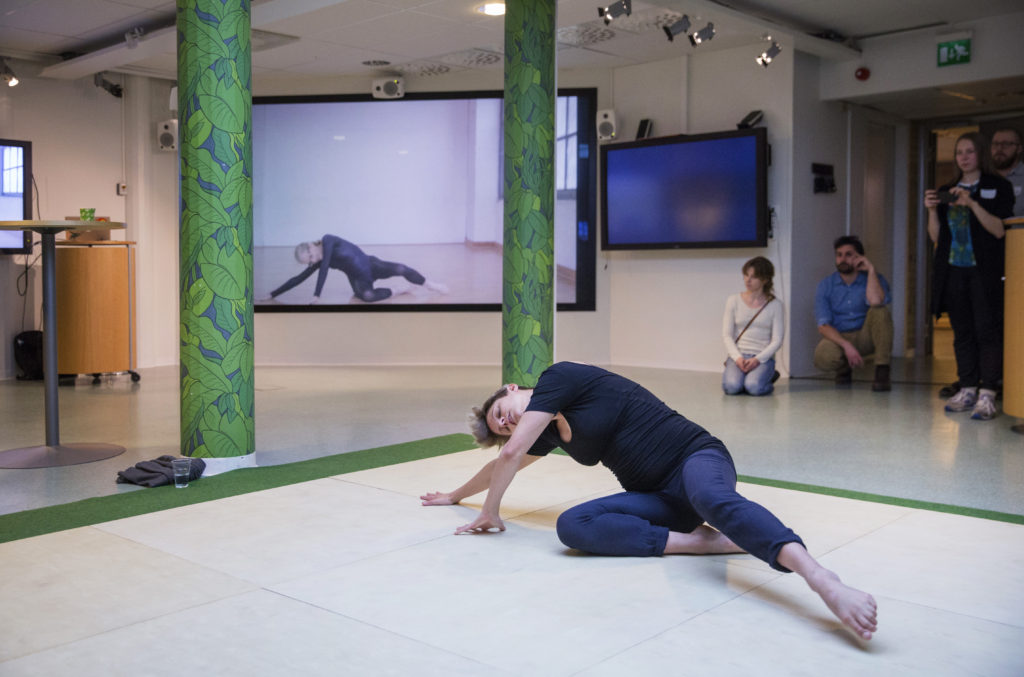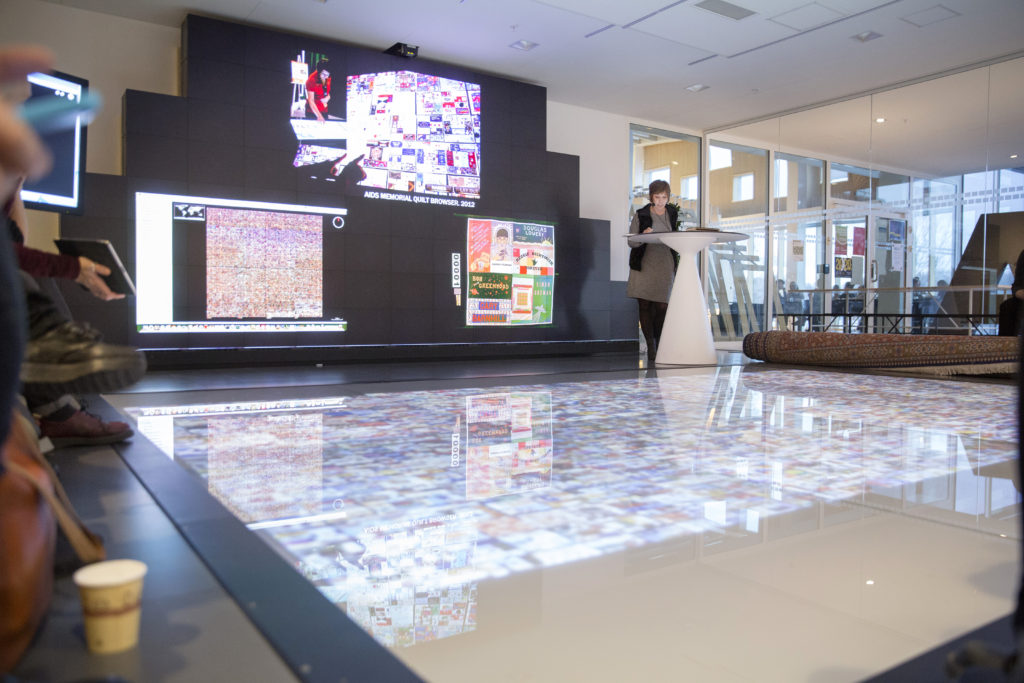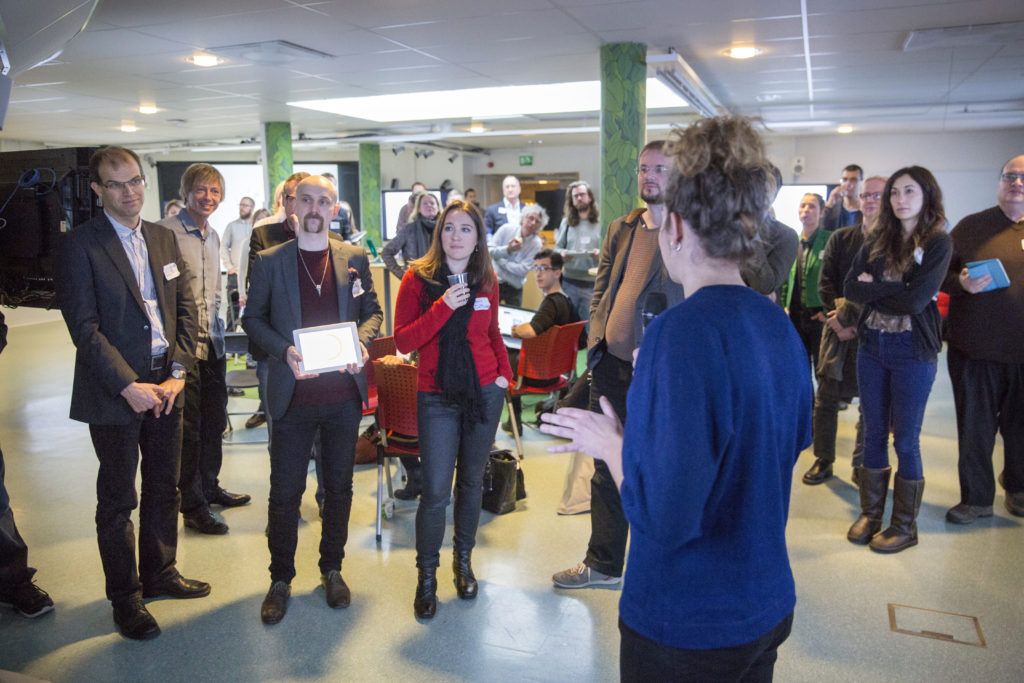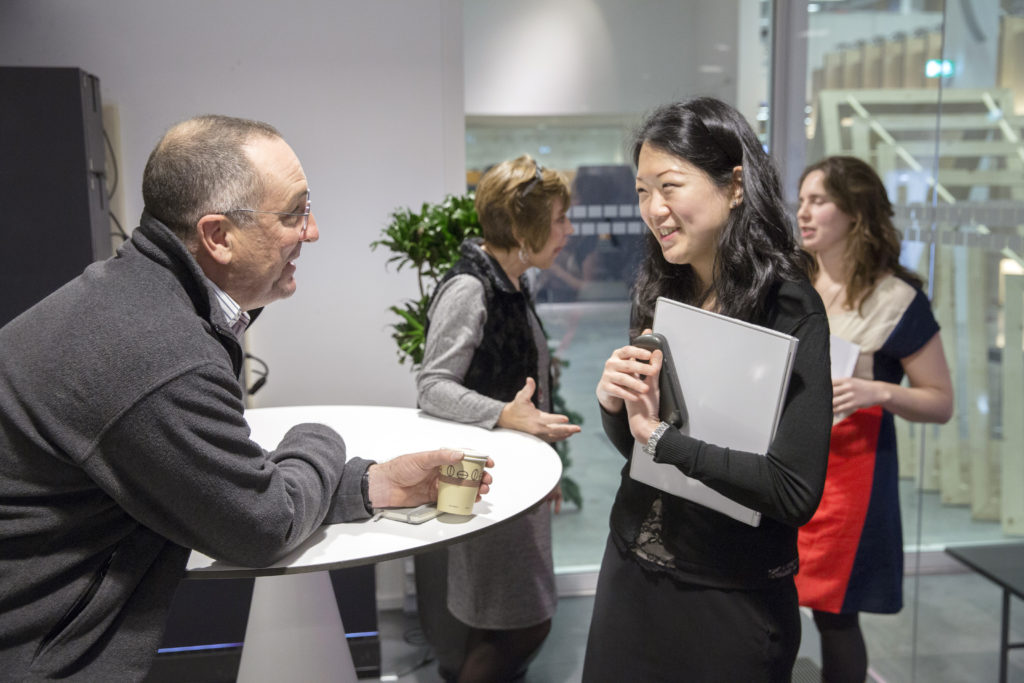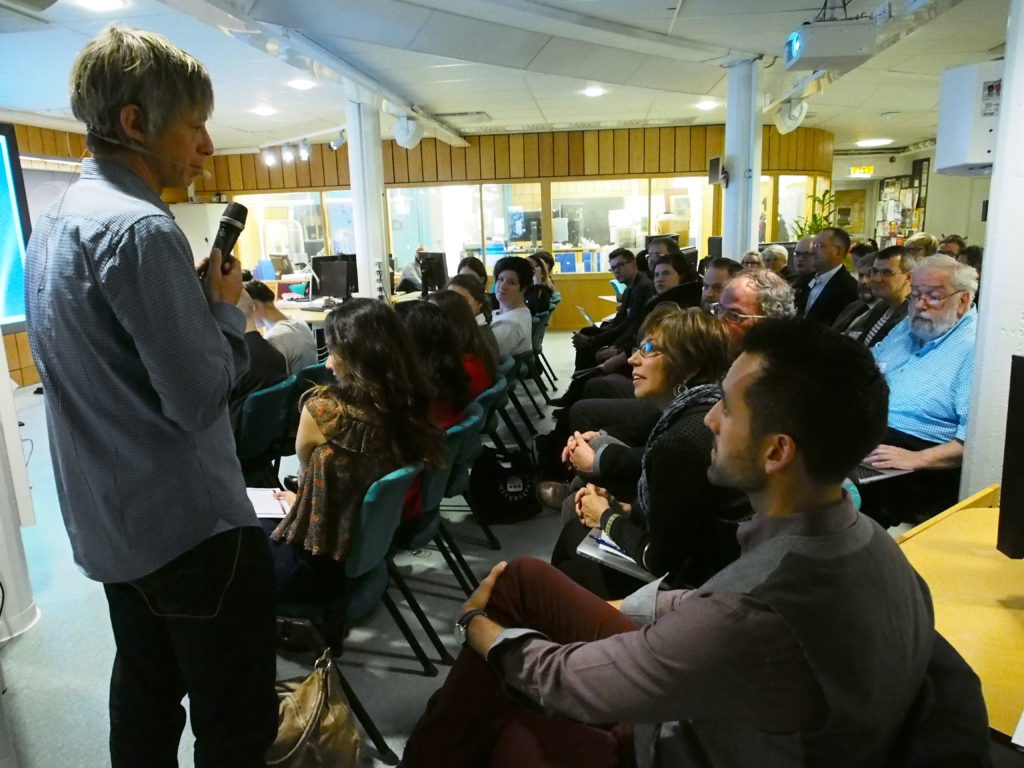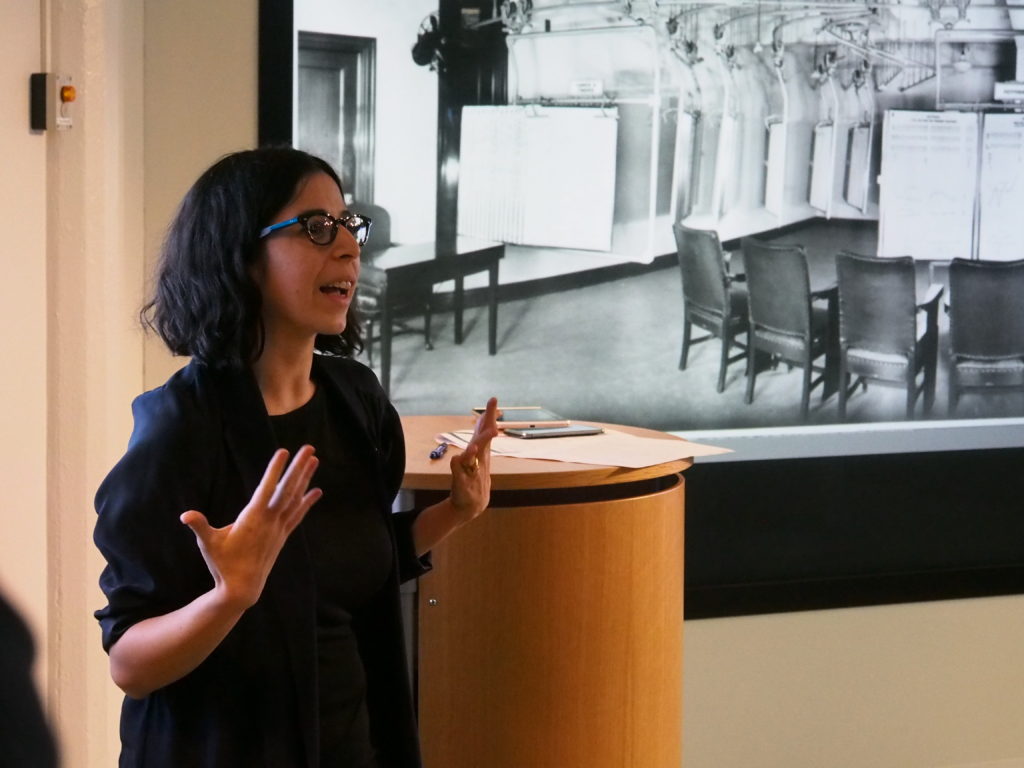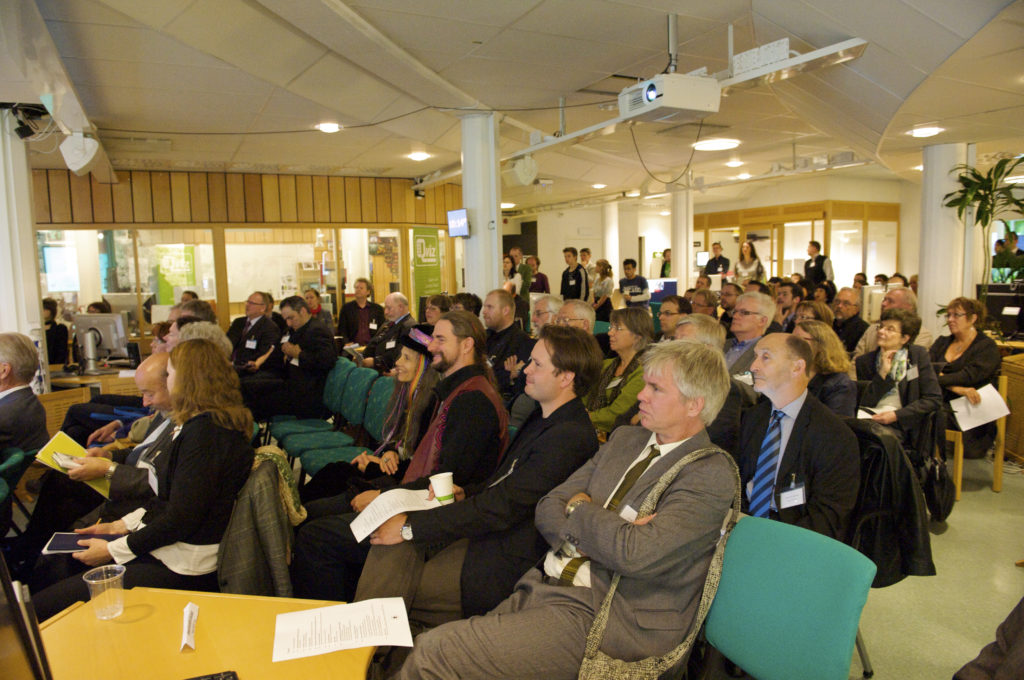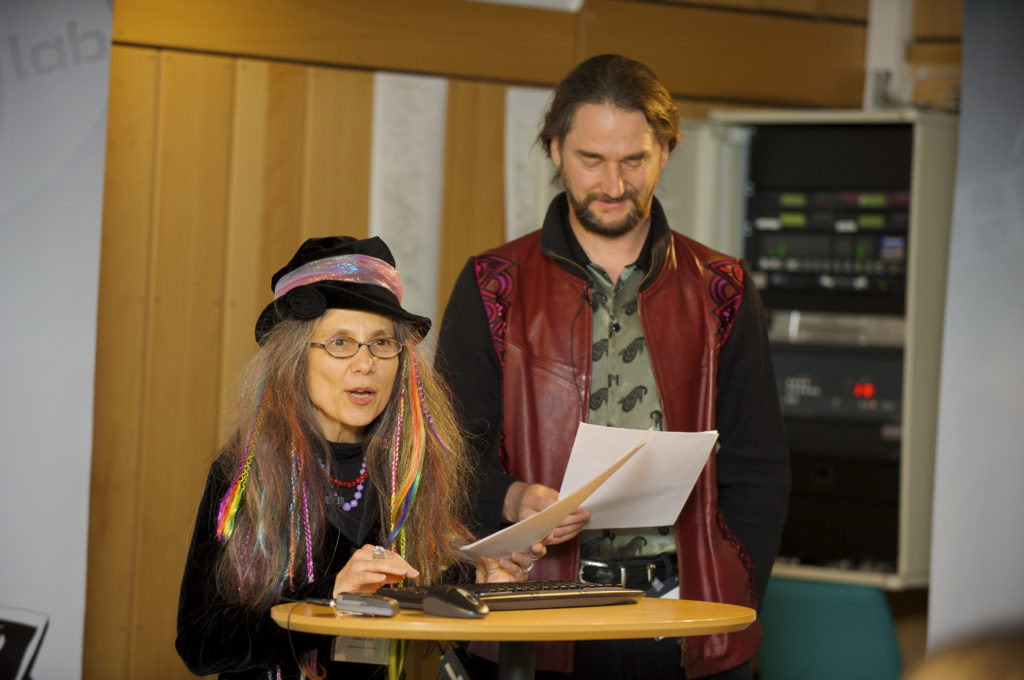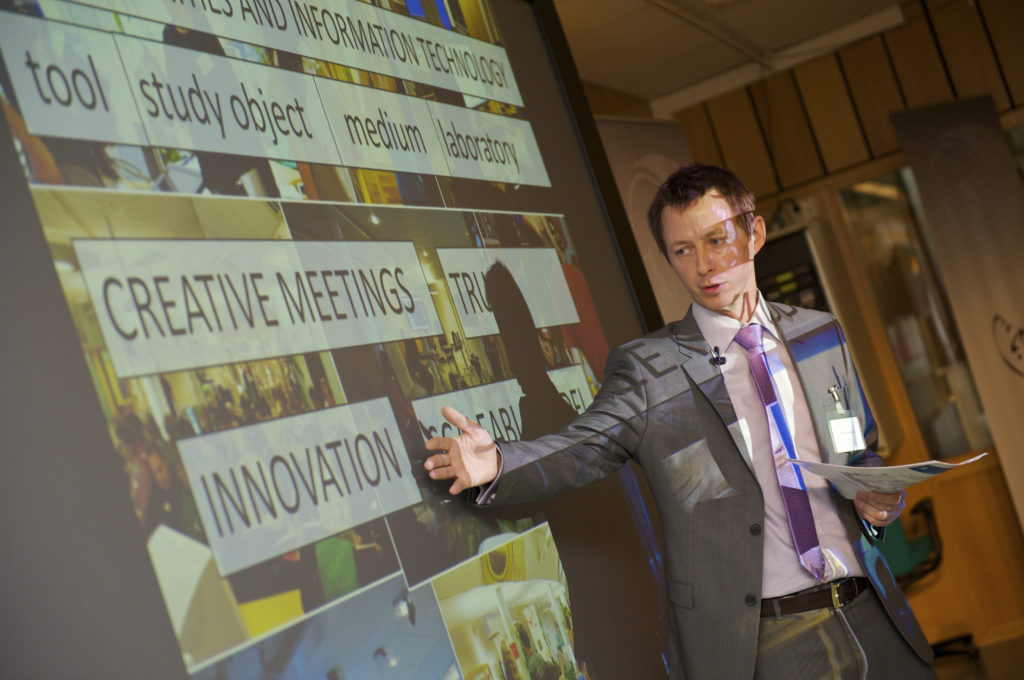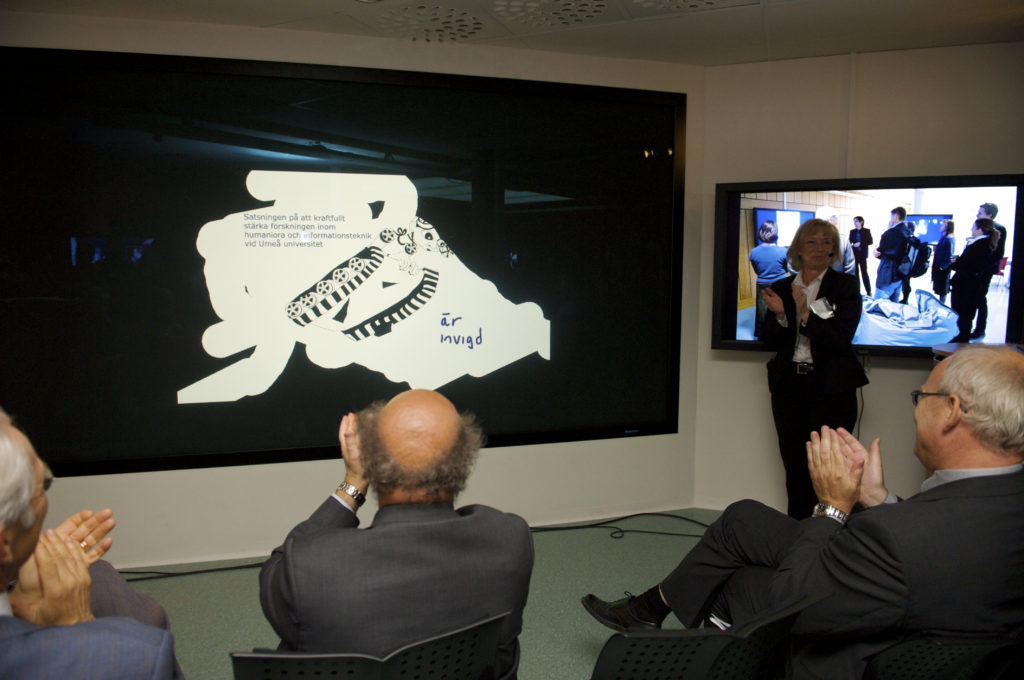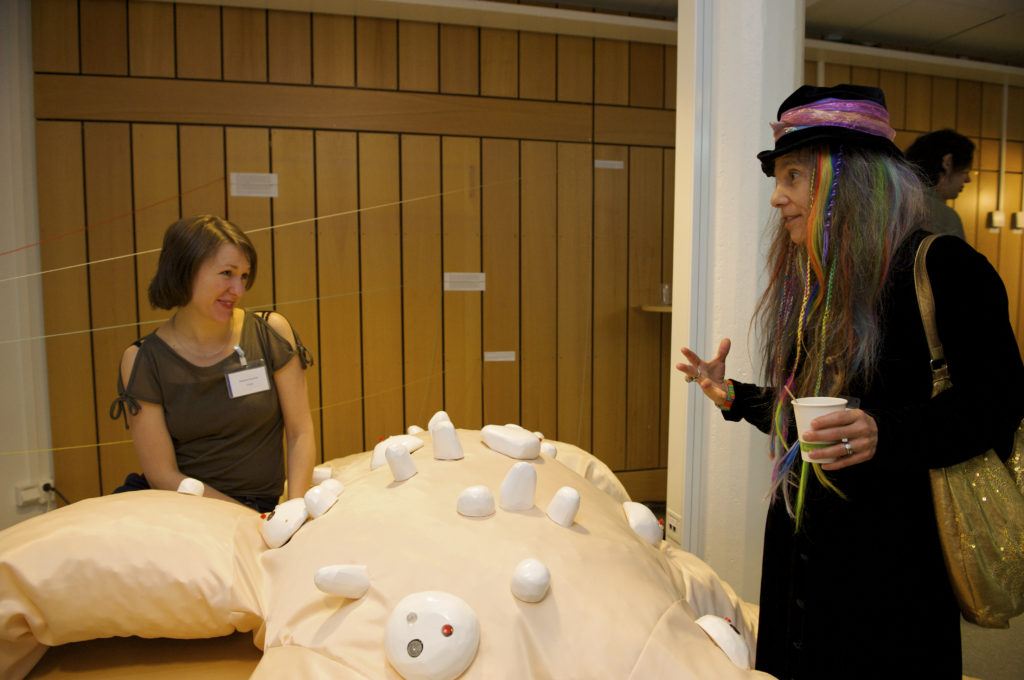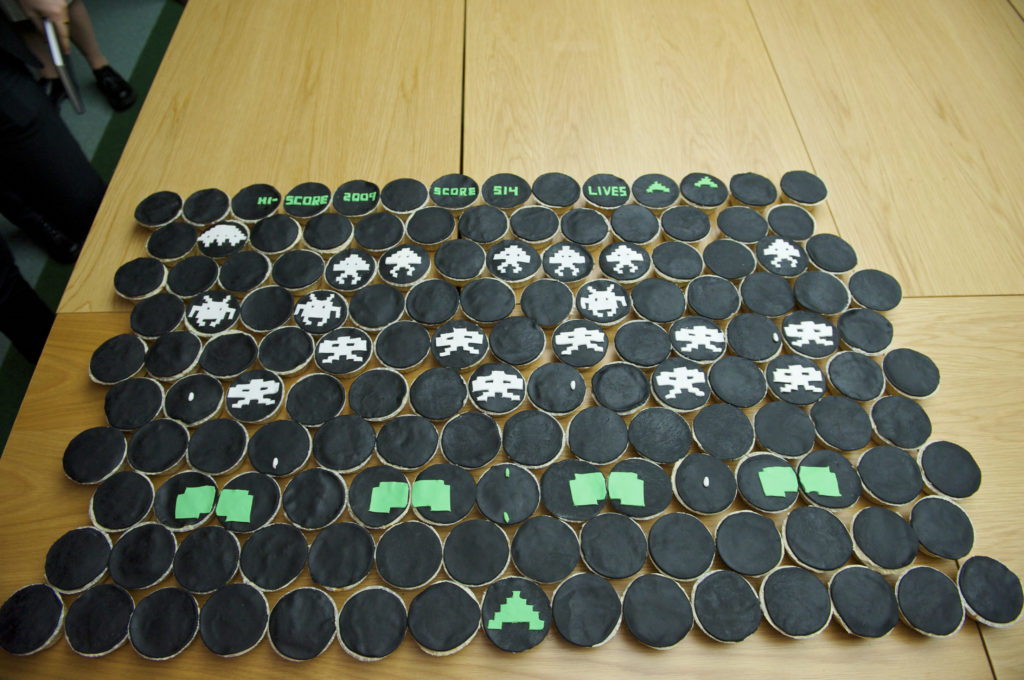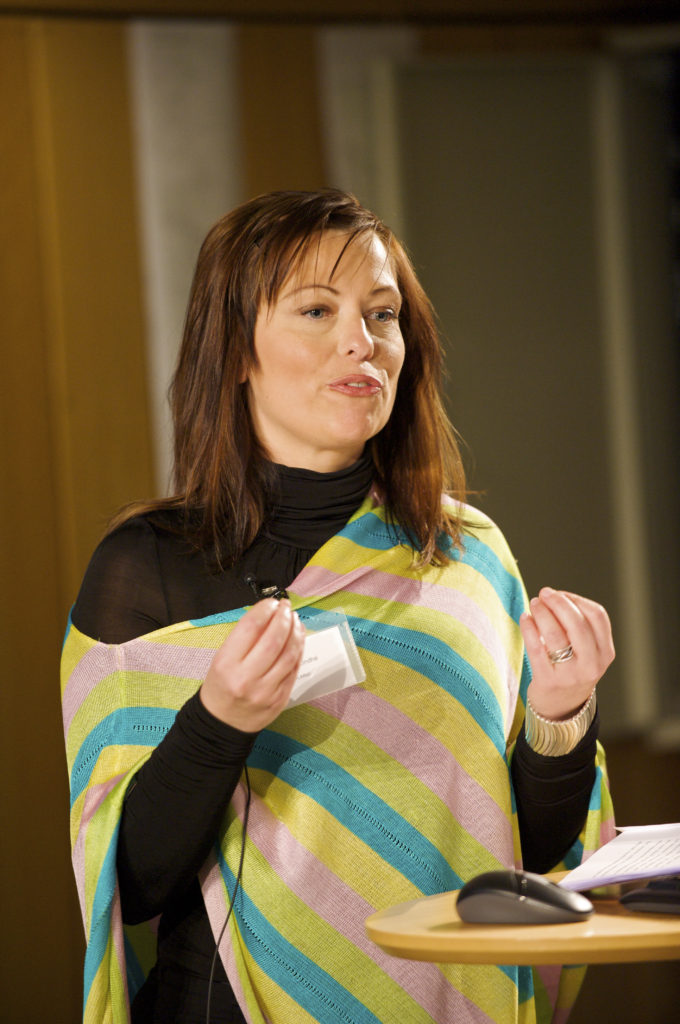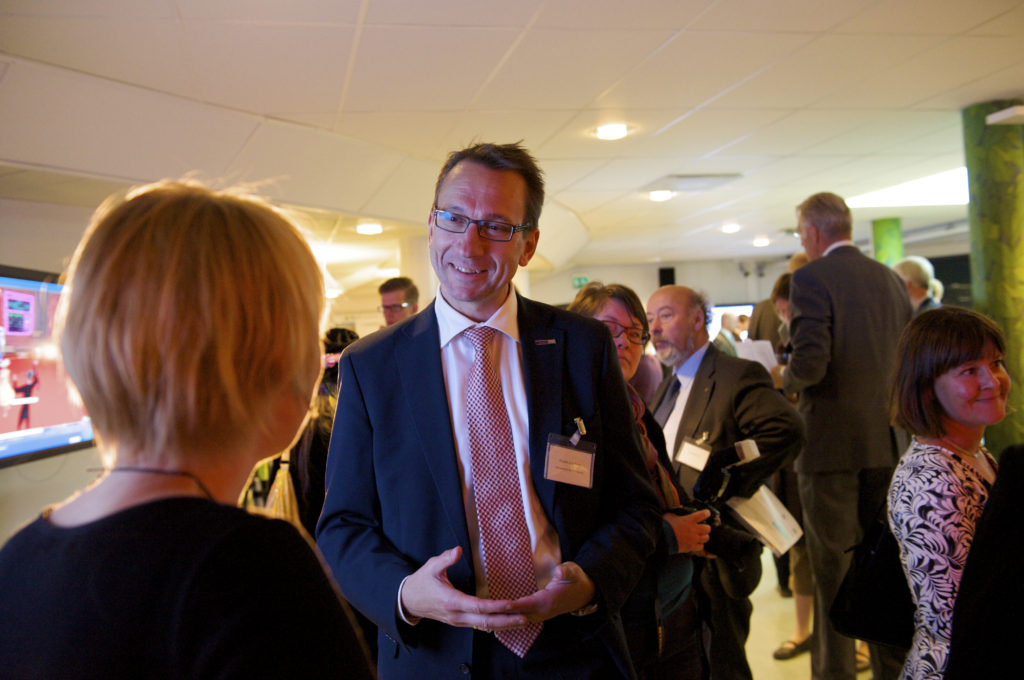Making events has been central to my practice since 2000. I have organized/curated and co-organized/co-curated about 30 large-scale academic events (see below for a list). Many of these have been signature events at institutions such as Umeå University, UCLA, KTH Royal Institute of Technology and the CUNY Graduate Center.
There are three main parts to this site:
Please also see “Some Thoughts on Making Academic Events with Particular Attention to the Mid-Sized Event” for an extended reflection on making academic events.
A note too that many everyday events, such as short courses, outreach activites, art installations, game evenings, shows for visiting delegations, demos etc. are not covered in the below account and list.
On events and event making
Events play an important role in scholarly knowledge production. Such events include meetings, seminars, conferences, workshops, symposia, ignite talks, and thatcamps. These can be formal or informal, physical or digital (or more likely, both), conventionalized or experimental, small or large, and serialized or not.
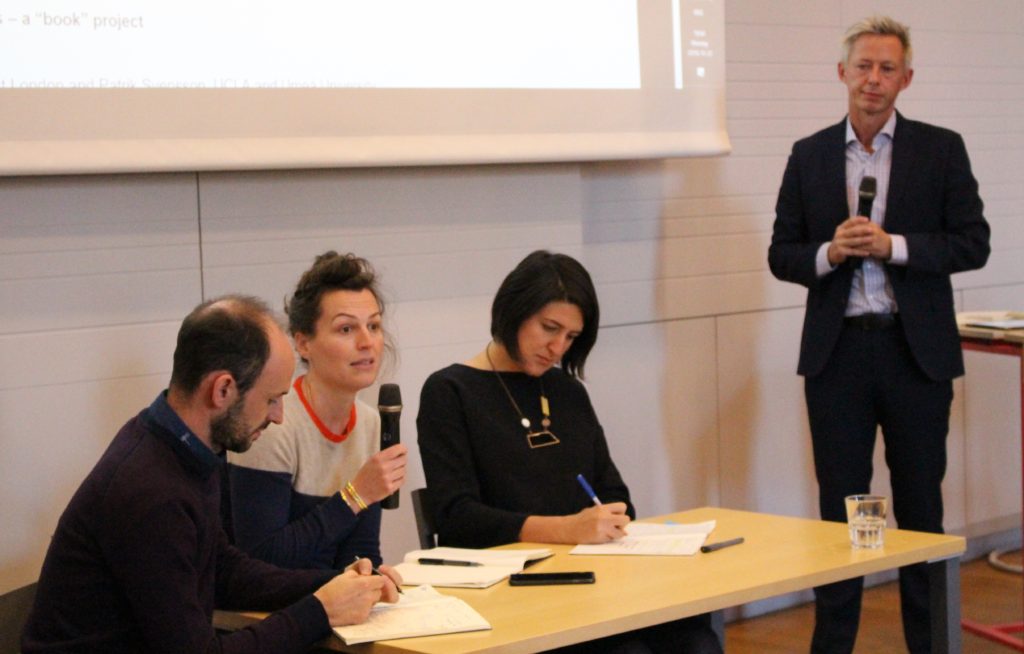
Academic events embed formats, hierarchies, values, performativity and expectations, and a whole range of social and cultural factors. They are part of making knowledge, fostering scholarly identities, and asserting institutional structures and power positions. They depend on infrastructure, space, time, software, resources (not least resources available – or not – at the organizing institution) and people (labor). For example, large serialized conferences are major financial, institutional and logistical projects, and costly not only for the organizing institution, but often also for the participants (a much larger burden for early-career participants than for tenured senior participants). Time is a precious commodity, which is demonstrated through the allotment of time in conference programs and strategies used to hold on to time. Spatial configurations structure conversations and presentation software suggests specific ways of delivering content and telling narratives (see e.g. Erica Robles-Anderson and my article on “‘One Damn Slide After Another’: PowerPoint at every Occasion for Speech”). Some of these templates can and should be shifted.
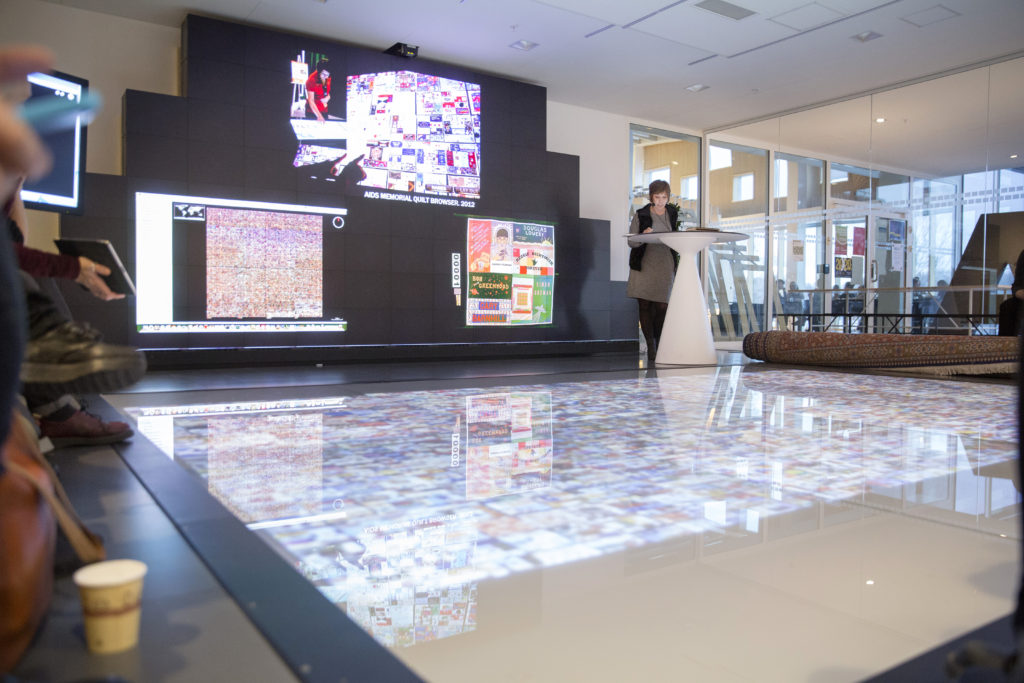
In Big Digital Humanities (Michigan University Press, 2016), I discuss how curatorship and curatorial practice (or lack thereof) play an important role in the shaping of academic events. Event making has been central to my own practice since the early 2000s, as a means of supporting community building and intellectual exchange, moving scholarship further, shifting ways of thinking, bringing people together, and manifesting a set of values (including giving much place to early and mid career scholars and experts, making sure that many get to speak, not reinscribing hierarchies etc.). I realize I have been fortunate and privileged in having had access to resources to carry out this kind of work. Importantly, events never stand by themselves, but are part of long-term intellectual trajectories, institution building, partnership making, and dynamic network creation.
Organizing events is always a collaborative effort. All the events I describe below have been carried out with the help of other people and competencies or they would not have happened. My role has been that of chair and curator (sometimes in partnership with others), which is a role I take very seriously and that comes with large responsibility. Over time and in different configurations, I/we have established practices, formats and a set of values to underpin event making including taking good care of guests, emphasizing that events are something everyone does together (a responsibility not only for organizers, but for everyone participating), trying out new formats (e.g. no presentation software, using local infrastructure, pair conversations, resisting conventional “panel sessions” etc.), giving place to early and mid career participants, having a real commitment to diversity, covering as much of the cost as possible (normally not having a fee) and situating the event locally (instead of doing generic, could-have-been-done-anywhere events).
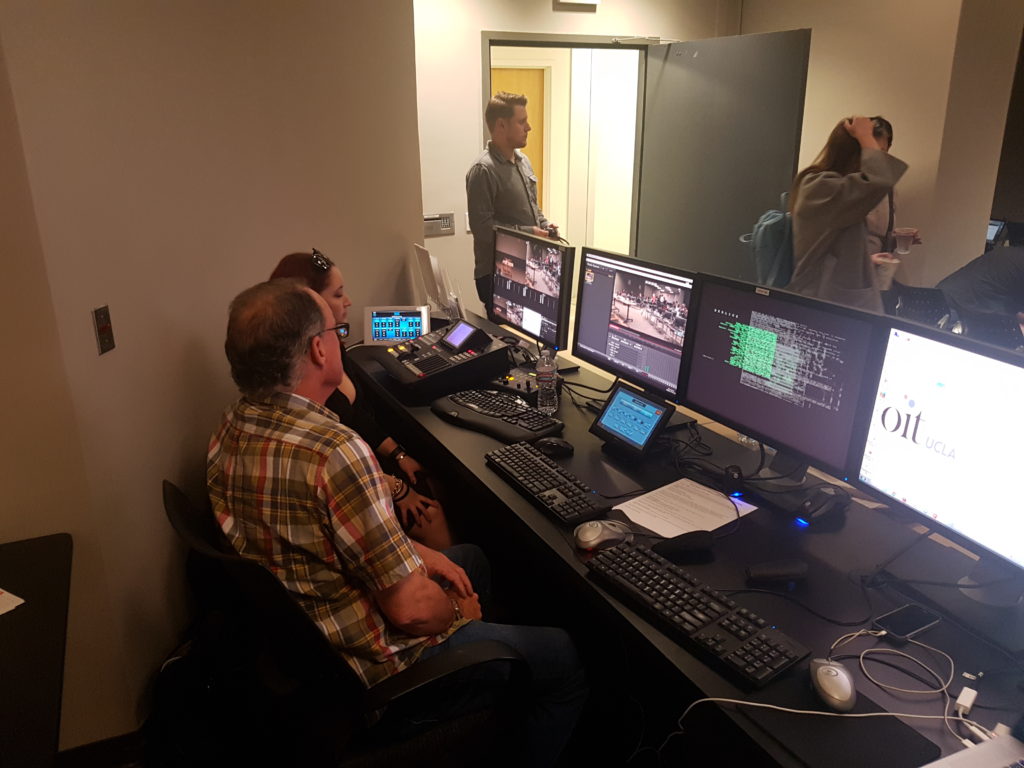
The events listed below have been supported through different institutions and funding agencies including Umeå University, UCLA, the Graduate Center, City University New York, KTH Royal Institute of Technology, the National Library of Sweden, the Wallenberg Foundation, Riksbankens Jubileumsfond, and many others.
The events I curate are often experimental in one way or another, including not using slideware, focusing on conversation (no slides) and thinking carefully about composition, tensions and long-term shifts. They are built around people as well as ideas, and tend to be shaped dynamically with the participants (often in long dialogues preceding the event). They need to give time and place for meaningful conversation, be multivocal, experiment with formats and expressions, challenge hierarchies and power structures, move things forward intellectually and constructively in a collaborative and supportive fashion, and ideally result in new findings, unexpected network building, shifting of thinking, many threads moving forward, and long-term traces. I also strongly believe that events (and academia in general) should be welcoming, open, kind, generous and sharp.
My academic events site contains information about upcoming events and some resources related to event curation. Another resource is “Supporting intellectual exchange and community building: A Google Docs-based discussion” with a group of HUMlab event participants (including Shannon Mattern and Nishant Shah) that was published in a booklet published in 2014. I put together five papers on presentation tech 2015-2016 (“(I): Preamble”, (II): Performing Scholarship”, “(III): Angled Screens”, “(IV): Curating events”, “(V): Software and hardware”). After the Genres of Scholarly Knowledge Production in 2014, we put together a post-conference collection (in Medium, including my own rather extensive post-curatorial statement, Miriam Posner’s piece on Academic space-time and Nick Sousanis on “Reframing the Discussion”). There is of course much material out there (will build a resource elsewhere, but to include one example here: I enjoyed reading Lilly Irani’s 2015 piece on “Hackathons and the Making of Entrepreneurial Citizenship in Science, Technology & Human Values, and Margaret Mead’s and Paul Byers’ The Small Conference: An Innovation in Communication from 1968 is a great resource).
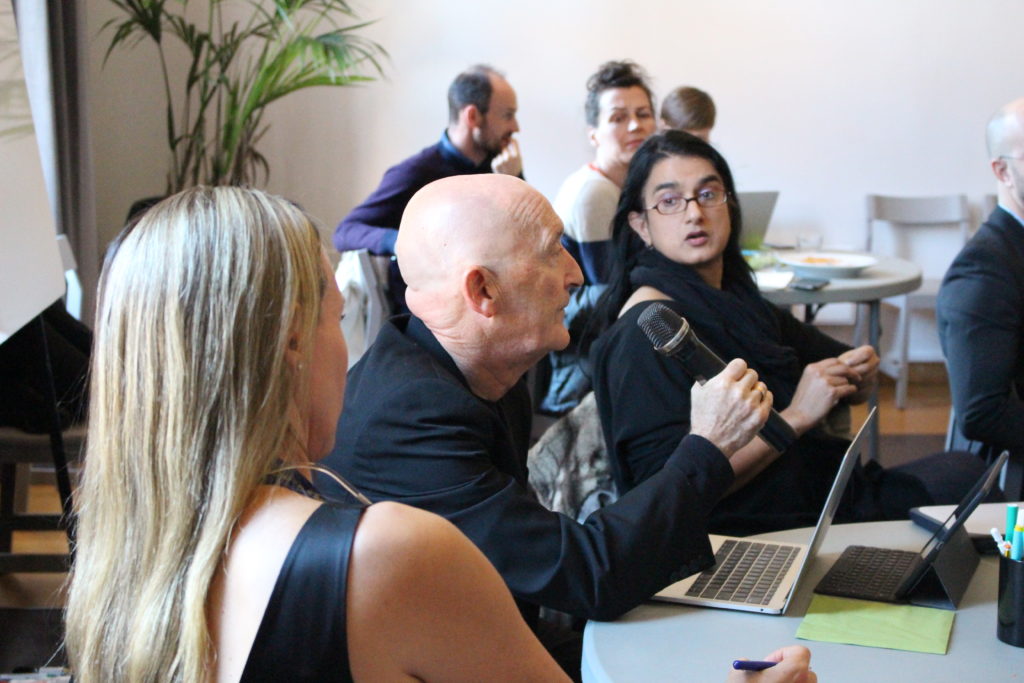
In my own work, academic events have been a place to collaboratively test ideas, explore and trace key themes, support community building, make institutions, manifest values and do experimental work. Over the last couple of years I have increasingly become interested in long conversational formats and how to break down barriers between invited and registered participants. An example is trying to move away from on-stage panel sessions (which in many ways is a problematic format) to embedded dialogues (with little if any time for “presentations”). I am also very interested in changing the valuation of time as something you must hold on to, use as much as possible of, protect to more fluid formats (e.g. stacked pair conversations).
Although I think the events described below were always a way to bring together critical and constructive perspectives, this is now much more explicit in my work, in particular in relation to “making change”. This was already important to me earlier, but my time in NYC and LA (and more importantly, the people, networks and challenges I have came across) have taken this interest more strongly to outside the academy. Academic events also provide an opportunity to critique our own modes and systems of knowledge production – which are often taken for granted and not systematically critiqued – and simultaneously engage with those constructively (changing, tweaking, innovating, imagining and manifesting). Such changes can often be small, sometimes almost insignificant, but they ‘speak’ and are meaningful, not least when aggregated and part of an overall set of values and conceptual grounding.
See below for an experimental, incomplete portfolio of events I have curated over the last twenty years (typically as chair, or co-chair). Click on an event title to find out more about the topic, those involved, and to see documentary images.
(I am in the process of adding full photo credits/descriptions and some additional materials).
List of curated events
1) Curated events 2015-2020 (reverse order)
Humane Infrastructures
March 9-10, 2020, UCLA
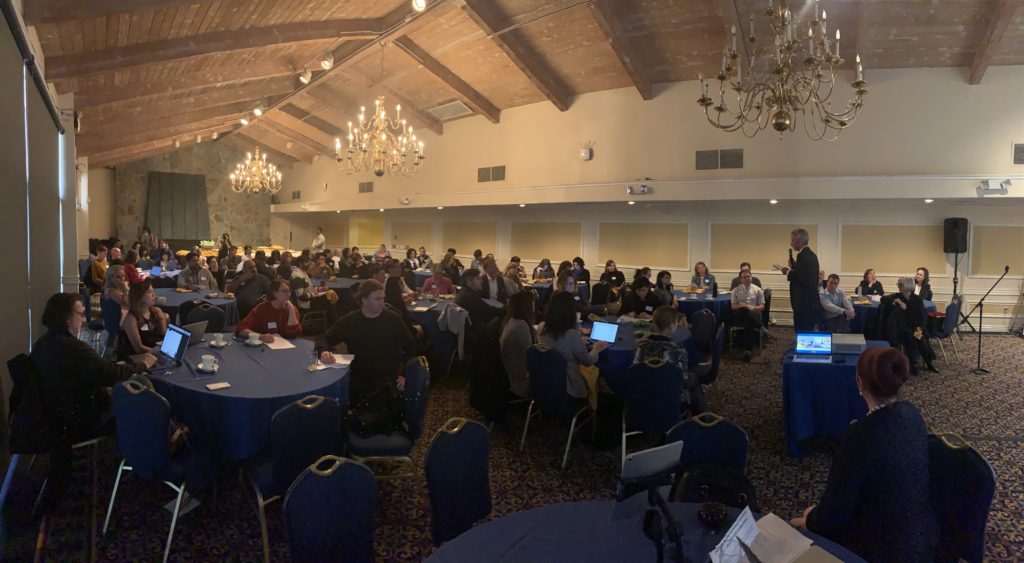
Humane Infrastructures brought together leading scholars, experts, artists, university administrators, politicians, and community members to consider and outline how we can build long-term human/humanities-driven capacity to collaboratively critique, imagine, design, and build civic and academic infrastructures at scale. One of the key themes was (In)humane Infrastructures of Homelessness.
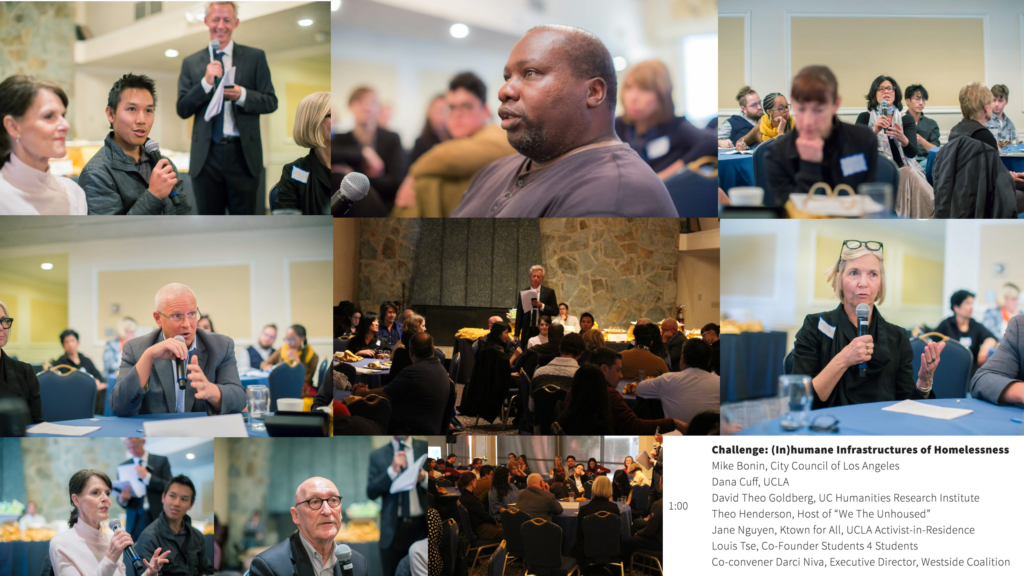
Third Digital Humanities Stockholm event: Critical-Constructive Engagement
May 21, 2019, KTH Royal Institute of Technology
Part of a strategic collaboration between KB and KTH. This event focused on critical-creative/constructive engagement in relation to digital humanities and cultural heritage institutions. Invited participants talked about their projects which then developed into a long conversational session, which was followed by talk on intelligence on the move. Invited participants included: Nora Al-Badri (artist, Berlin), Johanna Drucker (UCLA, Yale, via Skype), Marie Louise Juul Søndergaard (Postdoc in Digital Women’s Health, KTH), Jeffrey Schnapp (Founder/Faculty Director of metaLAB at Harvard University), Pelle Snickars (Professor of Media Studies, Umeå University). The event was carried out with the help of Danielle Morgan.
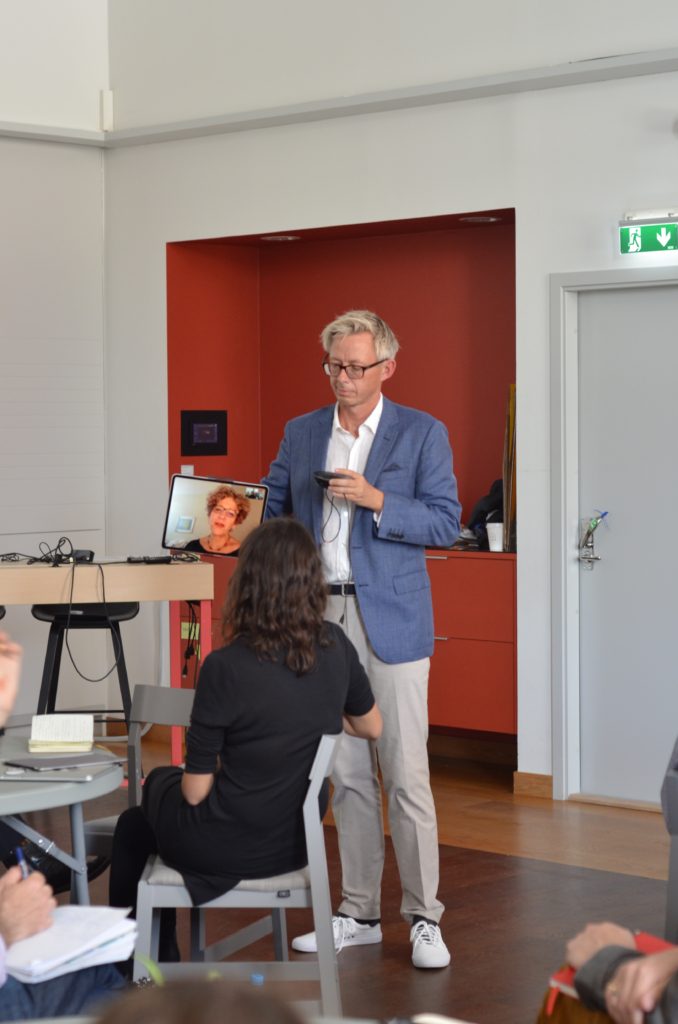
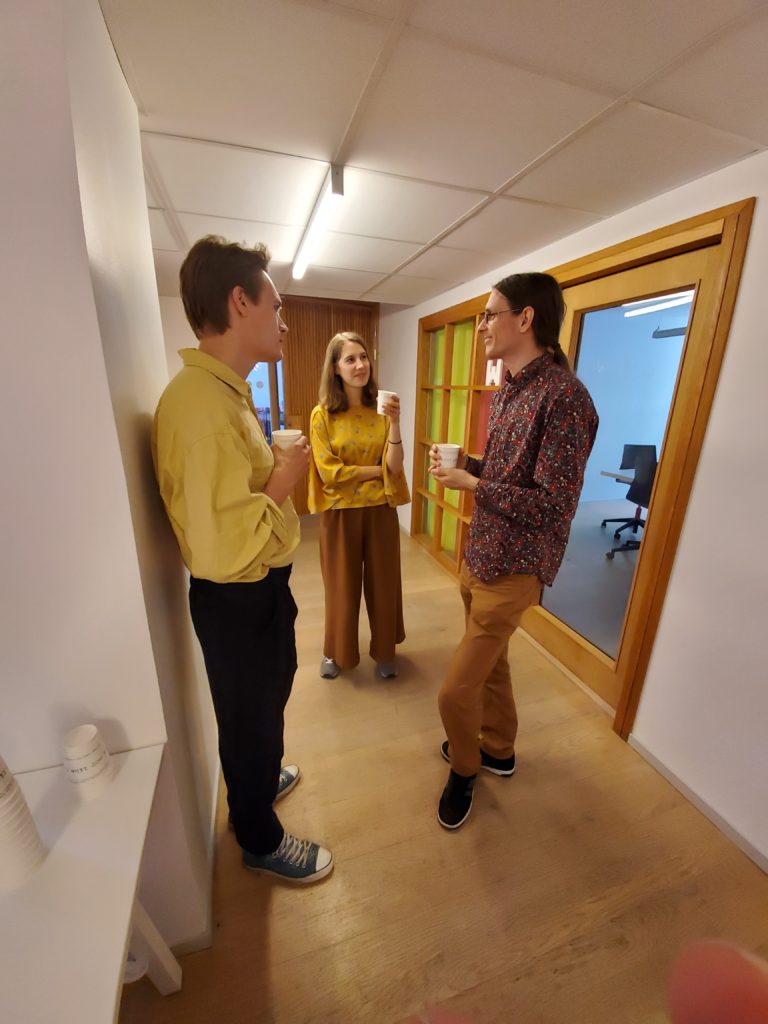
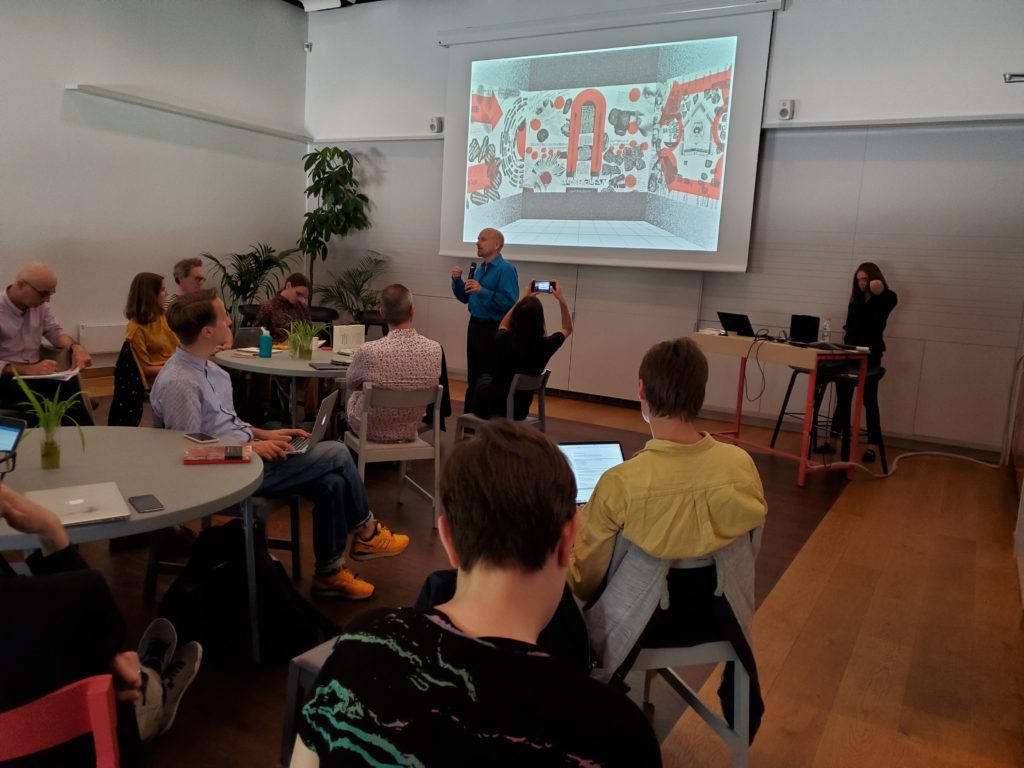
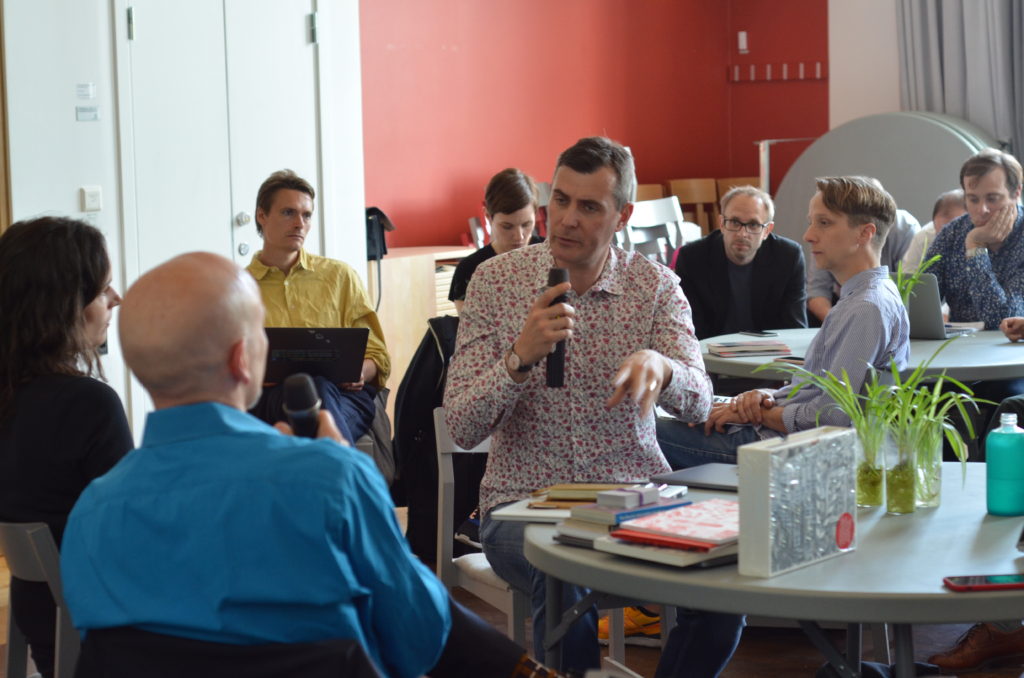
CROWDS
A Humanities Tech KTH event
May 20, 2019, KTH Royal Institute of Technology
This event dealt with crowds in terms of history, politics, simulation, visualization and urban development. Invited speakers were Dan Hill (Vinnova), Jeffrey Schnapp (Harvard) and Anna Ådahl (Royal College of Art). The format was a long-form dialogue (2,5 hours) with brief initial perspectives and examples from the invited participants. The event was carried out with the help of Danielle Morgan.
Second Digital Humanities Stockholm event on the Landscape of DH
March 13, 2019
Part of a strategic collaboration between the National Library of Sweden and KTH Royal Institute of Technology. A key theme was the the landscape of DH in the region and the main part of the event was a semi-structured conversation where three groups (each around one round table) engaged in conversation amongst themselves and the moderator before opening up to everyone. The three groups were heads/representatives of university libraries, early/mid-career scholar and artists, and representatives of national cultural heritage institutions. An additional theme for the day was interaction design. Invited participants included Lars Björk (National Library of Sweden), Christina Fredengren (National Historical Museums), Jonas Gilbert (Södertörn), Vendela Grundell (Stockholm University), Maria Haglund (KTH), David Haskiya ( Swedish National Heritage Board), Kia Höök (KTH),and Benjamin Martin (Uppsala University). The event was carried out with the support of Danielle Morgan (who was also in the program).
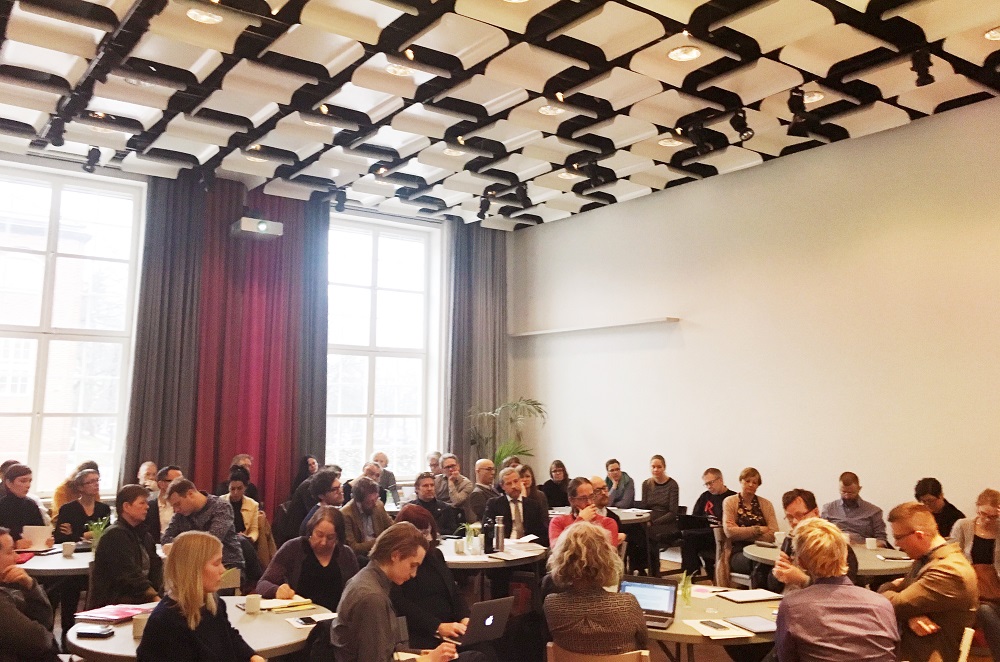
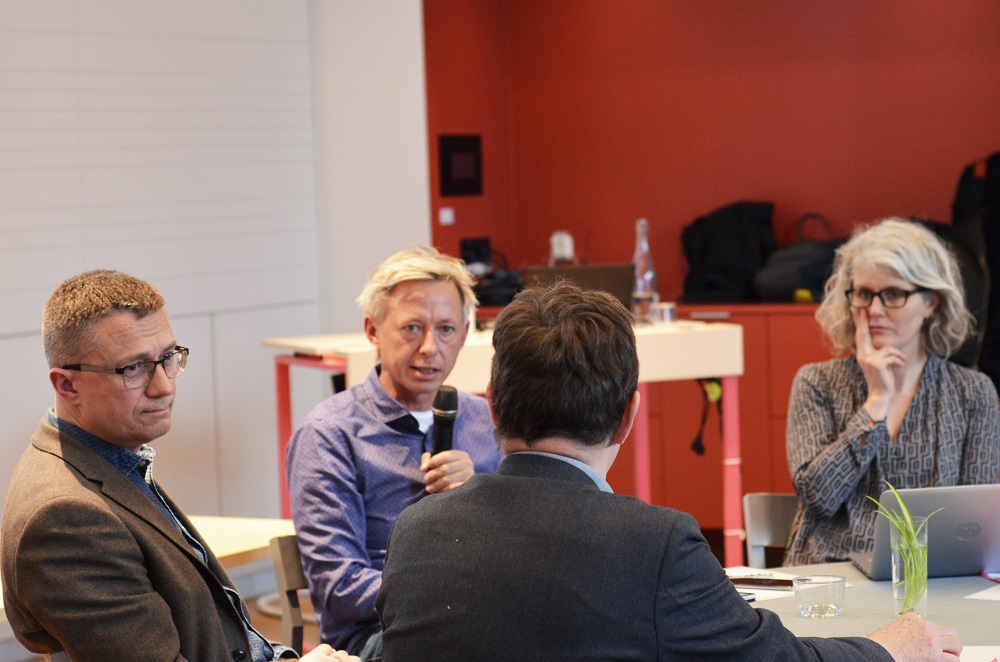
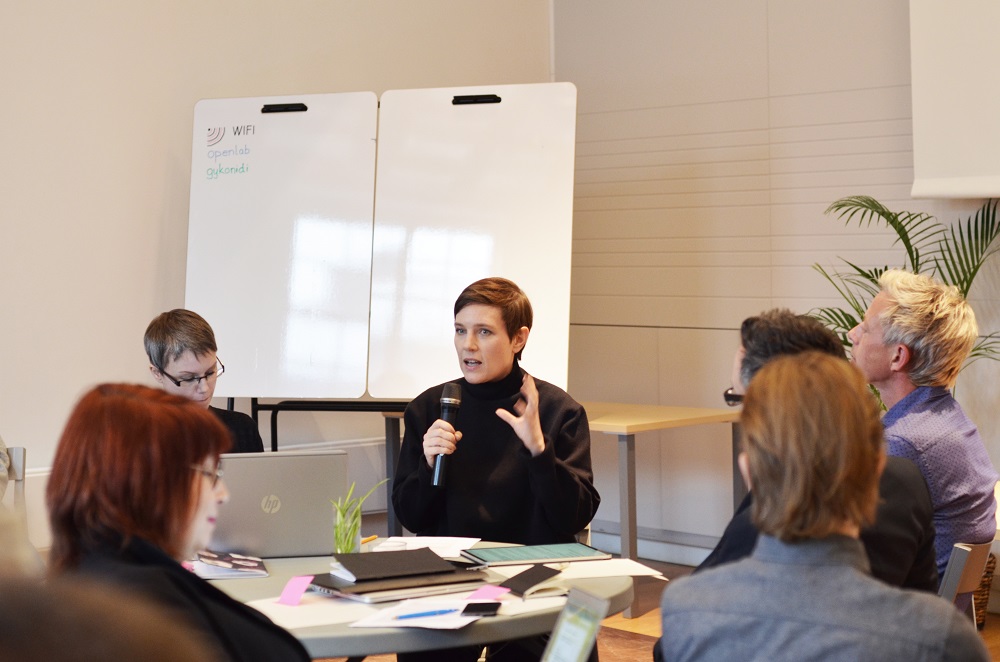
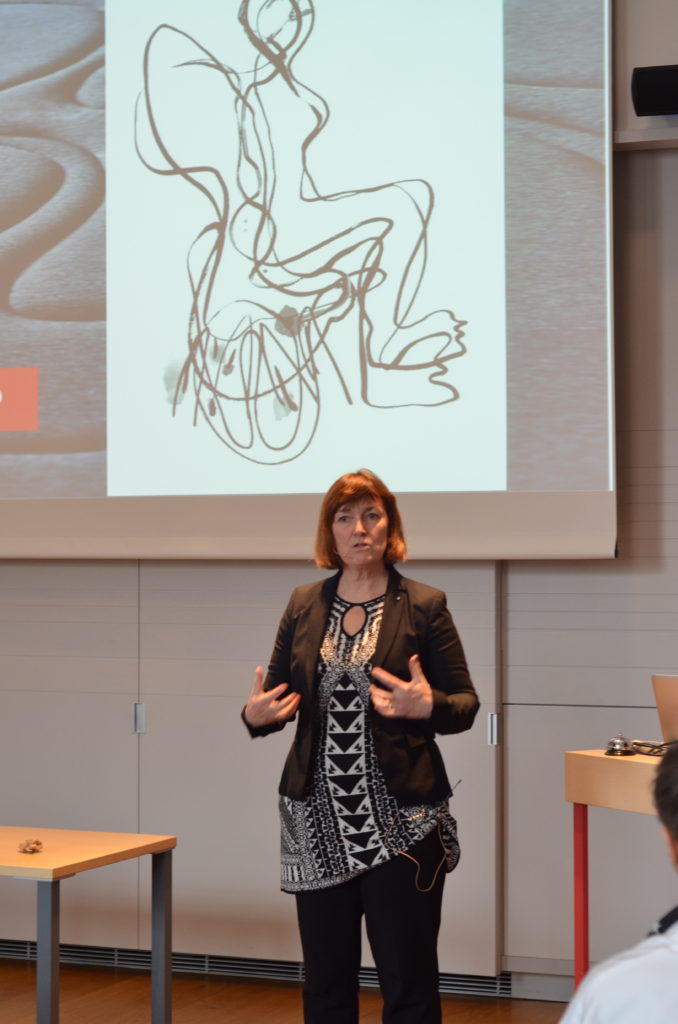
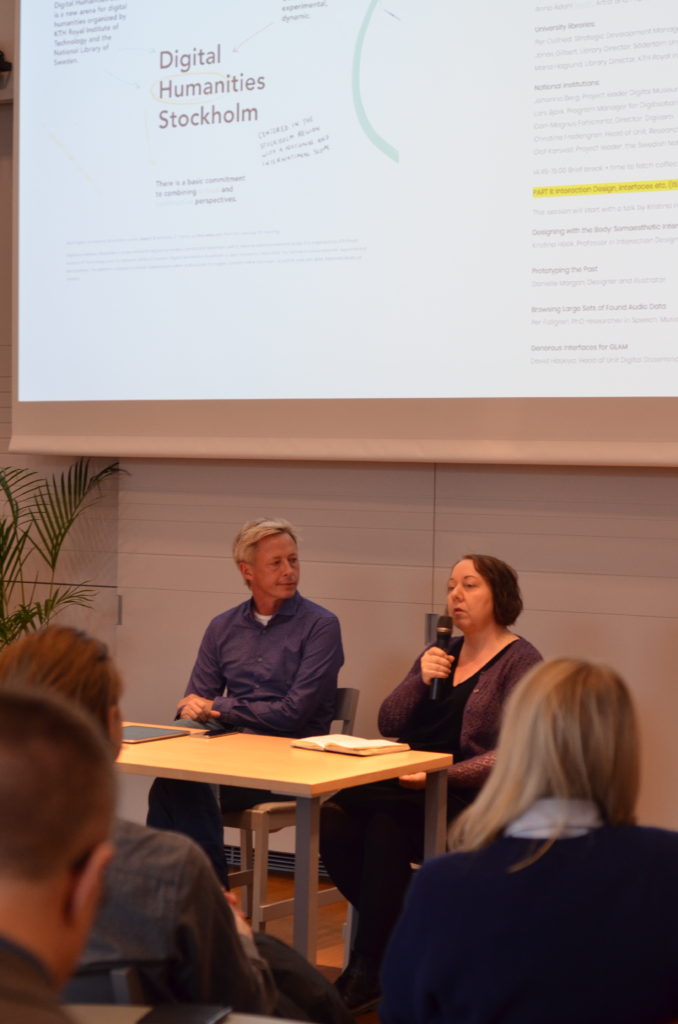
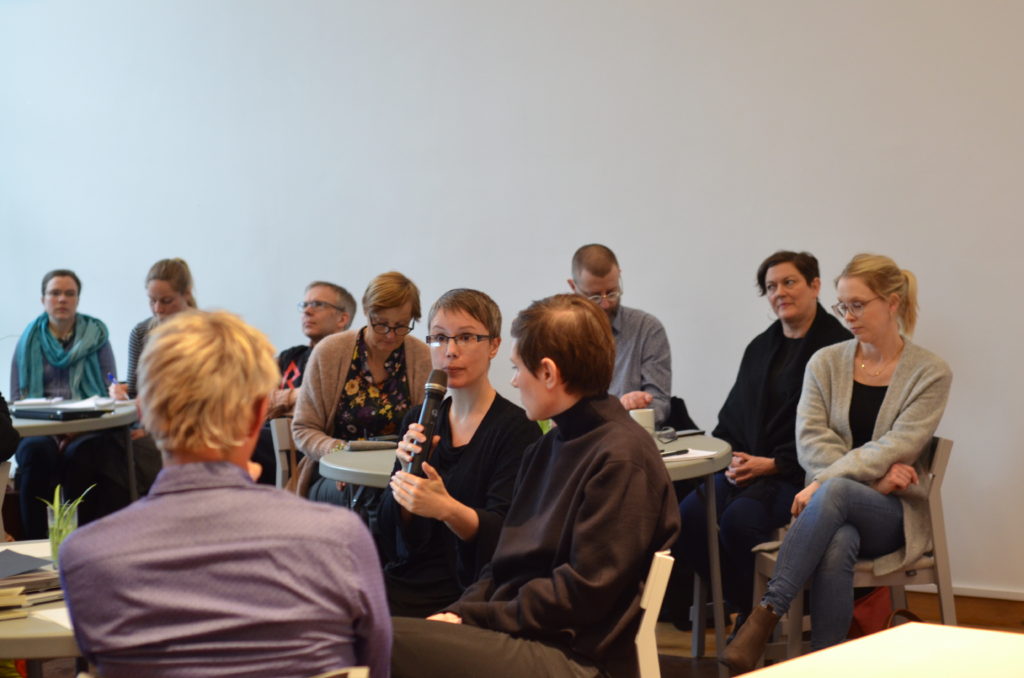
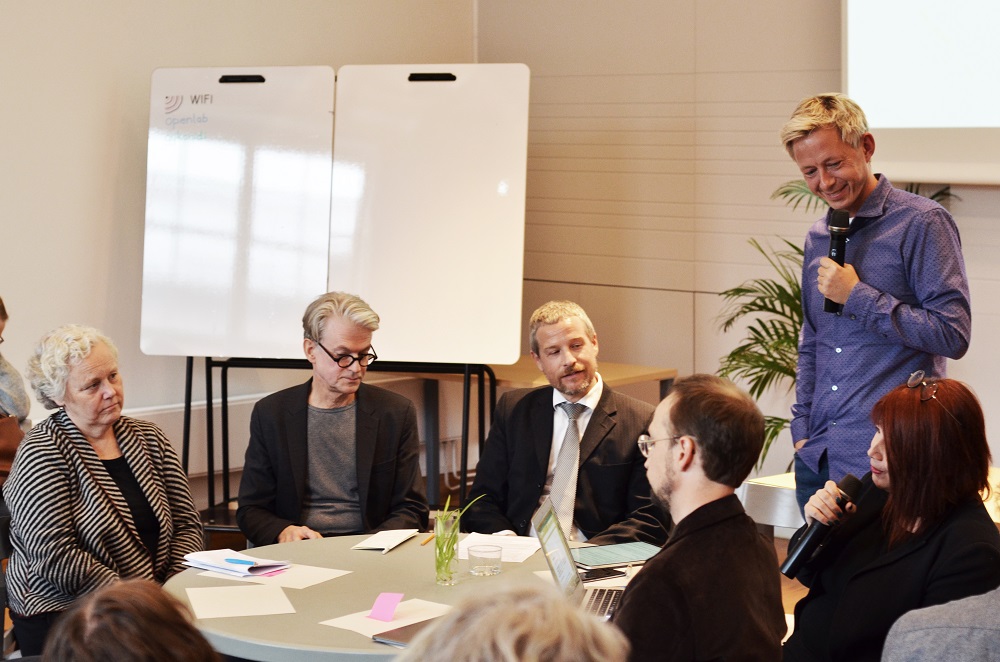
Humanities Tech KTH events, Jan 30, 2019
Humanities Tech KTH events explore the intersection of the humanities, human and technology with a particular focus on critical and constructive engagement with socio-technological systems.
Analyzing Hate Platforms, Fighting Hate Crimes
Daniela Agostinho, University of Copenhagen
Kenneth Bodin, Algoryx Simulation and Näthatsgranskaren
Raazesh Sainudiin, Uppsala University
Nishant Shah, ArtEZ University of the Arts
Tara McPherson, University of Southern California
Feminist in a Software Lab
Marie Louise Juul Søndergaard, KTH
Tara McPherson, University of Southern California
Nishant Shah, ArtEZ University of the Arts
Jenny Sundén, Södertörn University
Anna Wahl, KTH
Celina Zander, KTH
AI for Survival
Nishant Shah, ArtEZ University of the Arts
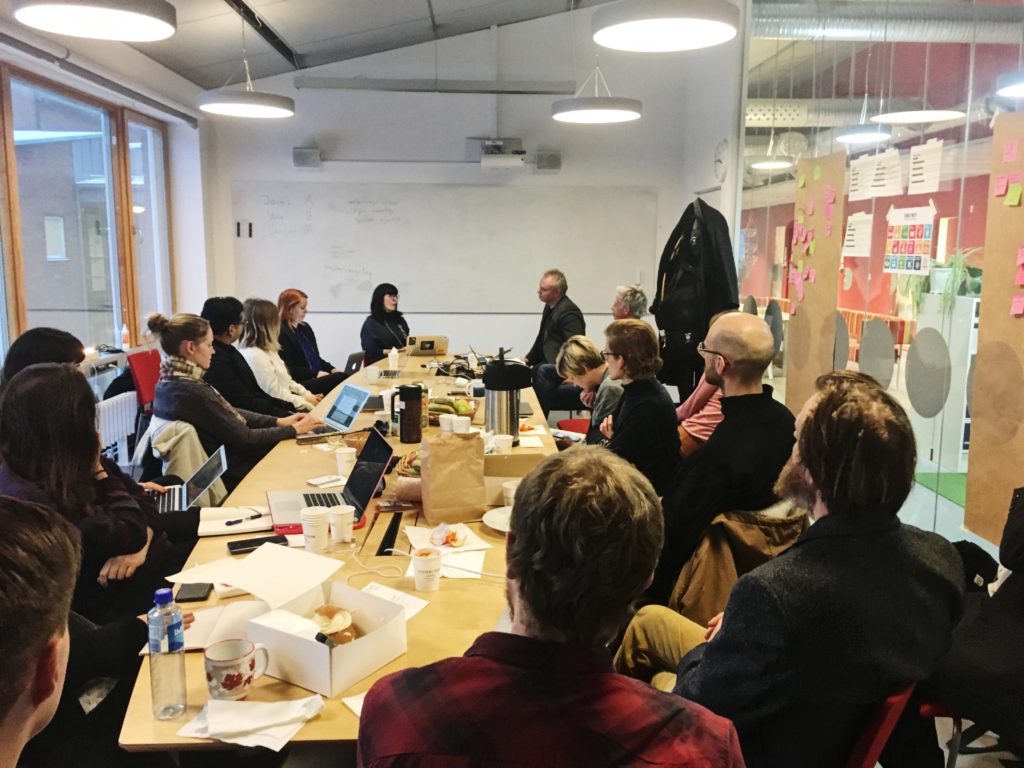
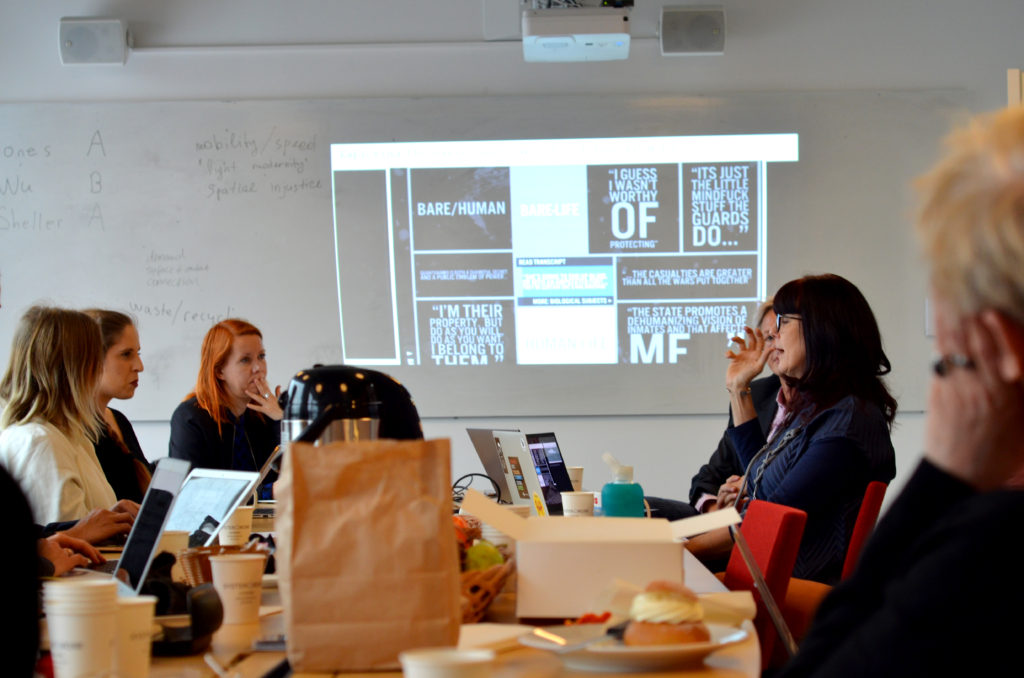
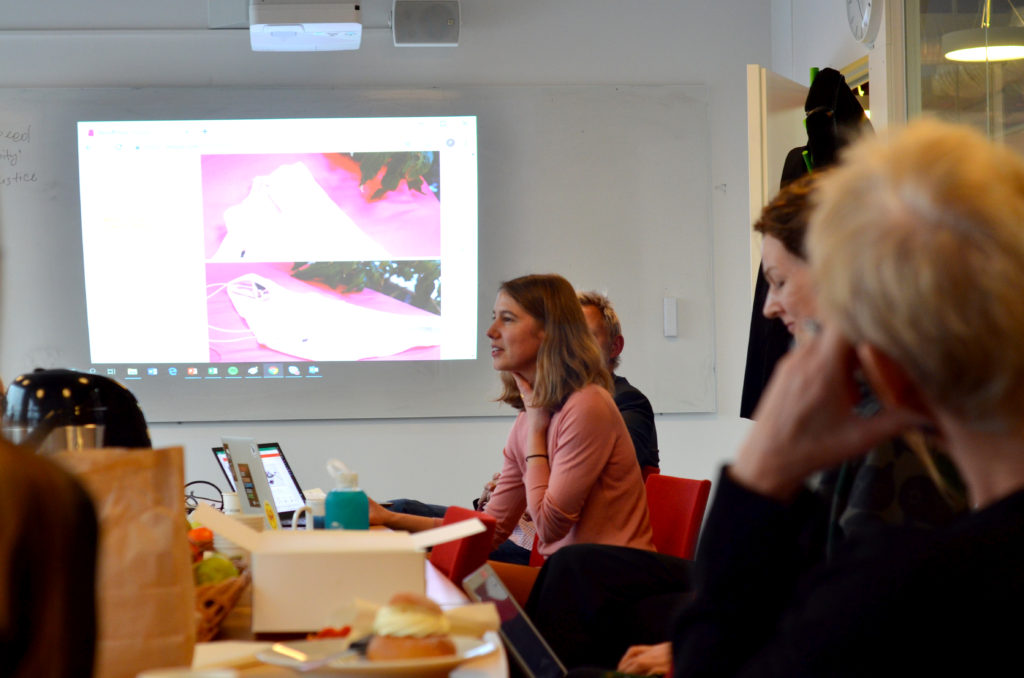
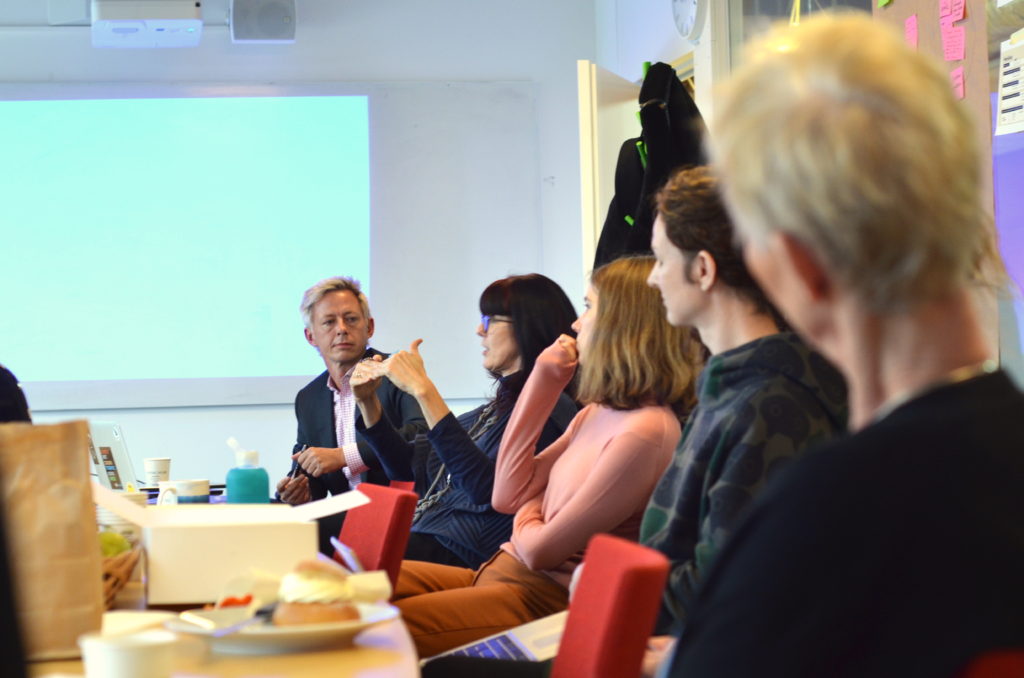
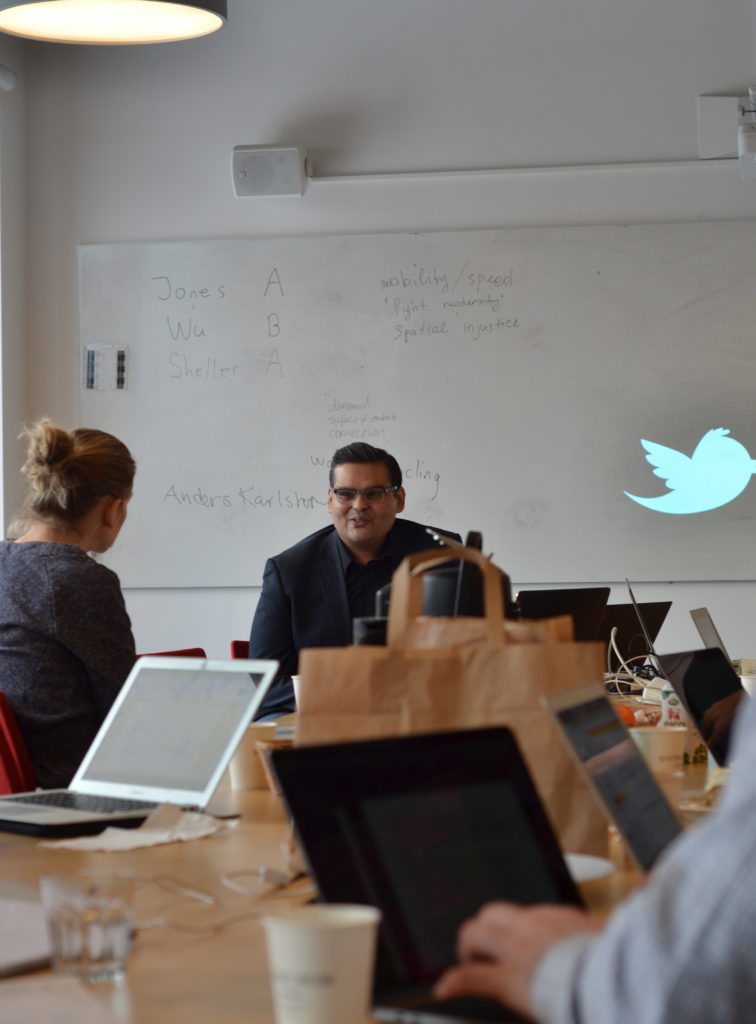
Inaugural Digital Humanities Stockholm event
The National Library of Sweden
Jan 29, 2019
KTH in collaboration with the National Library of Sweden (KB) and part of a strategic collaboration between KTH and KB. The main theme was Structure, Vulnerability and Uncertainty in Data. About 90 people attended including the president of KTH and the National Librarian. Invited participants included Nanna Bonde Thylstrup (Aarhus University), Lorna Hughes (University of Glasgow), Tara McPherson (University of Southern California) and Sverker Sörlin (KTH). Program, photos and all videos here.

Making Change through the Humanities: Institutes, Ideas and Infrastructures
KTH Royal Institute of Technology
Oct 22-23, 2018
This was a high-profile international workshop at KTH organized with the support of the Riksbankens Jubileumsfond (Description and program). Invited participants included David M. Berry (University of Sussex), Gargi Bhattacharya (University of East London), Geoff Crossick (University of London), Kate Elswit (Royal Central School of Speech and Drama, University of London), David Theo Goldberg (UC Humanities Research Institute), Sara Hendren (Olin College), Lilly Irani (UCSD), Marisa Parham (Amherst College), Erin Rose Glass (UCSD) and Sverker Sörlin (KTH). The workshop was carried with the support of KTH and with the assistance of Francesca Albrezzi, UCLA.
The guiding question for the workshop was: How do we design the humanities (institutions, organizations, infrastructures, processes, policies) and build capacity to best meet current and future societal and scholarly challenges? Expected responses included: A) driven by humanistic and human considerations, curiosity and agendas; B) open to many different types of knowledge, practice and making (including art practice); C) collaborative (and not about the humanities in isolation); D) intellectual and critical (not just institutional or infrastructural); and E) anchored in particular examples, practices, processes, and infrastructures.

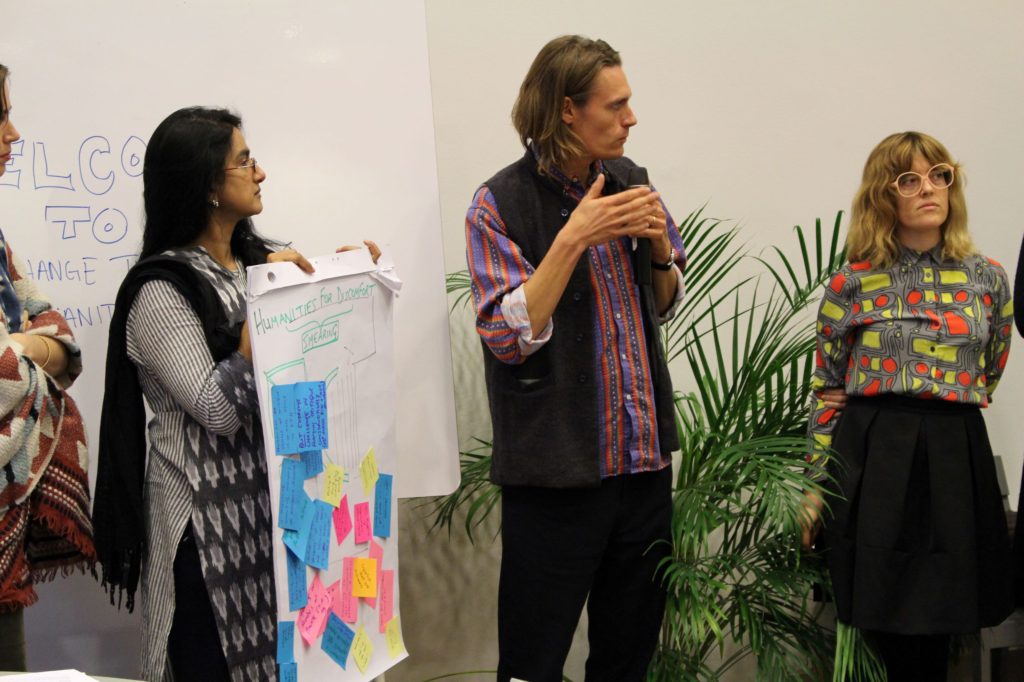
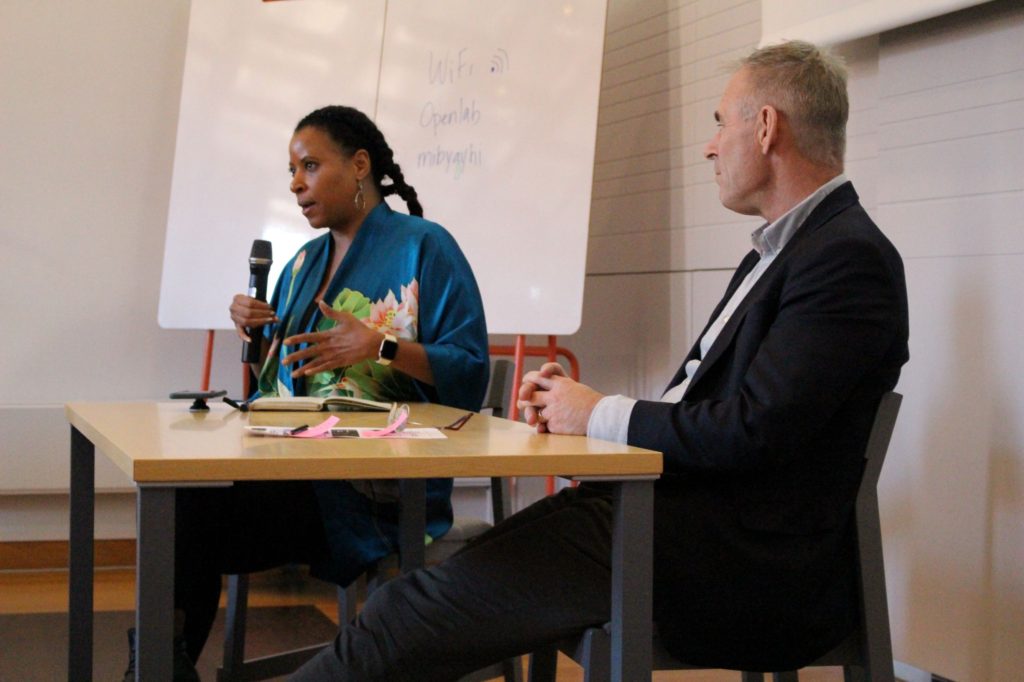
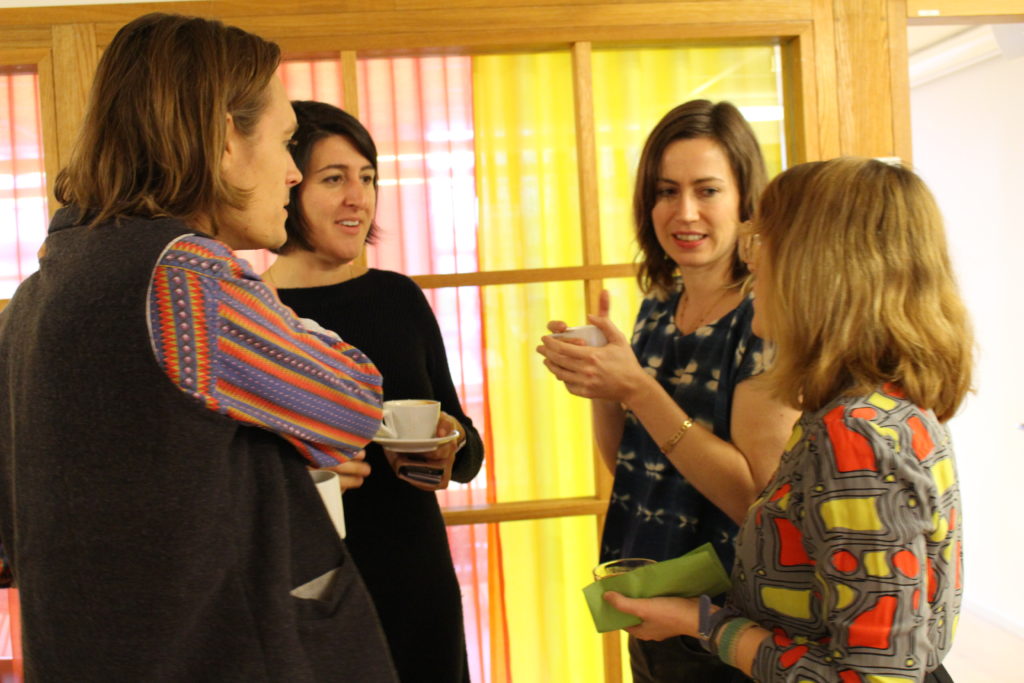
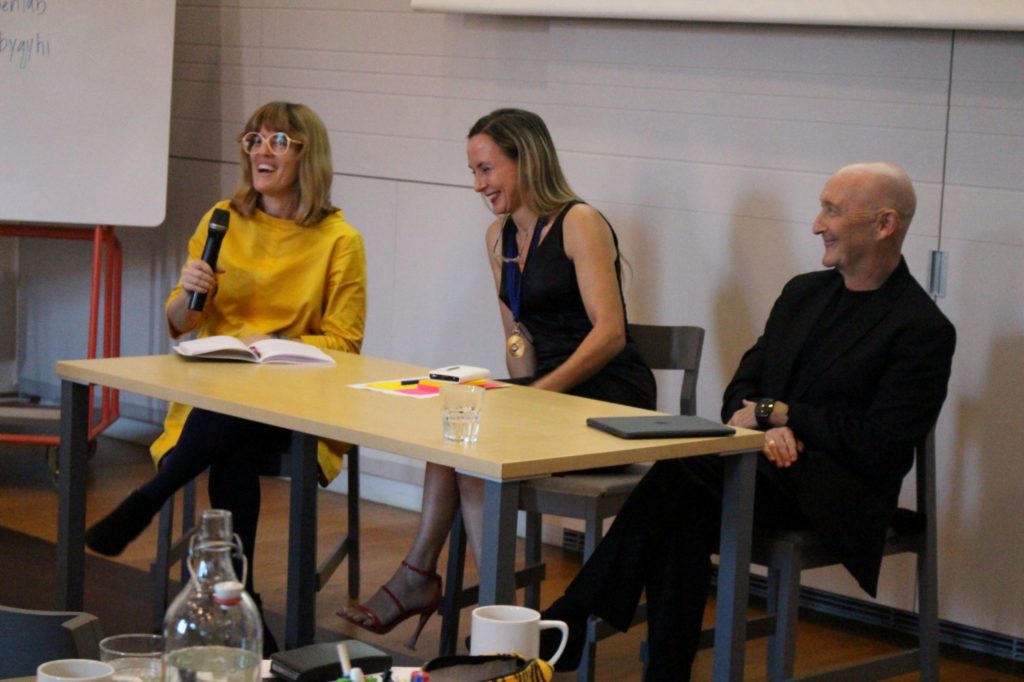
KTH Humanities Tech events
October 23, 2018
KTH Royal Institute of Technology
Humanities Tech KTH events explore the intersection of the humanities, human and technology with a particular focus on critical and constructive engagement with socio-technological systems.
Infrastructural Humanities
Oct 23, 2018, 2.15 pm
David Theo Goldberg, UC Humanities Research Institute
Patrik Svensson, UCLA and Umeå University
Engineering for an Inclusive World
Oct 23, 2018, 1.15 pm
Sara Hendren, Olin College of Engineering
Mutualistic Systems Design: improving human and environmental health
Oct 23, 2018, 3.15 pm
Natalie Jeremijenko, New York University and the Environmental Health Clinic
Workshop on Humanistic Infrastructure
Oct 18, 2018
Klara strand, Stockholm
This large-scale workshop (mostly in Swedish, but first segment in English) brought together a large national crowd interested in the question of humanistic infrastructure. Riksbankens Jubileumsfond helped organize the event. A new report on the subject was presented. There was participation from the Swedish Research Council, funding agencies, the Ministry as well as scholars and academic leaders from Sweden and internationally. The workshop was opened by the CEO of Riksbankens Jubileumsfond followed by Jane Ohlmeyer (Trinity College Dublin) and Natalie Jeremijenko (NYU). Other speakers included Karolina Andersdotter (Uppsala University Library), Lars Borin (Gothenburg), Jonas Brändström (Vinnova), Marianne Gullberg (Lund), Lars Ilshammar (National Library of Sweden), Kerstin Sahlin (Swedish Research Council) and Sylvia Schwaag Serger (Lund). Program, description and videos.
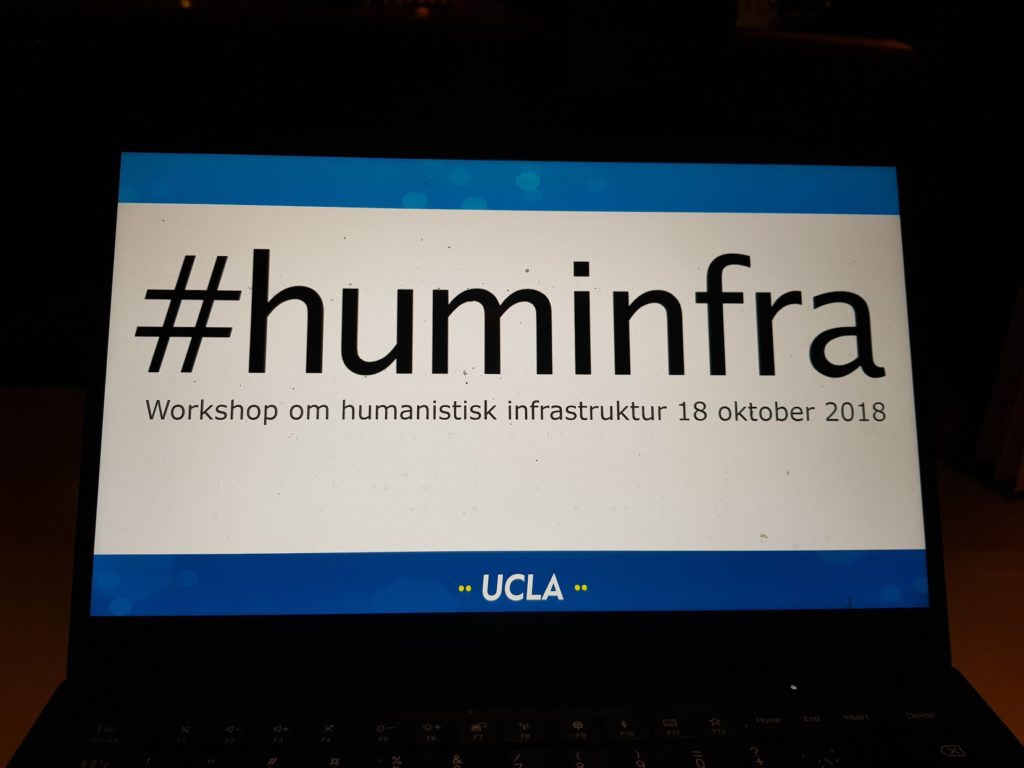
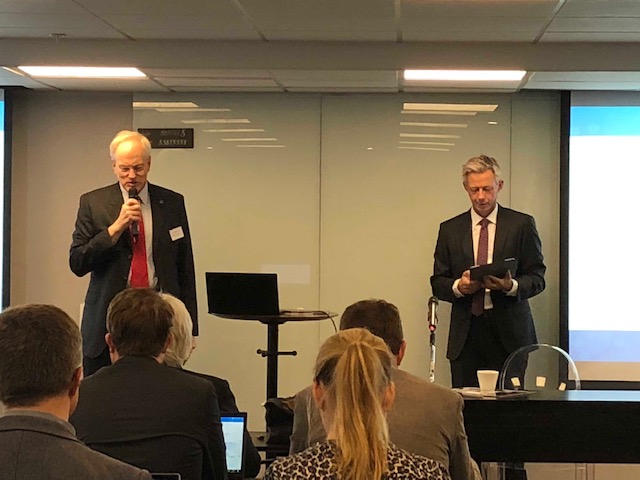
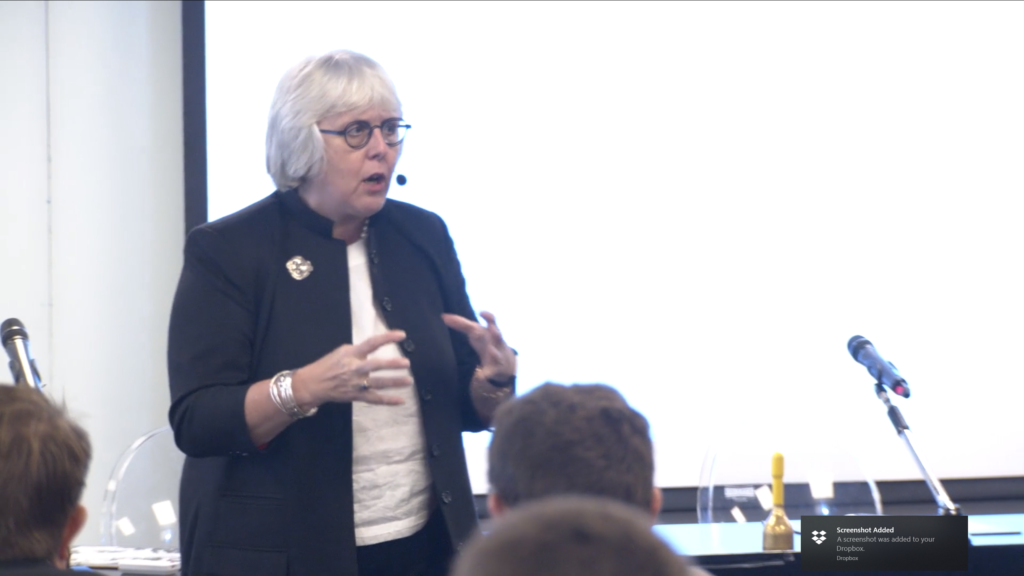
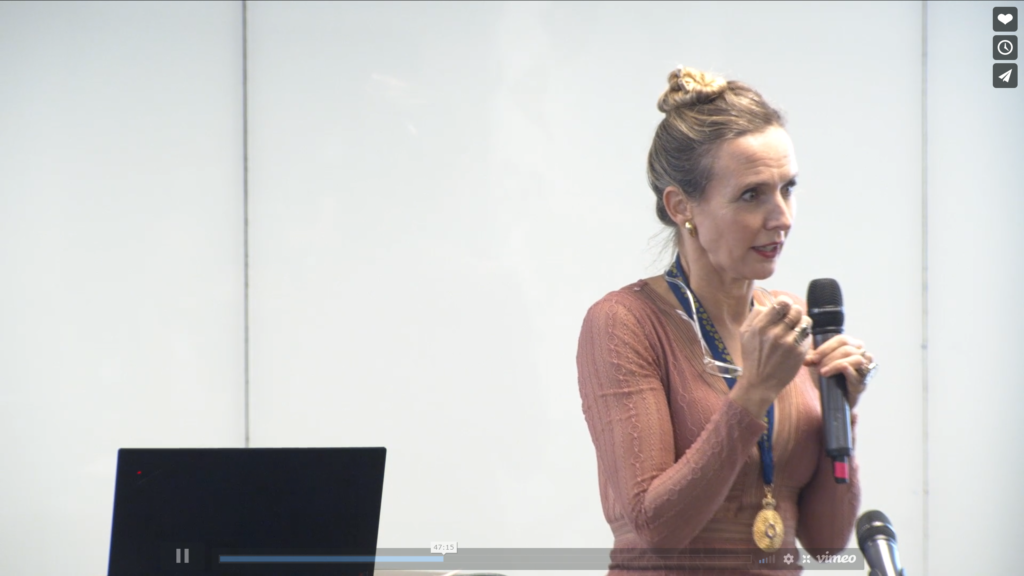
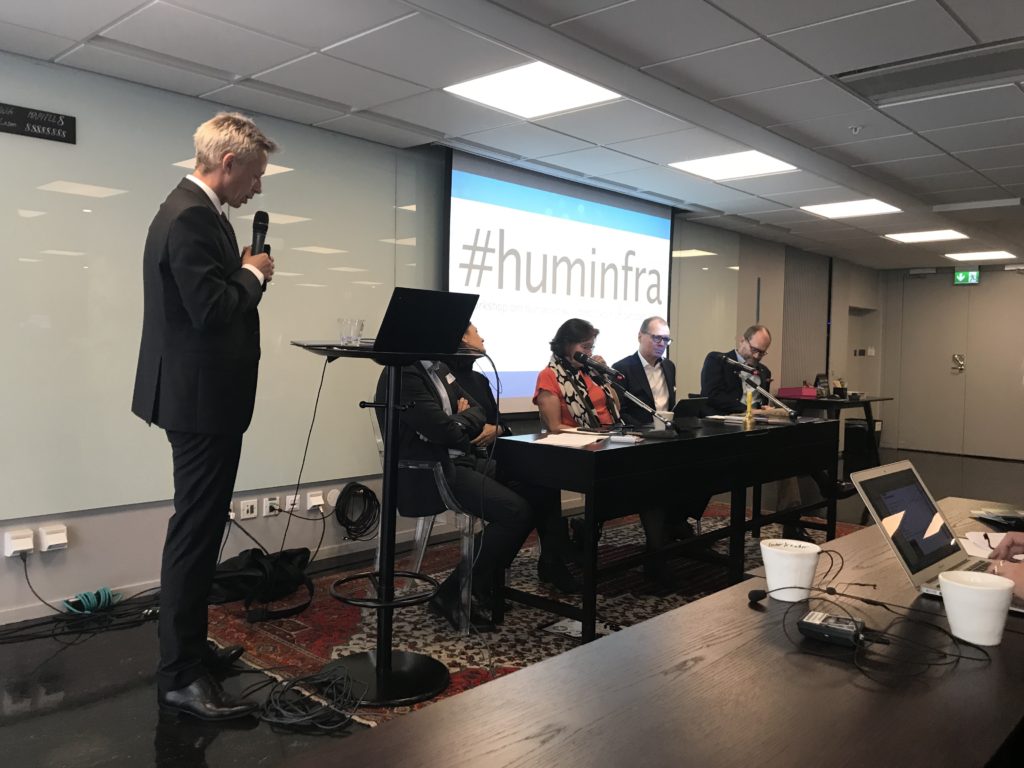
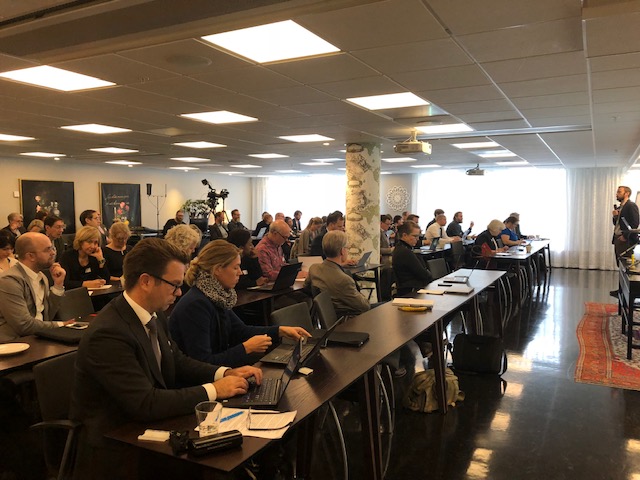
Data-driven Research in the Humanities (datadriven humanistisk forskning)
September 15, 2017
The KTH Royal Institute of Technology, Stockholm
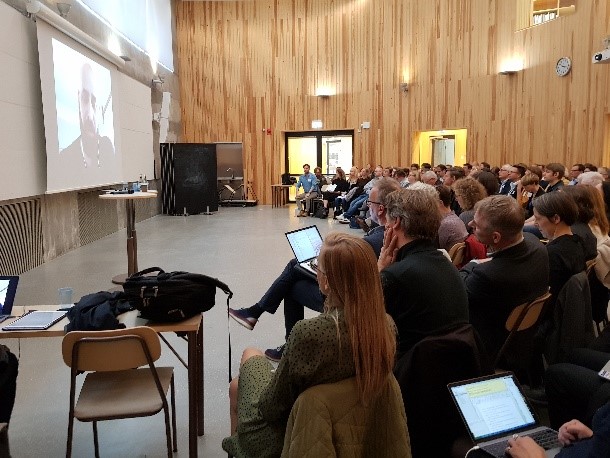
Co-organized with Pelle Snickars, Umeå University. Nationally oriented workshop with international participation. The key question was the interplay of “data” and scholarship in the humanities. About 120 participants and the 25 invited participants included very well-respected scholars from a range of fields, funding agency leadership and cultural heritage leadership. More information here.
UCLA Digital Humanities Seminars
2016-2017
UC Los Angeles
This seminar series started in 2016 with an emphasis on conversations (rather than presentations or talks). Francesca Albrezzi, UCLA, helped out with the series.
UCLA DH Seminars engage with critical themes inside and outside the field with a critical-societal-technological-material commitment through:
- facilitating a space for long-format, in-depth conversations,
- bringng together some of the best scholars, artists and experts,
- reaching out beyond academia,
- engaging topics that often cut across and require different perspectives, takes and actions,
- attempting to be inviting, generous, sharp, conversational, and challenging,
- being experimental and self-aware
- being embedded in Los Angeles and Southern California, while being internationally relevant and exciting.
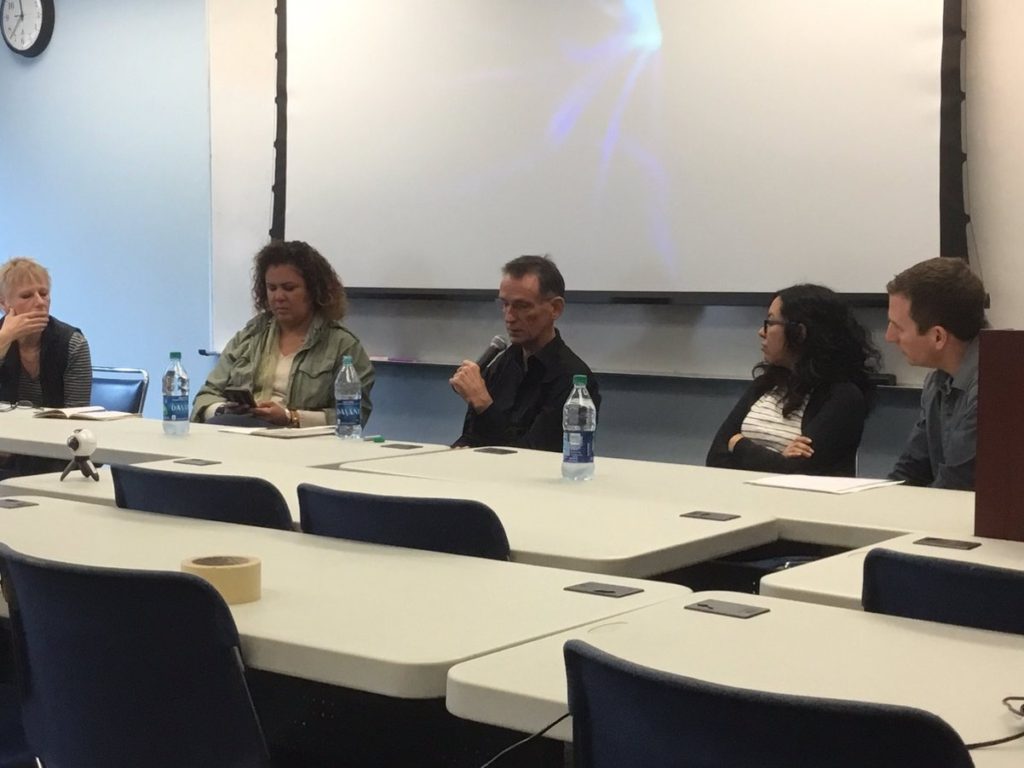
Encoding Diversity
December 9, 2016
Geoffrey Bowker, UC Irvine
Ursula Heise, UCLA
Safiya Umoja Noble, UCLA
Élika Ortega, Northeastern University
Todd Presner, UCLA
Making, Curating, and Engaging Data
March 3, 2017
Christine Borgman, Information Studies, UCLA
Joanna Chen Cham, UCLA Libraries, UCLA
Jungseock Joo, Communication Studies, UCLA
Christopher J. Lee, Biochemistry, UCLA (pre-recorded)
Andrew Prescott, University of Glasgow
Challenging Models of Digitization and Access
March 20, 2017
Michelle Caswell, UCLA
Jasmine Nyende, New media artist, Los Angeles
Megan Prelinger, the Prelinger Library
How Tools Think
May 3, 2017
Johanna Drucker, UCLA
Erin Glass, UCSD
Christopher Lee, UCLA
Timothy R. Tangherlini, UCLA
Making a Real Difference
May 26, 2017
David Theo Goldberg, UC Humanities Research Institute
Natalie Jeremijenko, New York University
Tara McPherson, University of Southern California
Sarah Roberts, University of California, Los Angeles
All Your Data Are Belong To Us: Quantifying the Human Condition
Nov 2, 2017
Shannon Mattern, The New School
Representing the Past in Three-dimensions: Issues, Challenges, and Opportunities
Feb 21
Costas Papadopoulos and Susan Schreibman, Maynooth University
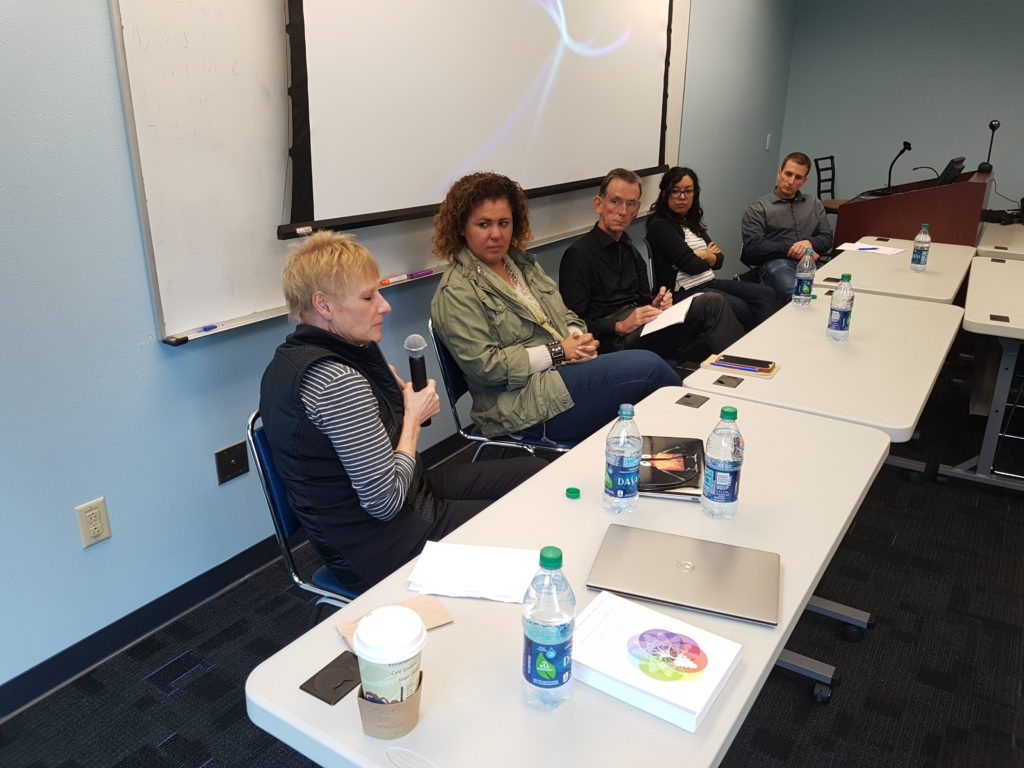
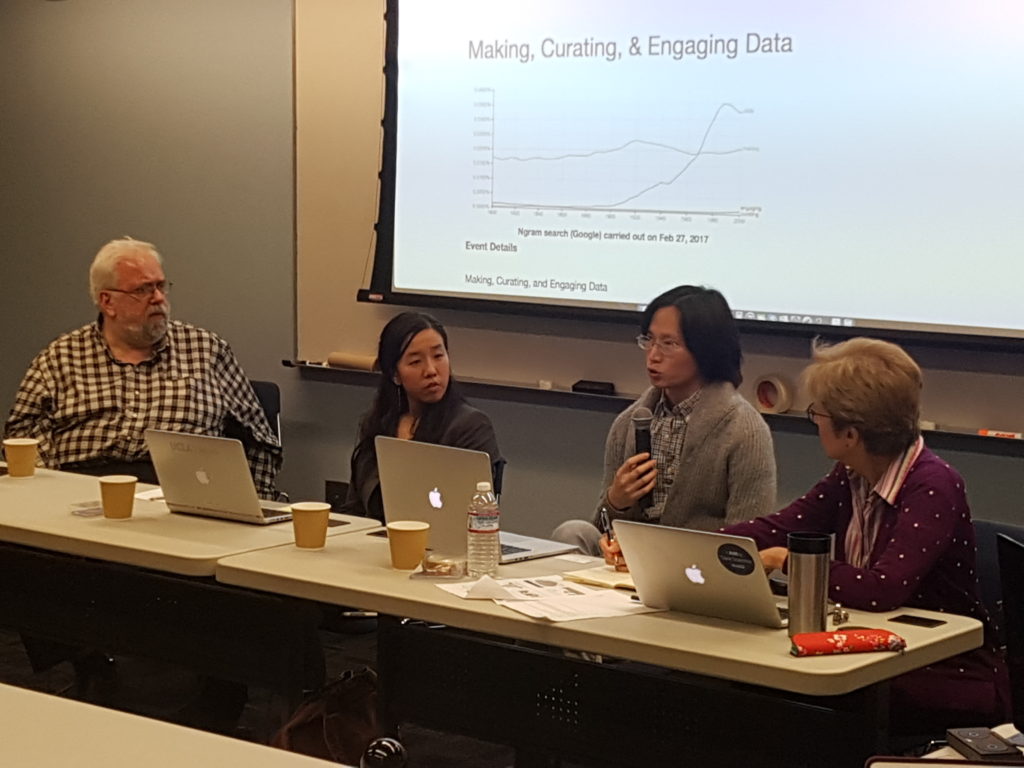
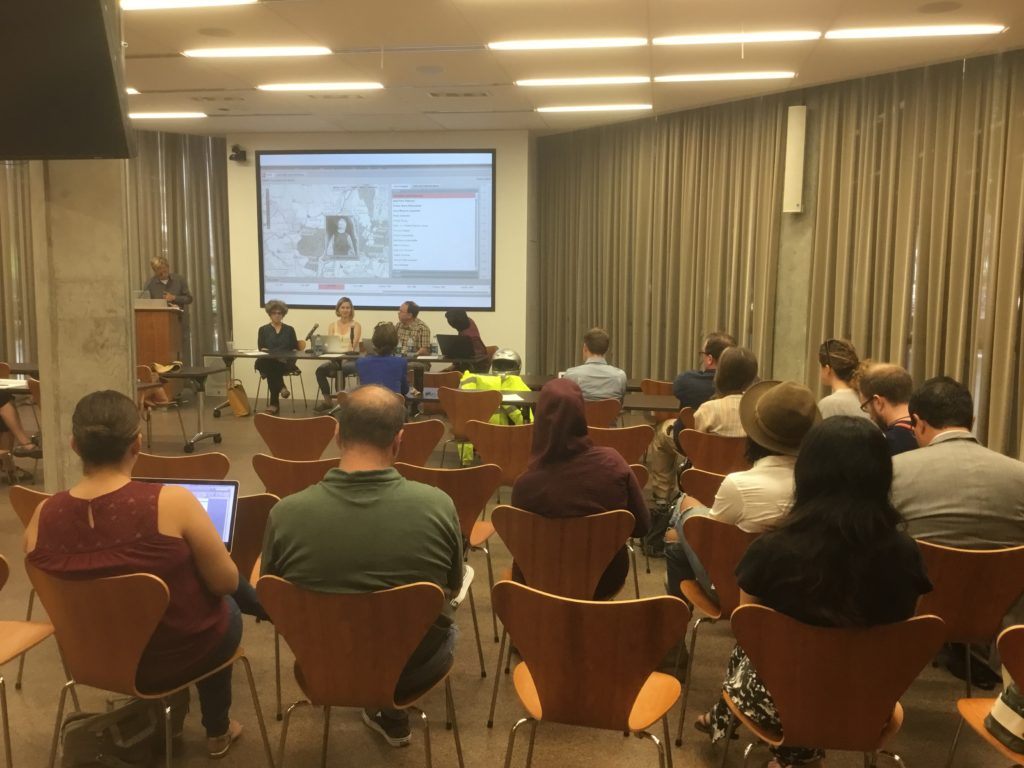
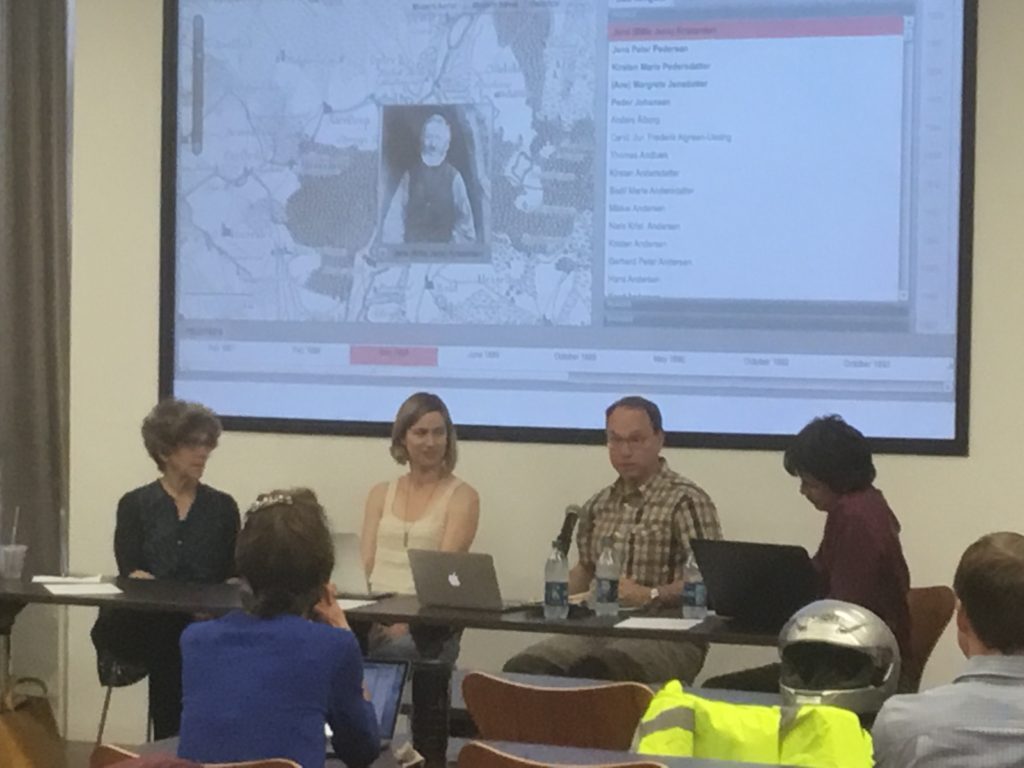
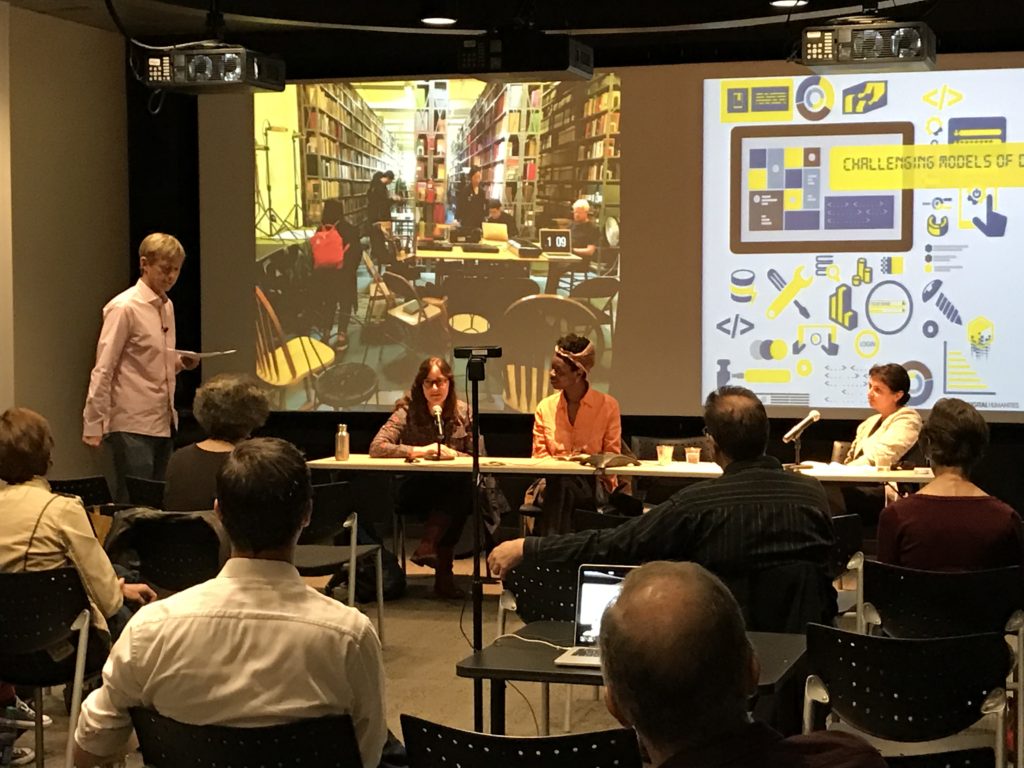
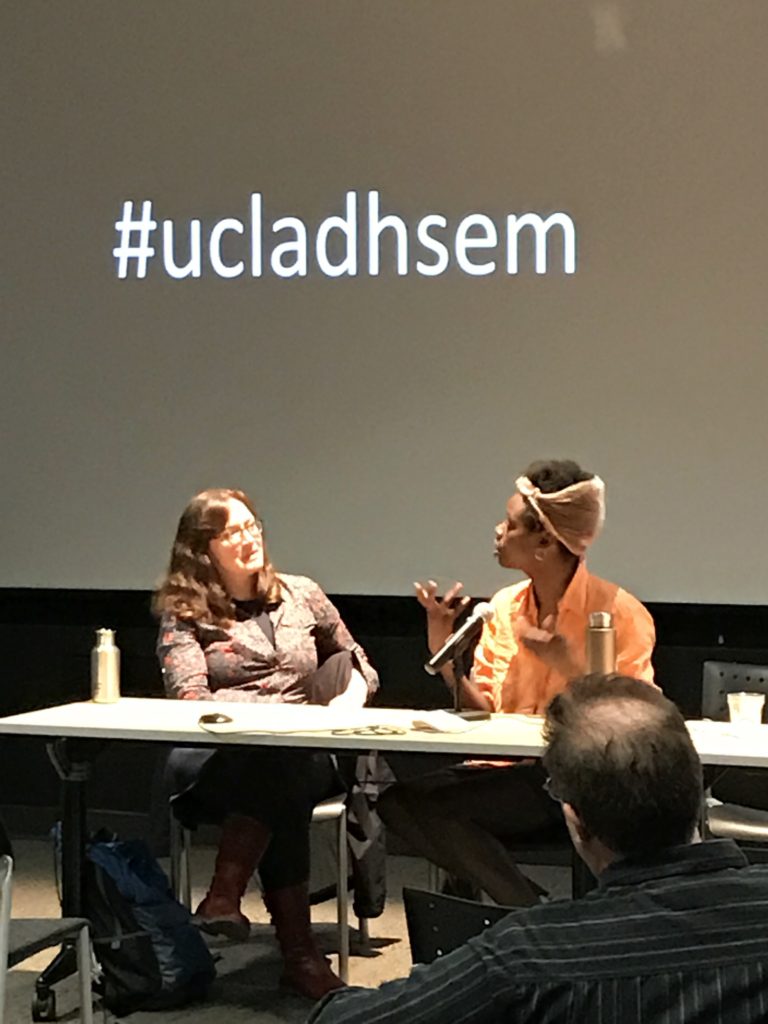
SoCal DH Summit: Building Capacity
May 26, 2017
UCLA
(with the UCLA and SoCal DH community)
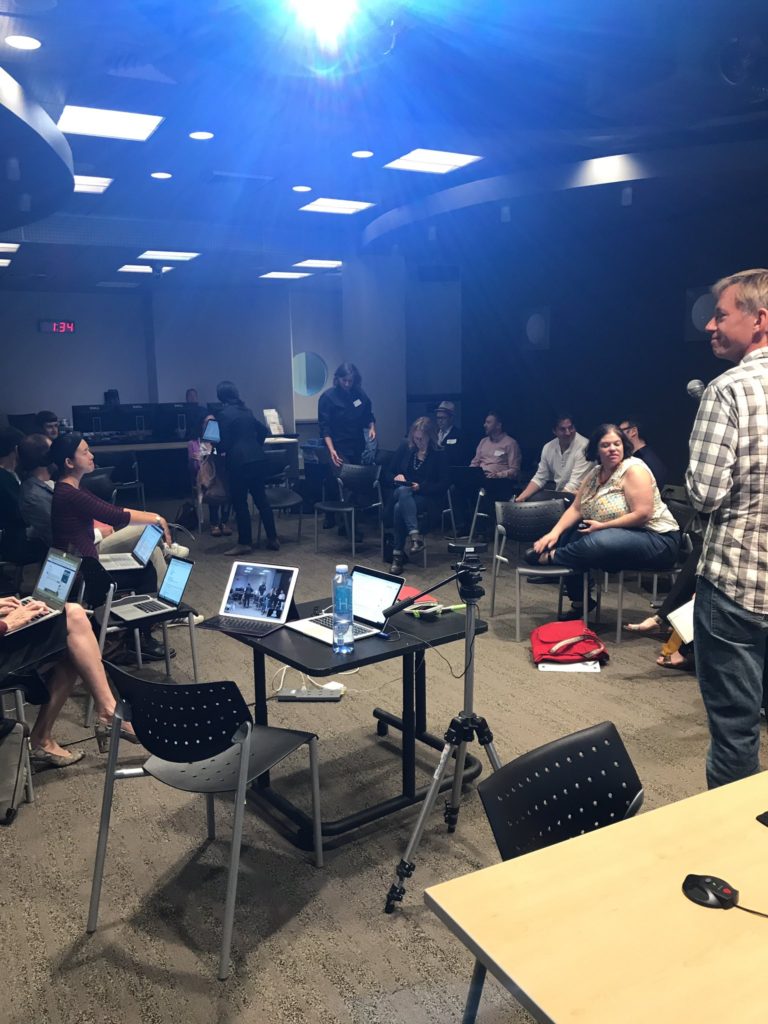
This event brought together 20-25 participants from Southern California (in total 8-10 institutions) to discuss digital humanities in Southern California, earlier experiences, visions and concrete plans moving forward. A concrete result was the implementation of an incubation organization. The summit took place at UCLA. More information here. Photo credits: Francesca Albrezzi.
Compositions Across/Between Edges, Surfaces and Materialities
December 8, 2016
Co-organized with Élika Ortega, Northeastern University and Miriam Posner, UCLA. Francesca Albrezzi, UCLA, helped run the event.
The symposium explored compositions that happen, emerge, or are partly enacted at edges, between surfaces and across materialities, scales and modalities. These kinds of compositions–narrative, artistic, scholarly, political, infrastructural, etc.–demand a reorientation of established knowledge models, critical stances, vocabularies and infrastructures. They shift our attention to their architecture – conceptual and material – and the very process of composition as argumentative, narrative, and strategic media ideations.
Invited participants included Steve Anderson (UCLA), Anne Balsamo (University of Texas at Dallas), Anne Burdick (Art Center College of Design), Johanna Drucker (UCLA), Kate Durbin (writer and artist), Kate Elswit (The Royal Central School of Speech and Drama), Carter Emmart (American Museum of Natural History), Zack Horton (University of Pittsburg), Erkki Huhtamo (UCLA), Viola Lasmana (USC), Peter Lunenfeld (UCLA) and Rita Raley (UCSB). Some participants, including Erica Robles-Anderson (NYU) and Fred Turner (Stanford), were recorded beforehand and made part of the event.
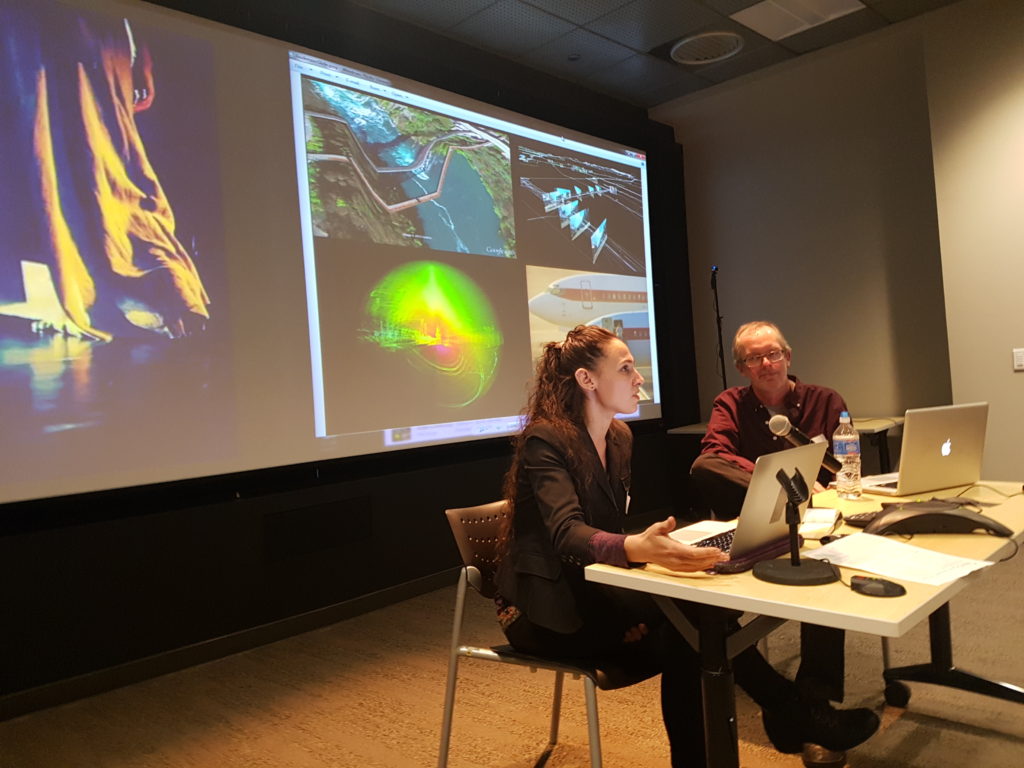
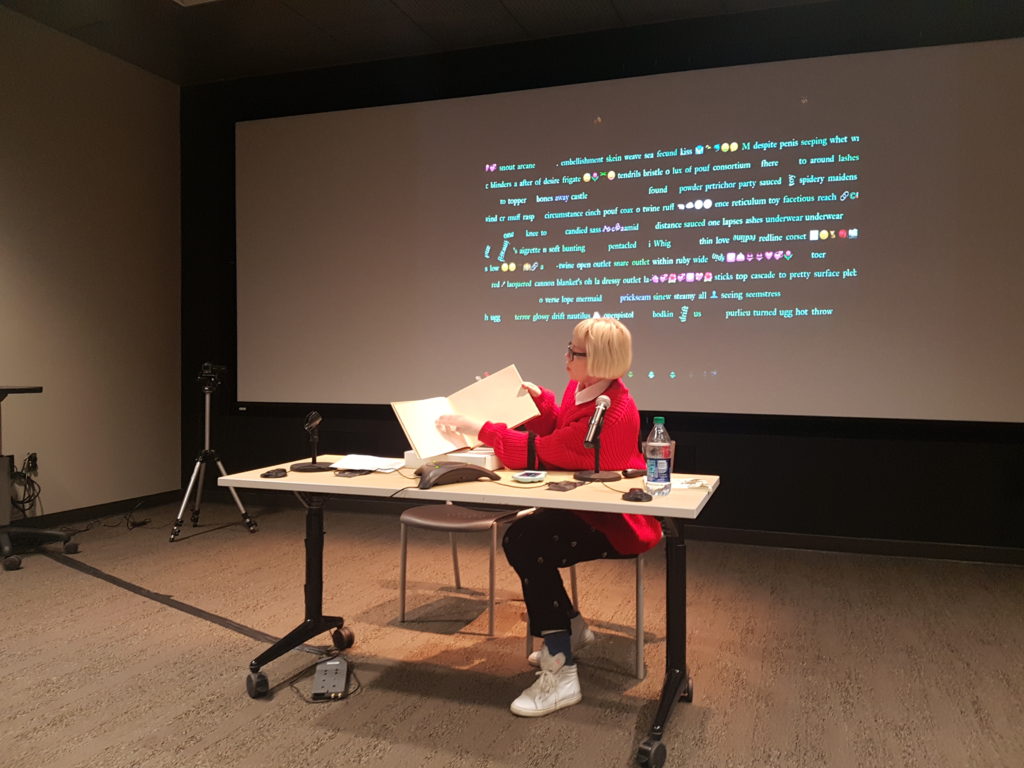
Making a Real Difference
November 21, 2016
University of London
Being Human Festival
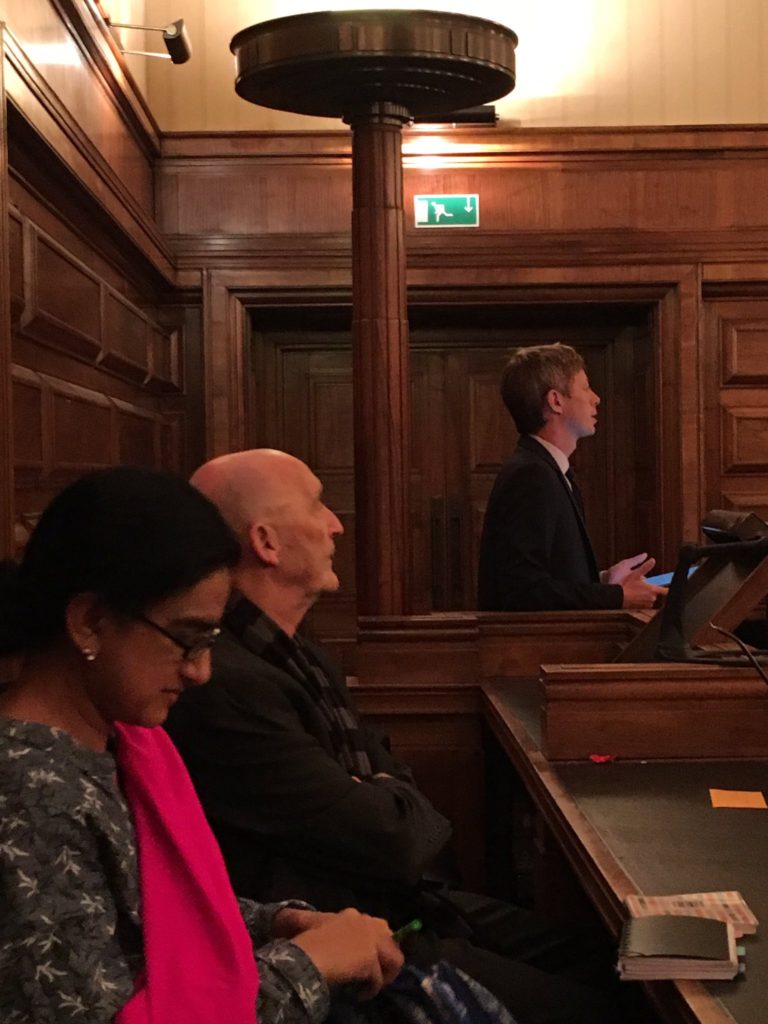
This two-hour conversation took place in Senate Room, the Senate House, University of London as part of the Being Human Festival 2016. The theme was making a real difference and the discussants were Gargi Bhattacharyya, the University of East London, Gary Dirks, Arizona State University, David Theo Goldberg, University of California Humanities Research Institute, Natalie Jeremijenko, New York University and Barry Smith, University of London.
Photo credit: Barry Smith.
Critical Visualization: Unflattening and Enacting Visualization
June 9, 2016
The Graduate Center, City University New York
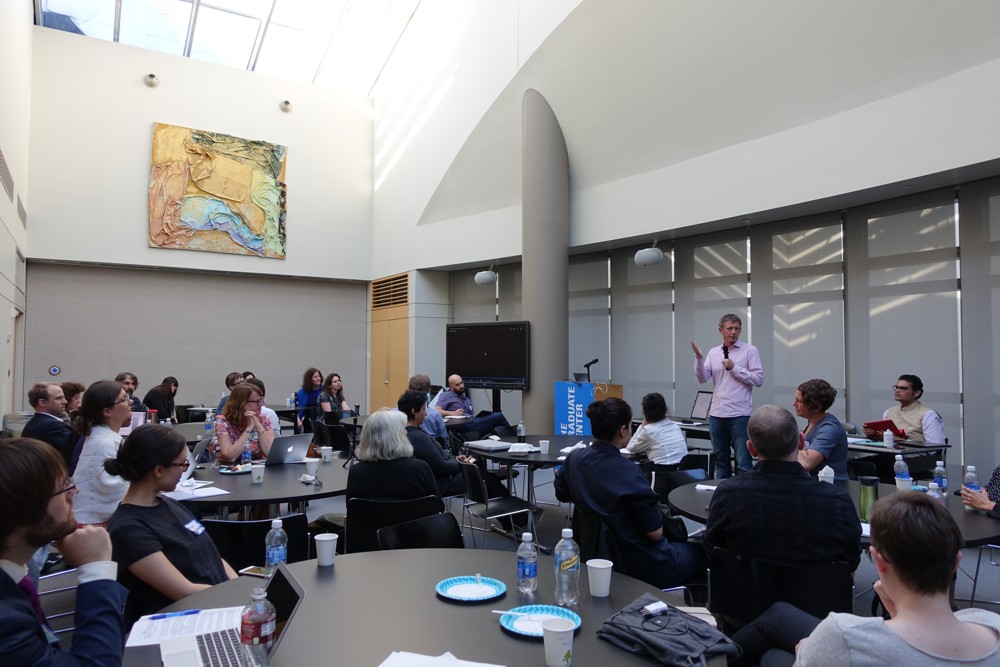
Workshop/conference with about 50 participants including Lauren Klein, Nishant Shah, Meg Studer, Kelli Moore, Daniel Fallman, Catherine D’Ignazio, Zach Horton and Martha Poon. Statement, program and reading list available here. The workshop was sponsored by Umeå University (through Patrik Svensson’s chair and through the project Multiple Screens as Material) and by the Futures Initiative, CUNY and carried out in collaboration with GC Digital Initiatives and the Advanced Research Collaboratory at the Graduate Center, CUNY. Some conference tweets:
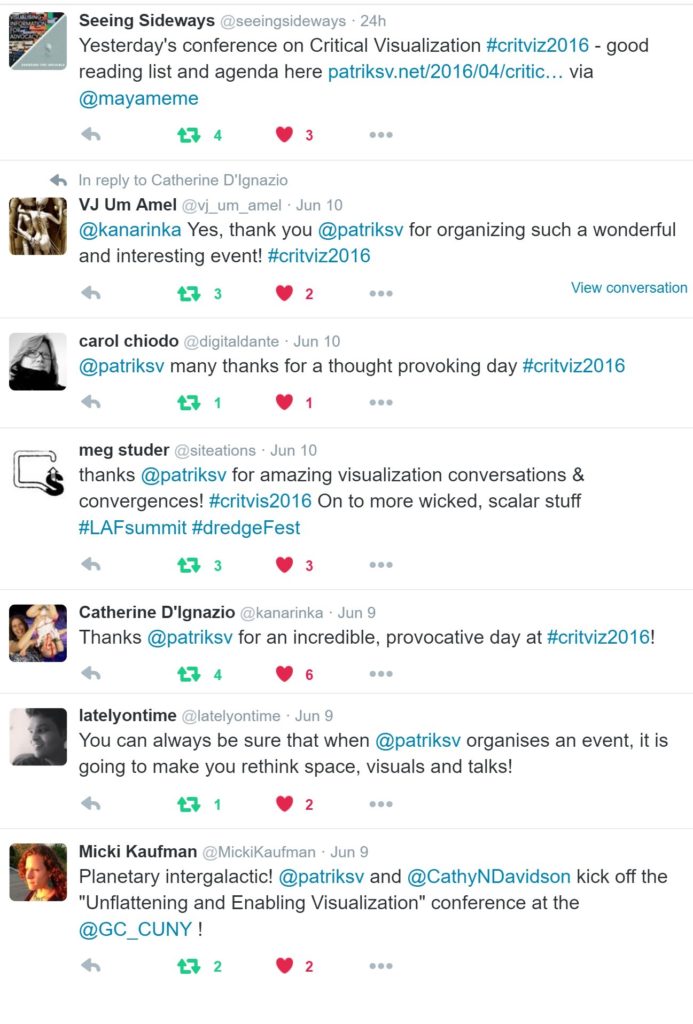
The workshop Unflattening and Enacting Visualization engaged with visualization critically and in terms of imagining and making visualizations with a focus on unpacking visualization practices, critiquing/imagining visualization regimes/concepts, and exploring visualizations beyond the visual (as well as what does not get visualized). Among other things, this requires taking humanistic knowledge, design, computation, experimental work, multiple modalities and the materiality of visualizations seriously. The workshop brought together designers, media scholars, philosophers, computer scientists, historians, artists, science studies scholars, visualization experts, demographers, literary scholars and digital humanists.
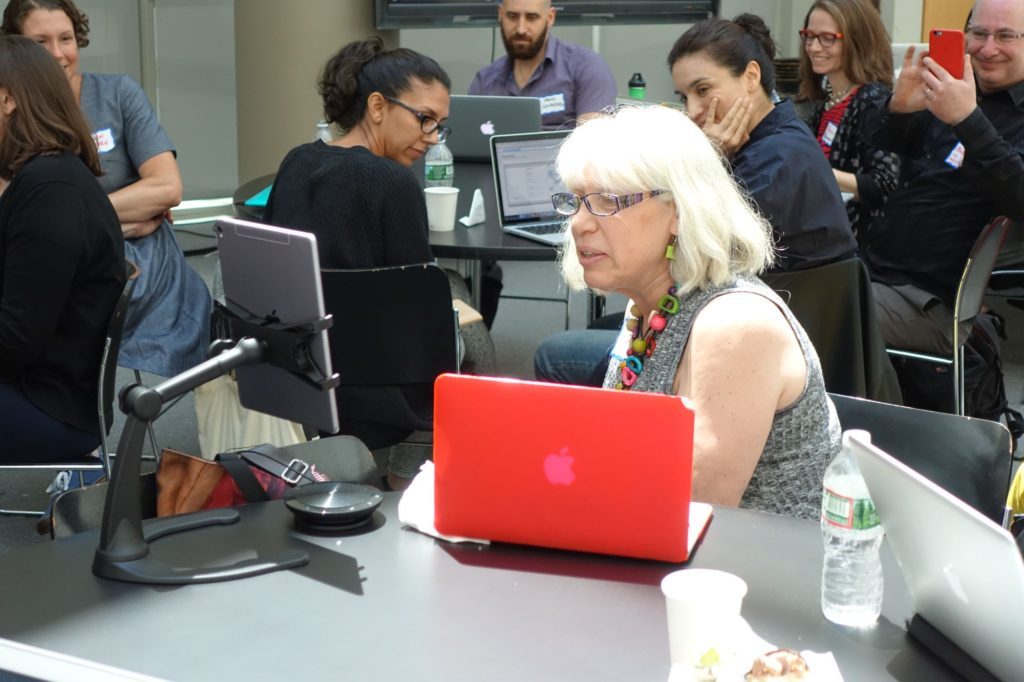
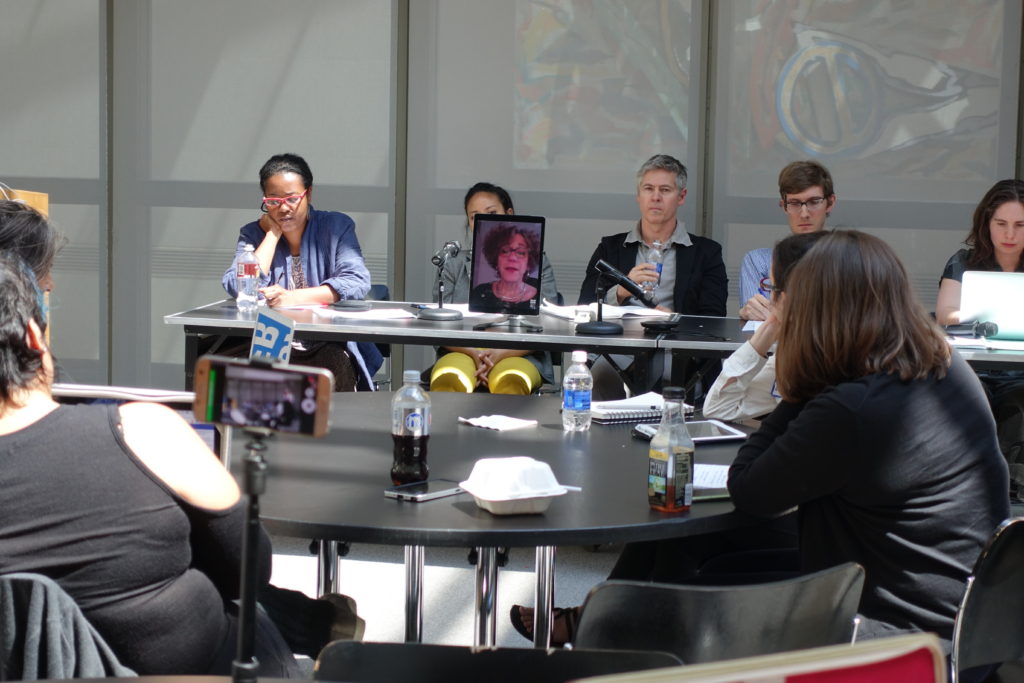
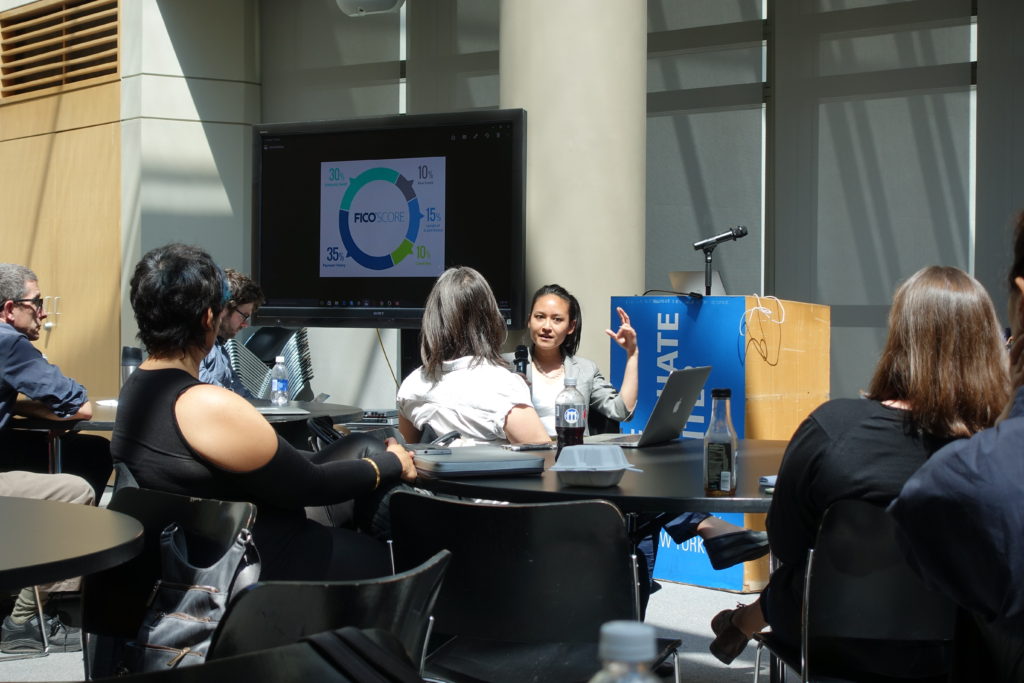

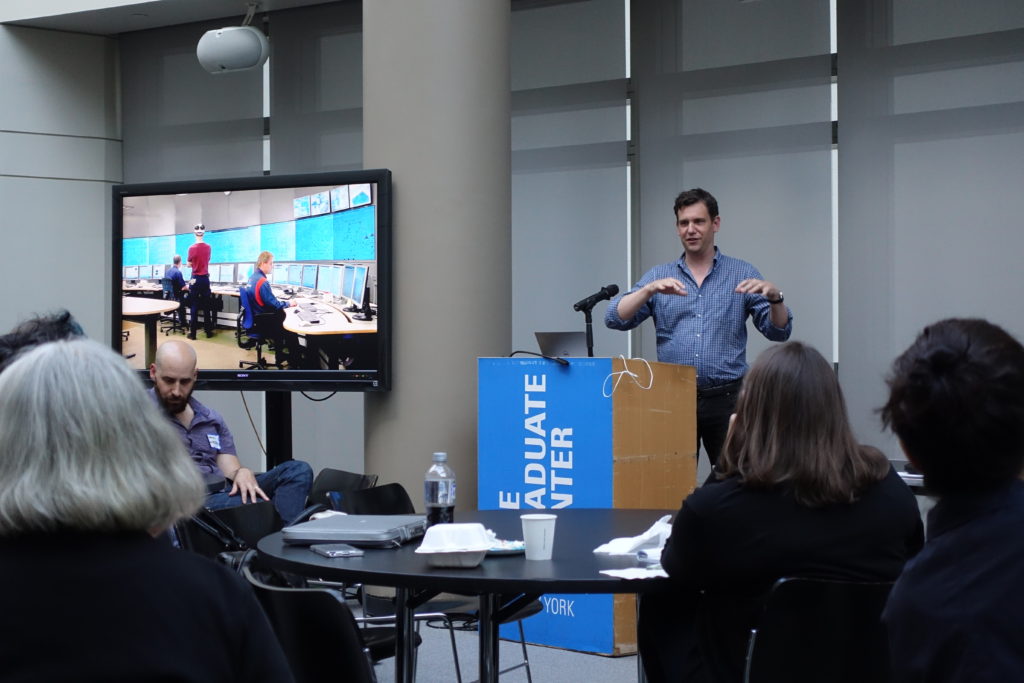
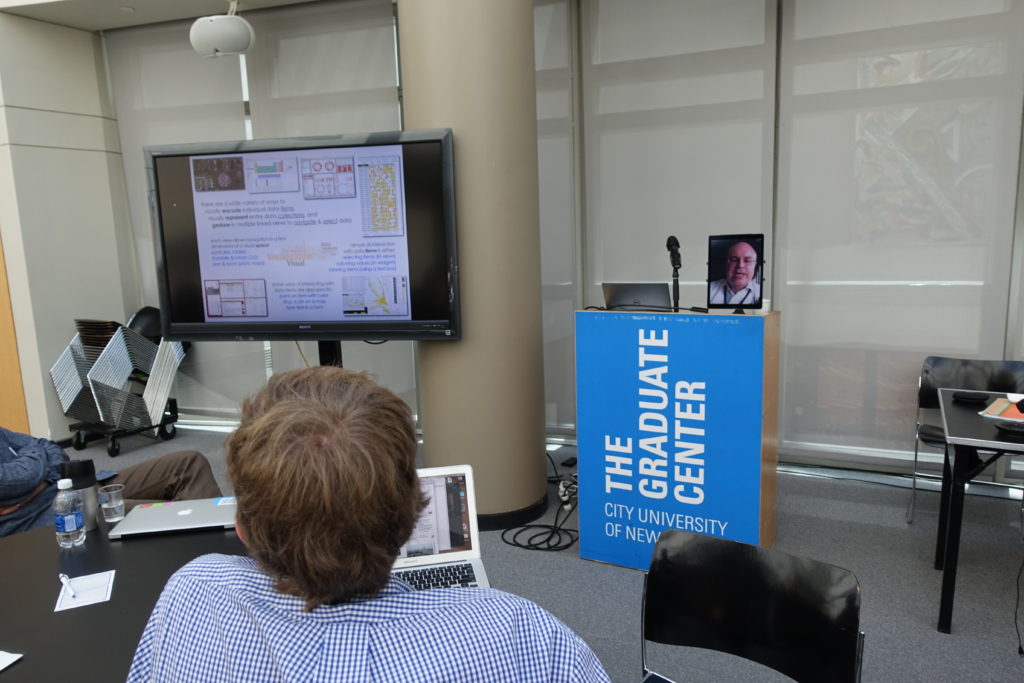
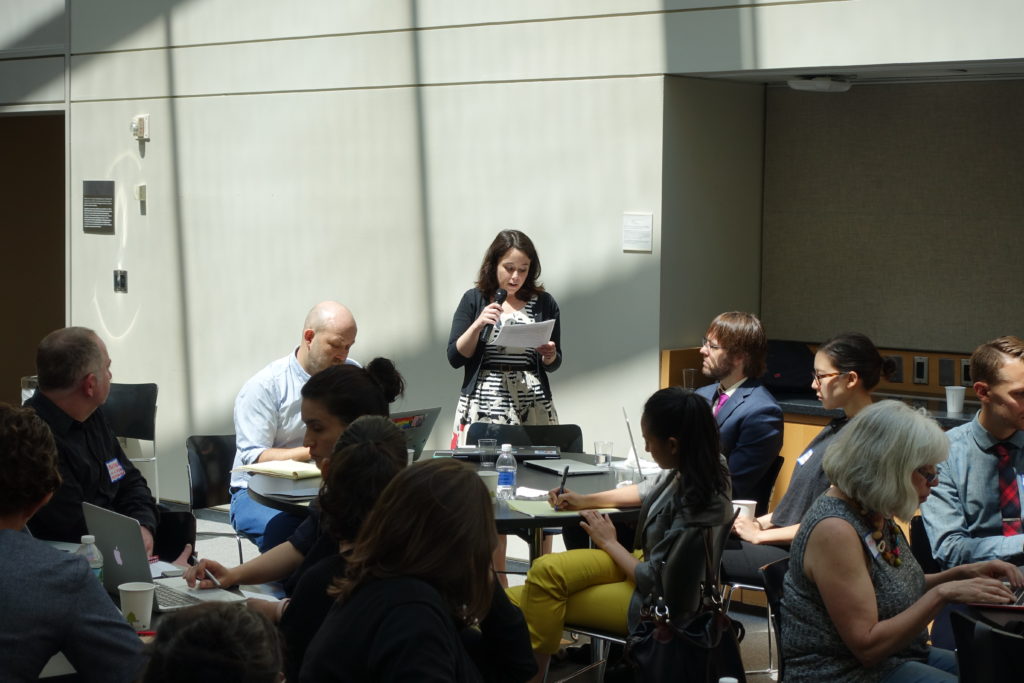
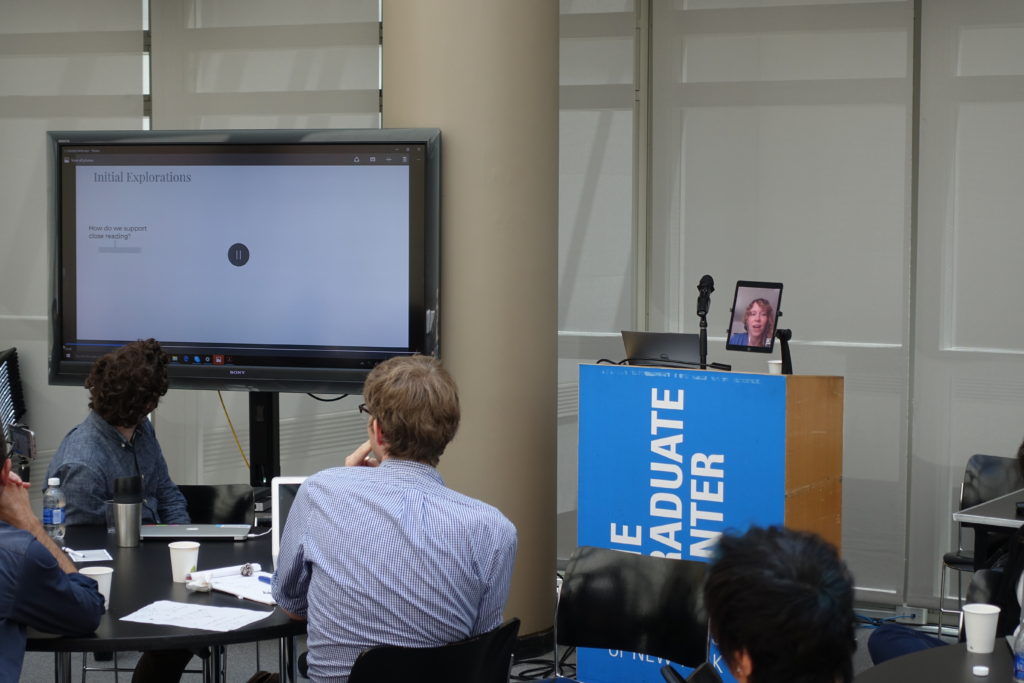
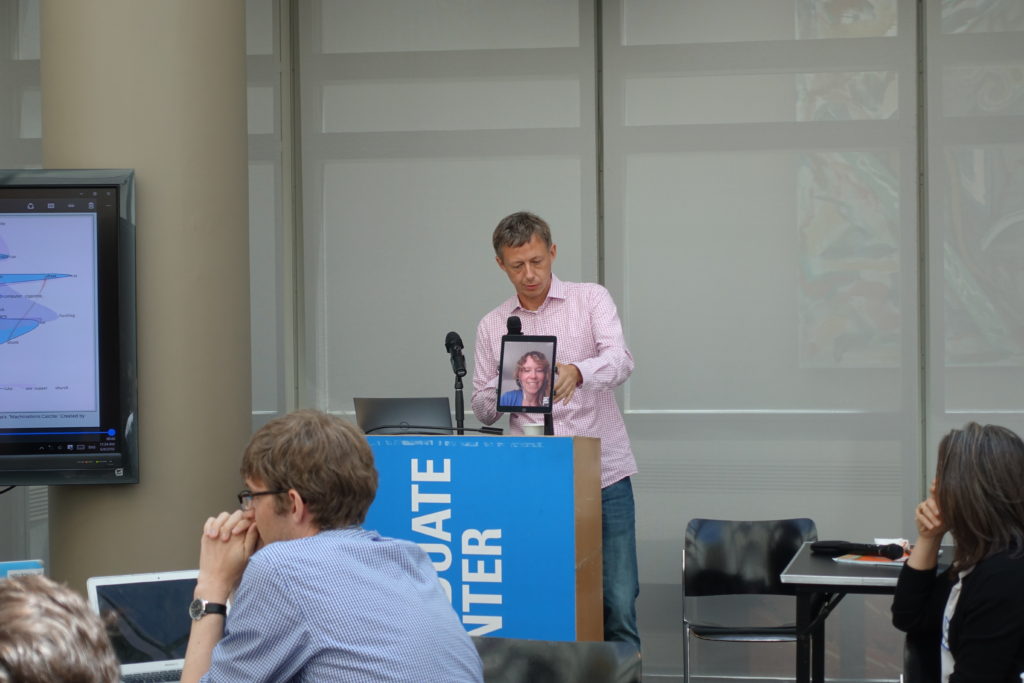
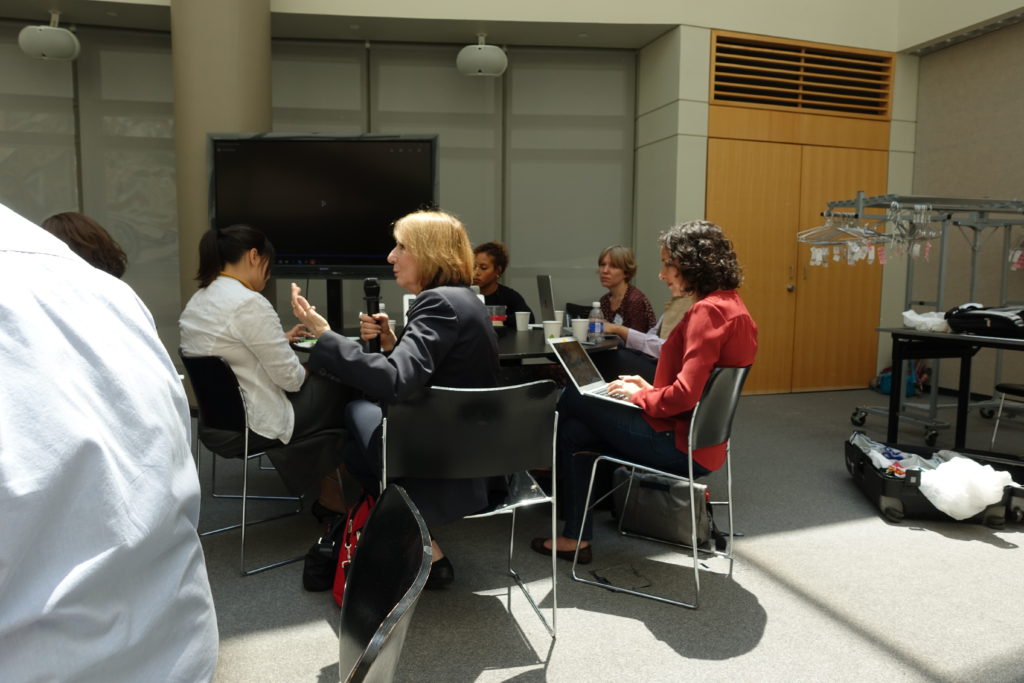
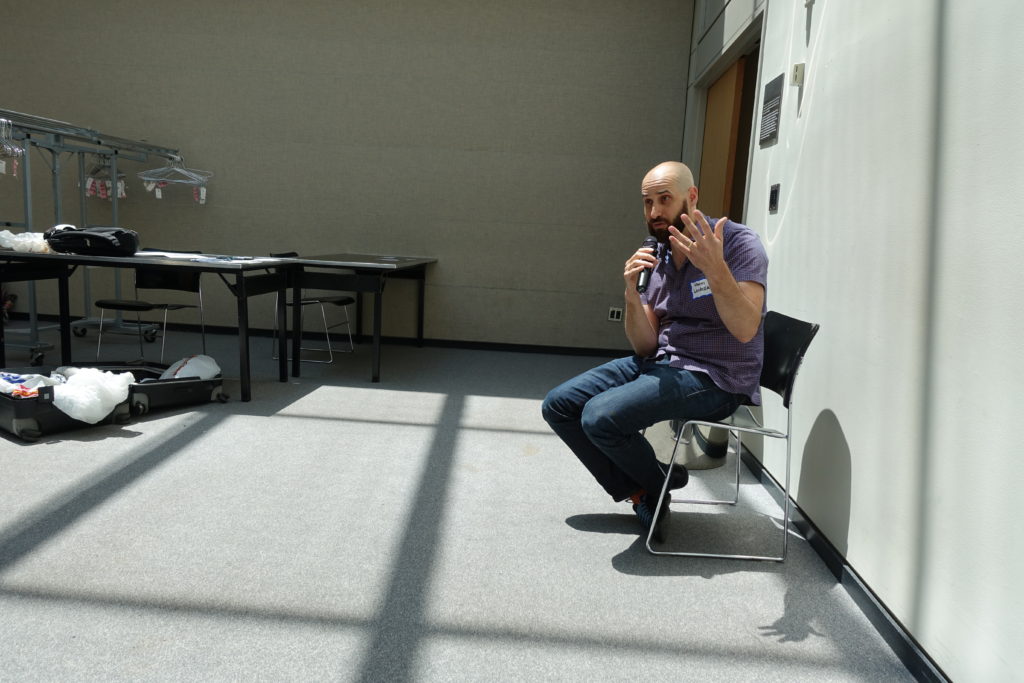
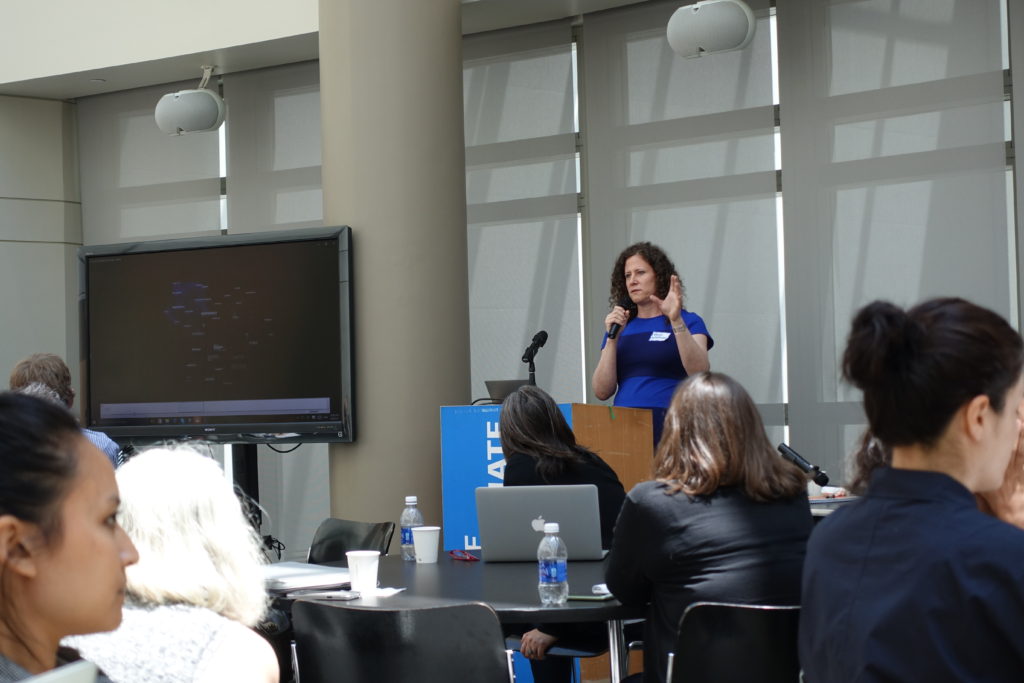
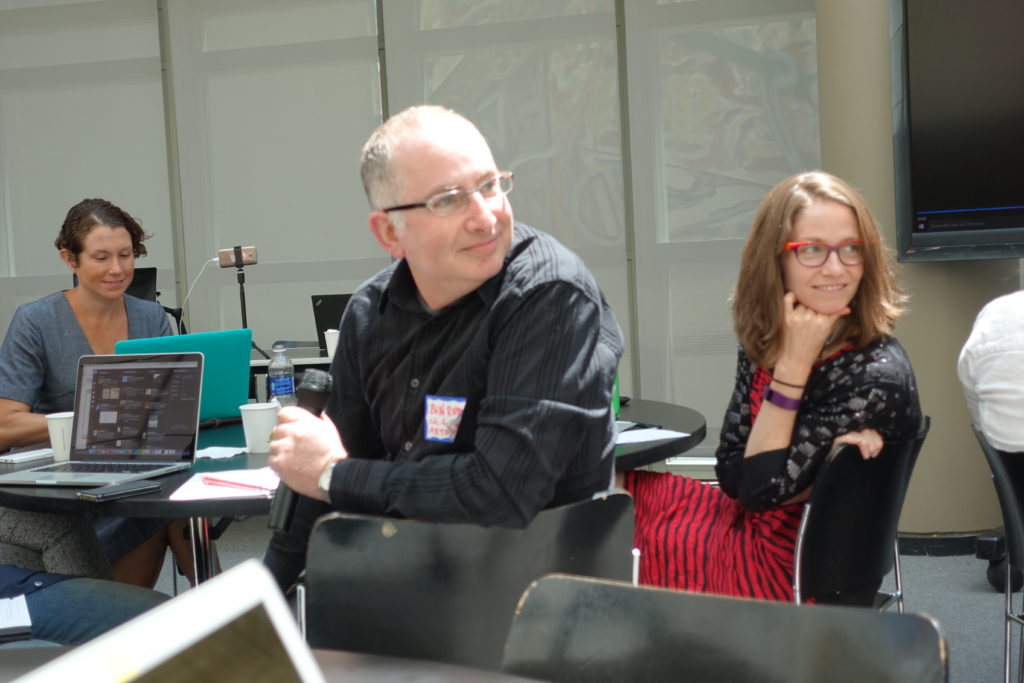
Some participants were also brought in through pre-recorded videos (and “played” on the mobile screen): Giorgia Lupi (Information designer), Barry Smith (School of Advanced Studies, London), Mimi Onuoha (Brooklyn-based artist and researcher, Data & Society Research Institute Fellow) and Carter Emmart (Director of Astrovisualization, American Museum of Natural History).
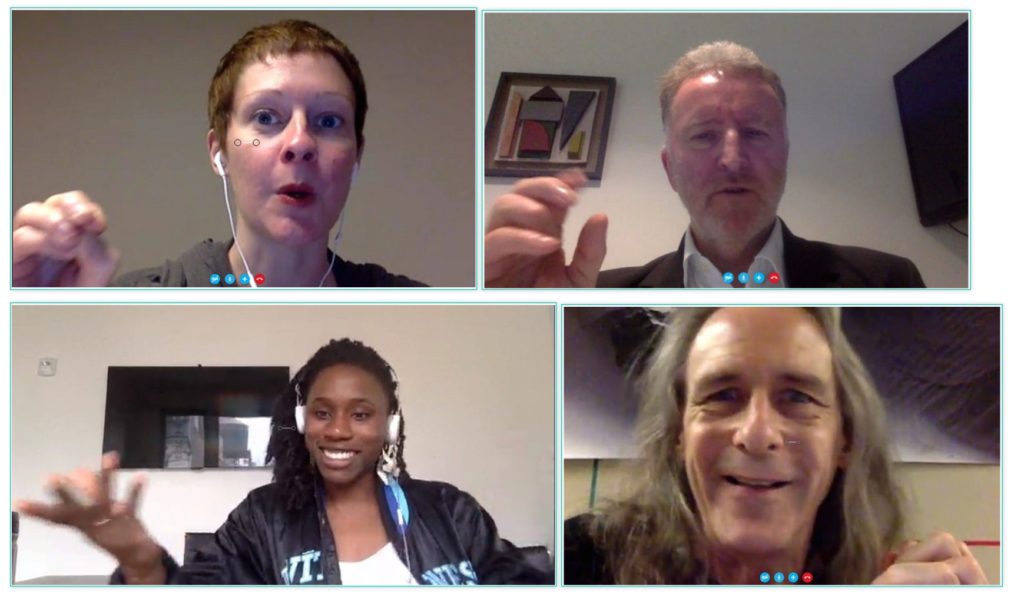
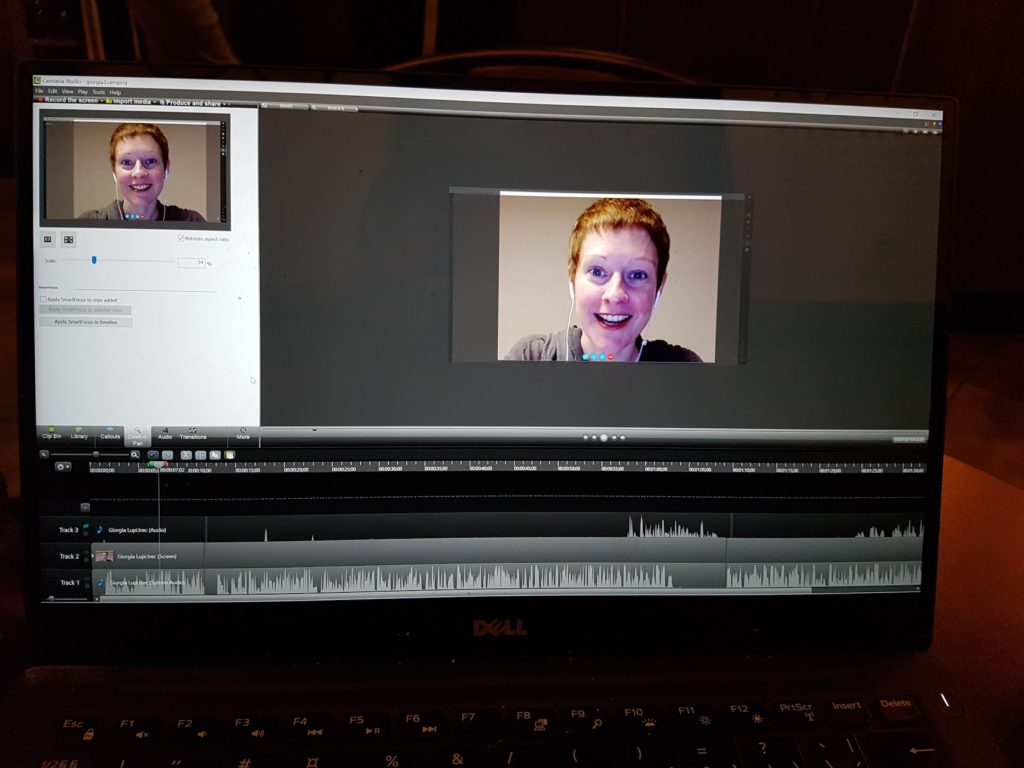
Digging Deep: Ecosystems, Institutions and Processes for Critical Making
December 1, 2015
The Graduate Center, City University New York
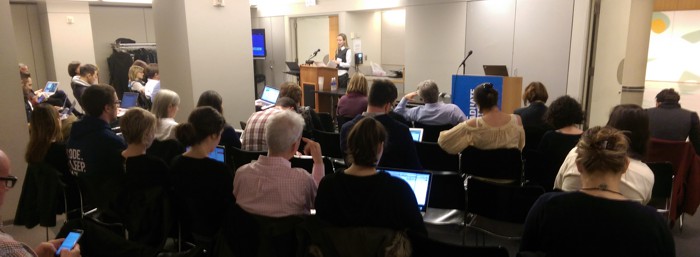
Workshop/conference with about 50 participants including Anne Balsamo, Matt Ratto, Lev Manovich, Cathy Davidson and Roopika Risam. Program available here.
Being (Digital) Humans
November 17, 2015
Senate House, School of Advanced Studies, University of London
Event at Being Humans: A Festival of the Humanities organized with Lorna Hughes (lead organizer, SAS, University of London). Other participants included Sally-Jane Norman (University of Sussex) and Todd Presner (UCLA).
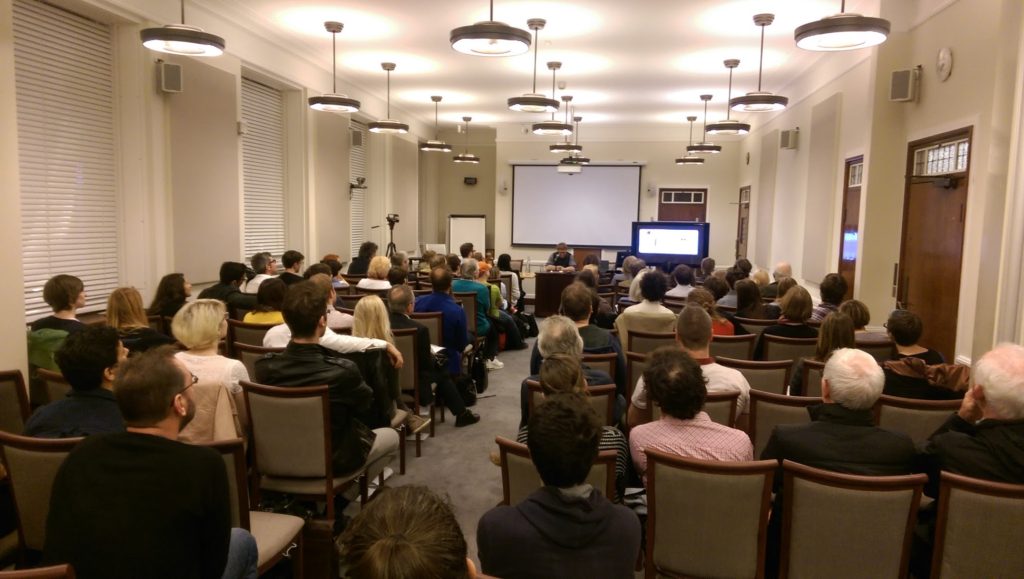
2) December events 2010-2014
During 2010 and 2014, I curated five large experimental December events in HUMlab in close collaboration with HUMlab staff and a large international network. These were not a series in the sense of a new iteration each year, but rather part of a connected exploration of academic events and international network building. They were instrumental in shaping the agenda, vision and international footprint of HUMlab, as well as more broadly. They were deeply connective, embedded in the lab as an emergent international platform for dialogue, and dealt with emergent concerns in digital humanities and more broadly humanities and information technology. Moreover, the events were a way of building HUMlab, a large international community, and manifest the essence of the lab and associated values.
They were instrumental in shaping the agenda, vision and international footprint of HUMlab, as well as more broadly. They were deeply connective, embedded in the lab as an emergent international platform for dialogue, and dealt with emergent concerns in digital humanities and more broadly humanities and information technology. Moreover, the events were a way of building HUMlab, a large international community, and manifest the essence of the lab and associated values.
These were not a series in the sense of a new iteration each year, but rather part of a connected exploration of academic events and international network building. They were instrumental in shaping the agenda, vision and international footprint of HUMlab, as well as more broadly. They were deeply connective, embedded in the lab as an emergent international platform for dialogue, and dealt with emergent concerns in digital humanities and more broadly humanities and information technology. Moreover, the events were a way of building HUMlab, a large international community, and manifest the essence of the lab and associated values.
We had a fantastic setup of people participate, many of which were early or mid career. In total there were 113 invited participants, 57 women and 58 men.
December in the North of Sweden is dark and normally cold, and the particularities of very short days (in terms of light) and the warmth of inside (as opposed to outside) added importantly to the events. Again, all these events were collaborative efforts and a group of excellent HUMlab employees (if I were to single out one person it would be Emma Ewadotter who expertly helped me coordinate all the below events) helped them come through. Photo credits (detailed will be added) Patrik Svensson and/or Umeå University.
Media Places (Culture Tech)
December 9-11, 2010
The Media Places conference (program, list of participants) explored the intersection of media, technology and place through bringing together cultural historians, architects, screen researchers, art and creative directors from digital media production industry, visualization experts, design researchers, sociologists, gender researchers, and game industry representatives. The conference was supported by Umeå University, the DINO project (European Union project) and DARE (innovation program).
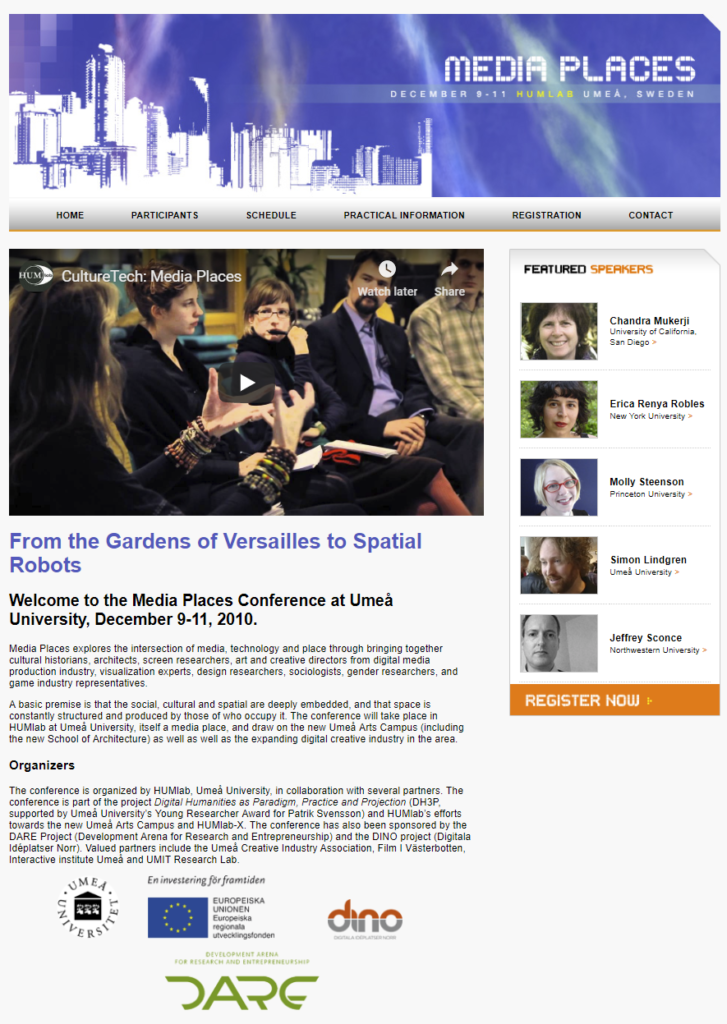
Invited speakers included Kenneth Bodin (Algoryx Simulations), Carter Emmart (American Museum of Natural History), Zephyr Frank (Stanford), Robert Miles Kemp (Variate Labs), Anja Linna (artist), Chandra Mukerji (UCSD), Tara Mullaney (Umeå), Jenna P-S. Ng (Cambridge and Umeå), Nicklas “Nifflas” Nygren (indy game developer), Jennie Olofsson, Iris Piers (artists), Erica Robles (NYU), Lynn Spigel (Northwestern), Molly Steenson (Princeton), Elizabeth Swanstrom (Umeå and Florida Atlantic University) and Mikael Wiberg (Umeå).
Critically Making the Internet of Things
December 8-9, 2011
Umeå University
The event brought together researchers, entrepreneurs, artists and others to examine critically and engage creatively the idea of a world where everything is assumed to be connected, where objects such as cars and roads communicate and where the digital has moved outside of the computer. Invited participants included Bruce Sterling, Anne Galloway (Victoria University of Wellington), Chris Speed (Edinburgh College of Art), Johanna Drucker (UCLA), Lisa Gitelman (NYU), Nanna Gyldholm Møller (Bjarke Ingels Groups), Tim Hutchings (Umeå), Christian Lindholm (Fjord), Molly Steenson (Princeton), Haibo Li (Umeå) and Finn Arne Jørgensen (Umeå). Program here.
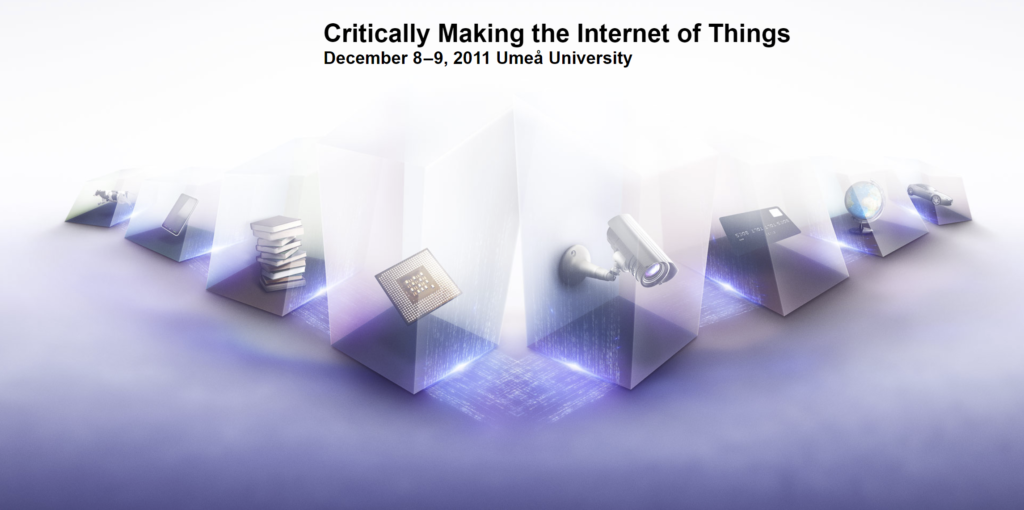
Infrastructure|Space|Media
December 5-7, 2012
Large-scale international conference at Umeå University generously supported by the Wallenberg Foundation (program).
The symposium was organized around two main questions:
1. How is knowledge production shaped by infrastructure (and notions of infrastructure) and vice versa?
2. How does digital materiality change notions of space and architectural theory, as well as built space itself?
A conference book was published by the Foundation after the event. Tweets tagged with #mediaplaces2012 can be searched on twitter or downloaded as a pdf (my printout of the twitter search, 83 pages, new to old).
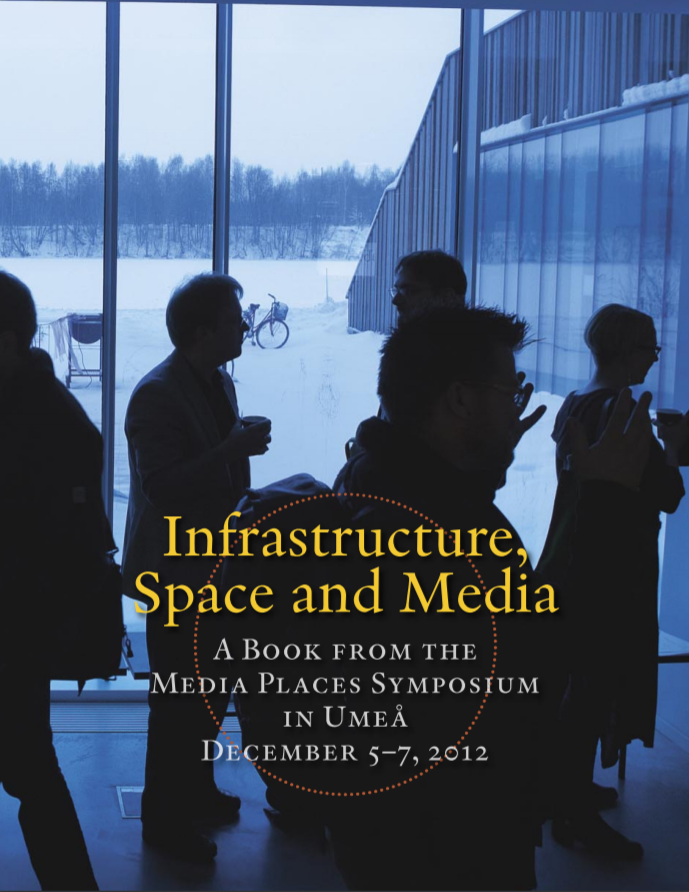
Speakers/participants included: David Theo Goldberg (UCHRI), Arthur Bienenstock (Stanford), Anne Cong-Huyen (UCSB), Palle Dahlstedt (Chalmers), Stuart Dunn (KCL), Amy E. Earhart (Texas A&M), Ava Fatah (UCL), Zephyr Frank (Stanford), Jennifer Gabrys (Goldsmiths), Craig Heller (Stanford), Matthew Gold (CUNY Graduate Center), Jo Guldi (Harvard), Marianne Gullberg (Lund), Garnet Hertz (UCI), Marianne Ping Huang (Aarhus), Kim Knight (UT Texas), Shannon Mattern (New School), Pelle Snickars (National Library of Sweden), Nicole Starosielski (NYU), Molly Steenson (Princeton), Denis Yi Tenen (Columbia), Anna Valtonen (Umeå), Tara Zepel (UCSD), Katherine Hayles (Duke), Fred Turner (Stanford), Sylvia Lavin (UCLA and Princeton), Johanna Drucker (UCLA) and Chris Speed (University of Edinburgh).
Sorting the Digital Humanities Out
December 5-6, 2013
The intention was not to come up with yet another manifesto, or to describe what is already there, but rather to focus on the intermediate future and what we can do to move beyond just discussing the field to actually implementing a seven-year plan of action.
This event was a major effort to bring together a group of mostly early and mid career scholars and experts around the future digital humanities in an experimental workshop setup (program, participants). A twitter search for “#sortingdh” (documenting the event) is available here (pdf). A detailed discussion of the event can be found in the “Epilogue: Making December Events” section of my Big Digital Humanities book. There are also a couple of brief videos from the critical making session with ginger coons and Matt Ratto (video 1, video 2, video 3). An important part of the workshop was group-based projects built in the response to the question of what digital humanities could be using the infrastructure at hand (instructions).
It was suggested that the tent of ‘big tent digital humanities’ is not large enough. While an inclusive notion of the digital humanities seems tenable, we also need to acknowledge that the digital humanities is not everything. There was a focus on scholarly and educational perspectives, as well as institutional and infrastructural issues, and again, implementation in a mid-range time perspective is key. Sweden (and Scandinavia) served as one case study, but the scope is clearly international.
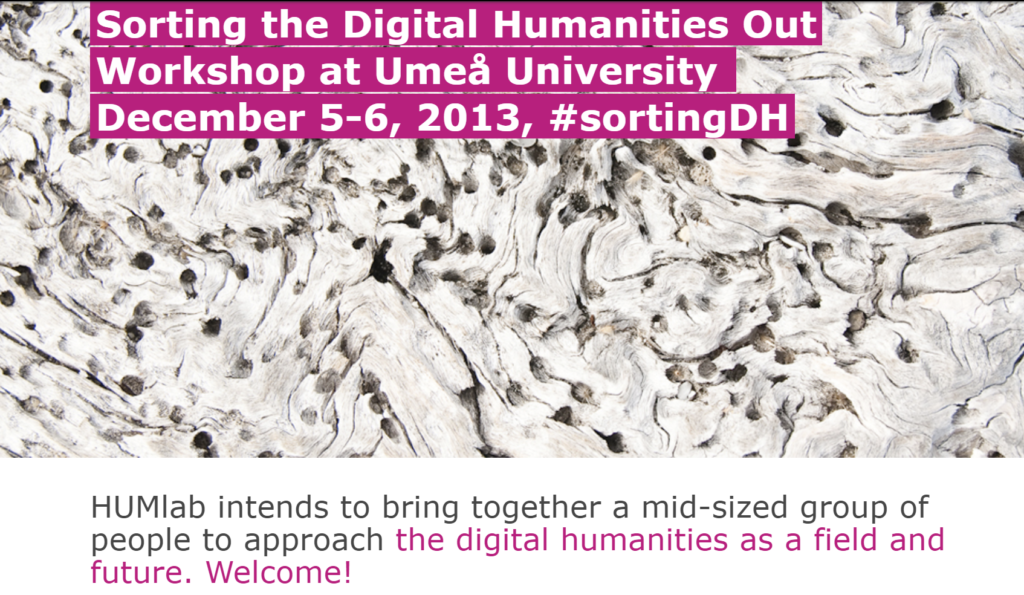
Questions discussed included the (digital) humanities as a means of tackling challenges in the world, the digital humanities as a humanities project, the connection between the digital humanities and media studies, postcolonial/gender/queer perspectives, the “neutrality” of tools, the role of making, intellectual middleware, research questions that drive infrastructural development, the importance of situated infrastructure (such as labs), key contributions to scholarship and education, the digital humanities as an educational think tank, and the connection to environmental/medical/public humanities.
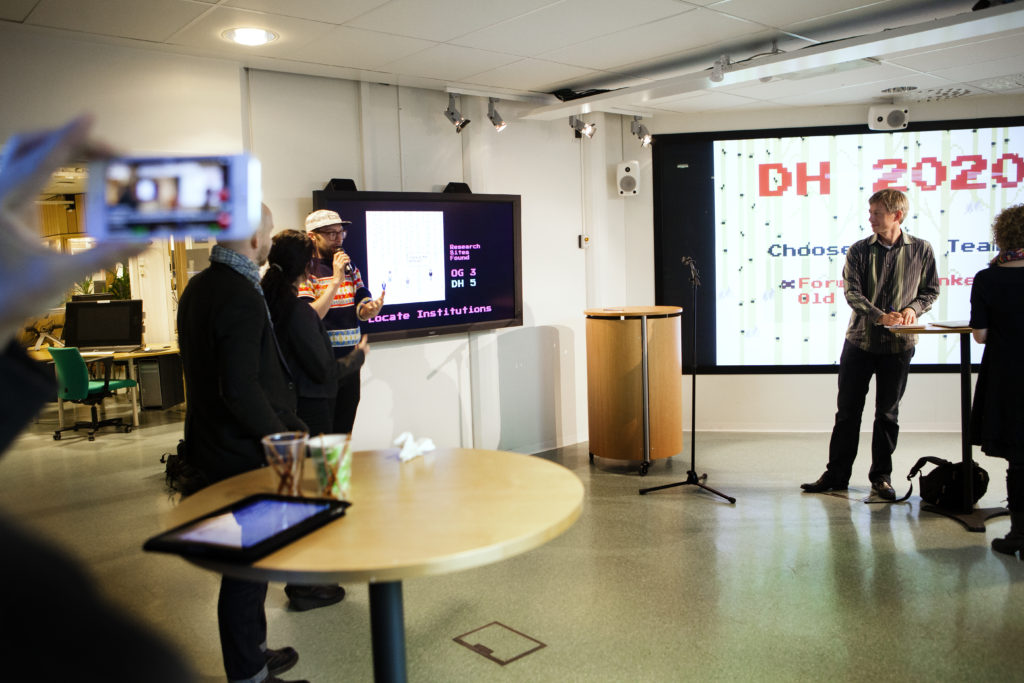
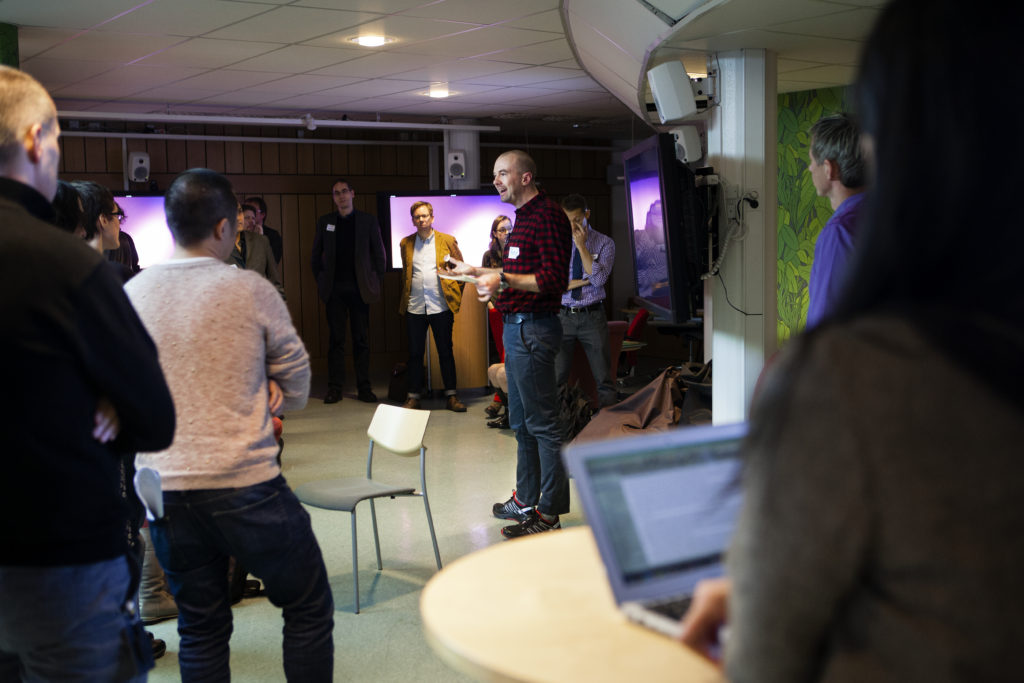
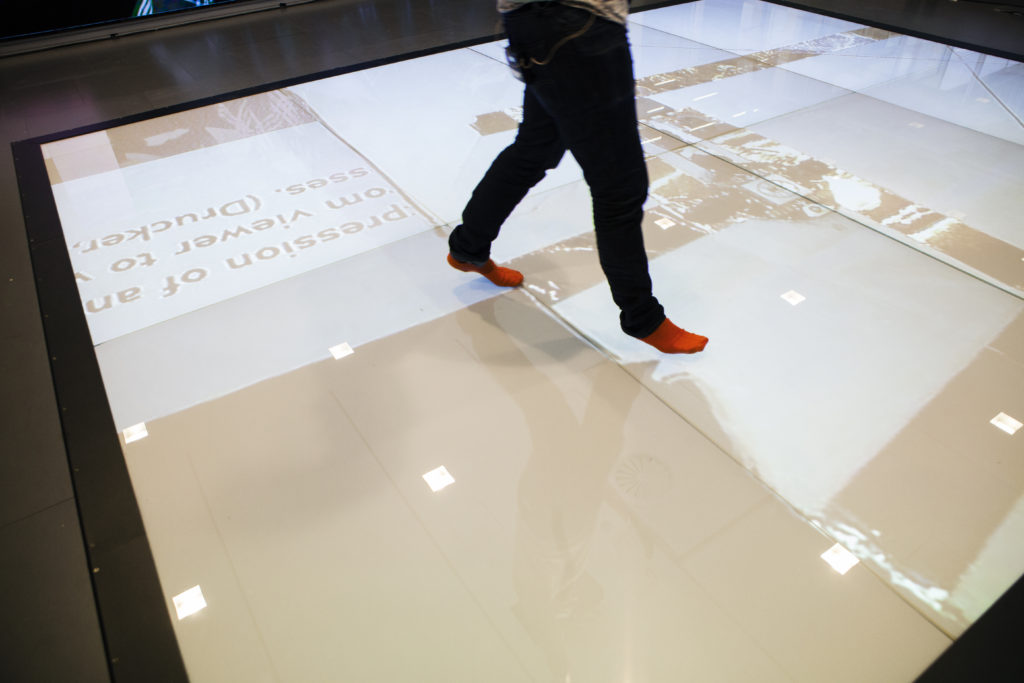
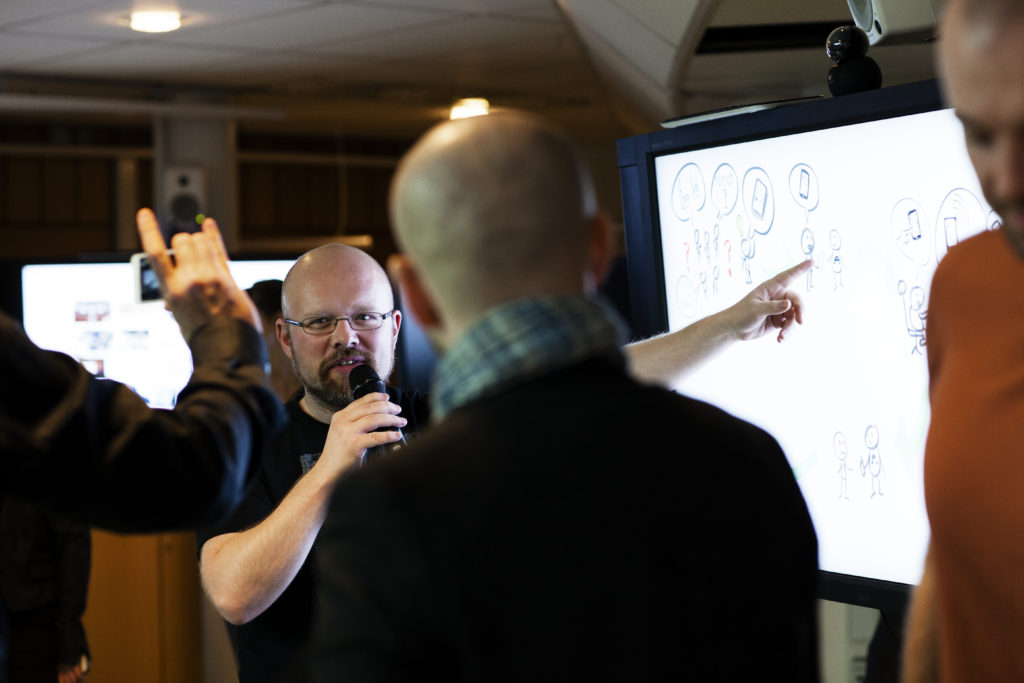
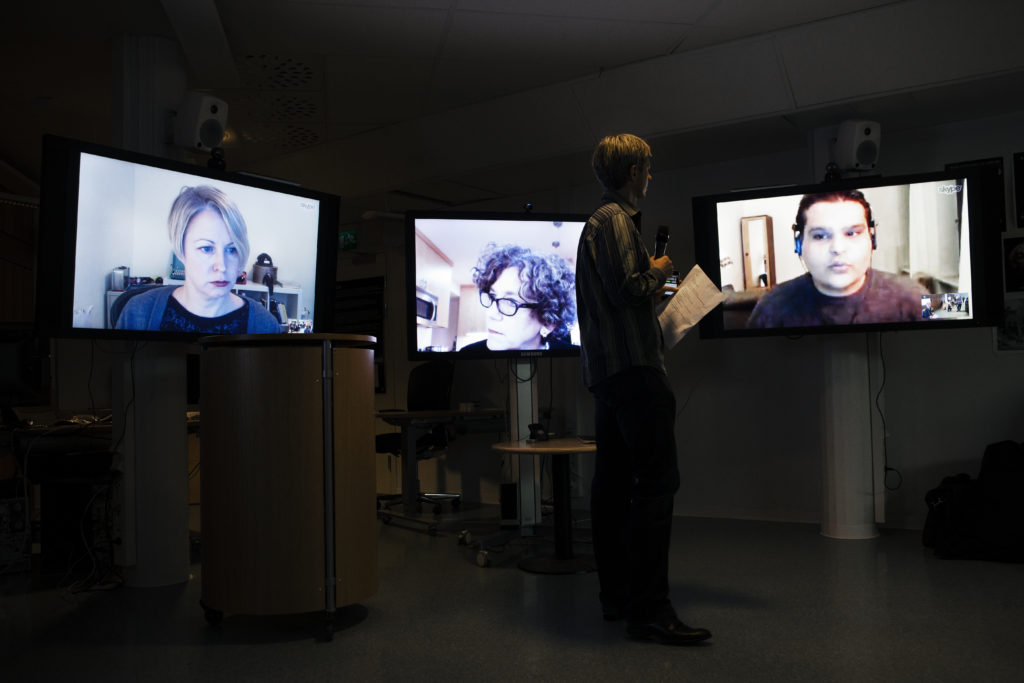
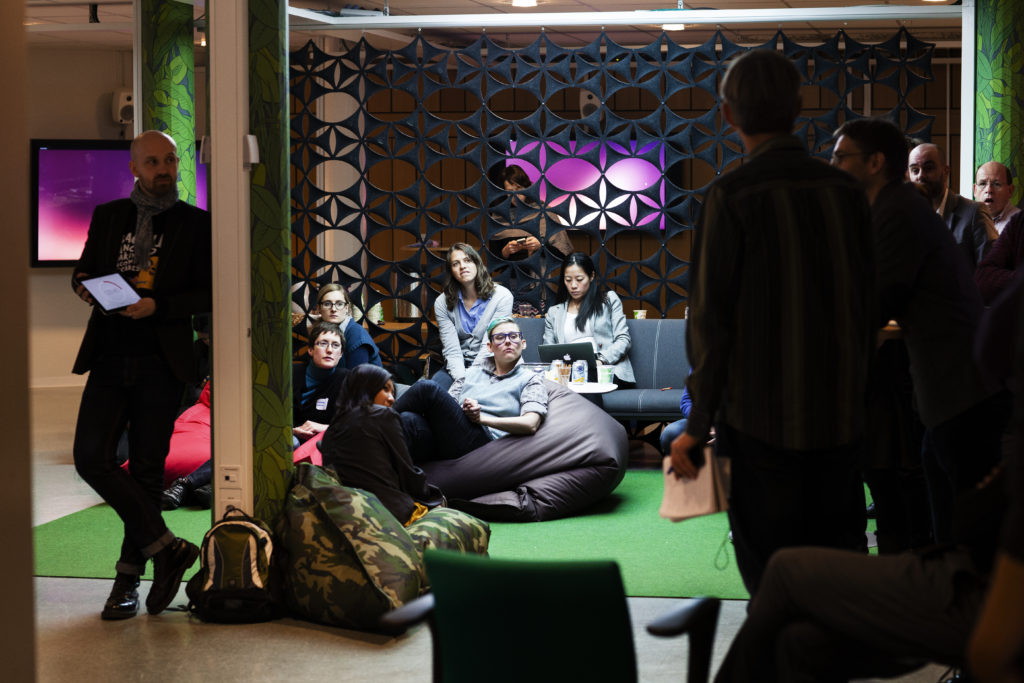
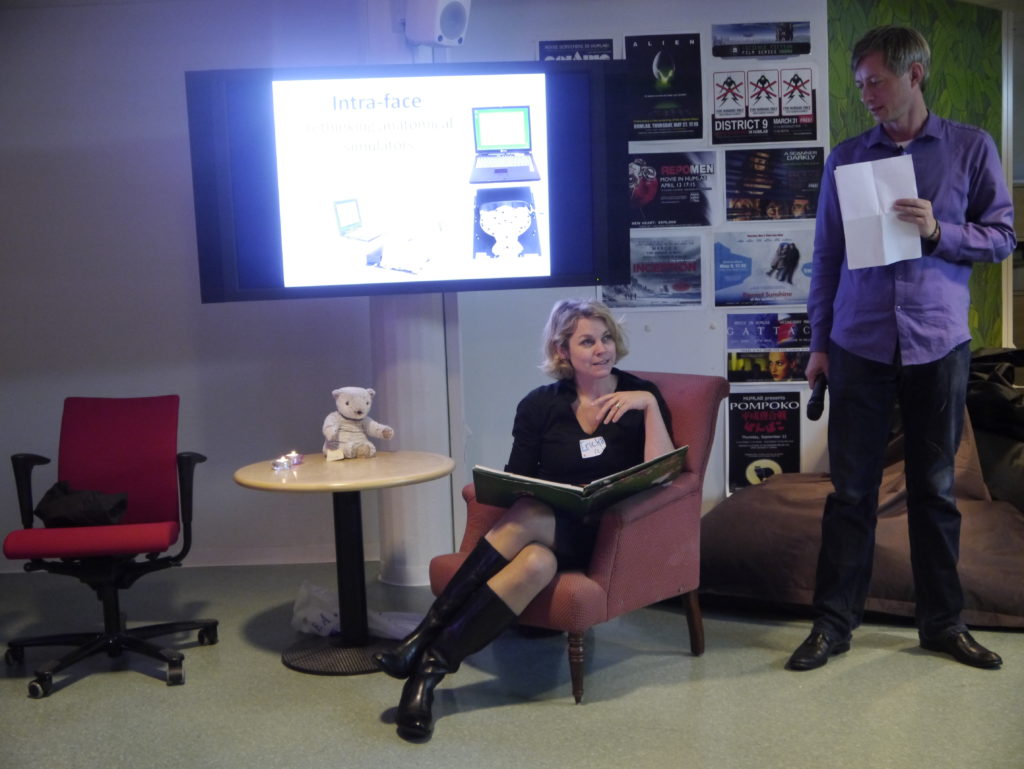
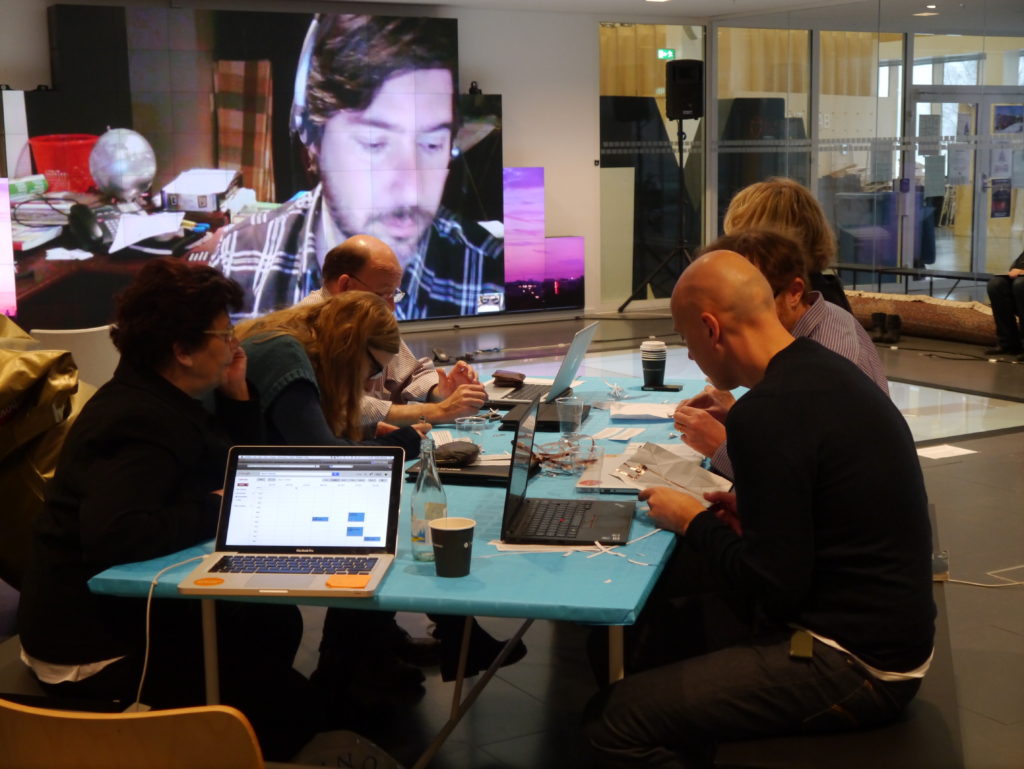
Genres of Scholarly Knowledge Production
December 10-12, 2014
Umeå University
This large-scale, international conference addressed the necessity to engage simultaneously with emerging, creative knowledge practices in the humanities and the critical-historical sensibilities about knowledge production embedded in the humanities (program, extended description). It was argued that there is often a lack of such combined perspectives and engagement in the digital humanities and the humanities more largely. Invited participants included Carolina Bäckman (dancer), Zephyr Frank (Stanford), Samantha Gorman (USC), Jeanne Jo (USC), Lauren Klein (Georgia Tech), Shannon Mattern (The New School), Erica Robles-Anderson (NYU) and Fred Turner (Stanford).
The co-temporal exploration of making and critical awareness was manifested through the setup and curatorship of the conference in HUMlab at Umeå University. The two lab spaces, one deeply embedded between the humanities and social science departments and one placed between design, art and architecture on the Arts Campus, were used to host the conference and accommodate a mix of modalities, materialities and processes.
At the same time, emergent expressive modalities, the intertwining of digital materials and scholarly production, the centrality of spatially organized information and evolving artistic practices encourage humanists to engage with alternative modes and genres of scholarly knowledge production. One key challenge – at the heart of the conference – then becomes to inflect our own knowledge production and emerging practices with the critical sensibility that we typically recruit when engaging with other domains, knowledge communities and historical strata in our work. (from the description).
The conference hosted a range of first-rate scholars and makers from a range of disciplines, perspectives and practices. Invited participants were asked to enact their arguments/papers/presentations using infrastructure available in HUMlab, including an interactive screenscape with 11 screens. They were provided with tools for uploading, simulating and situating such content (images, film and audio). The use of slideware such as PowerPoint and Keynote was discouraged/disallowed. The conference itself was analyzed in different ways.
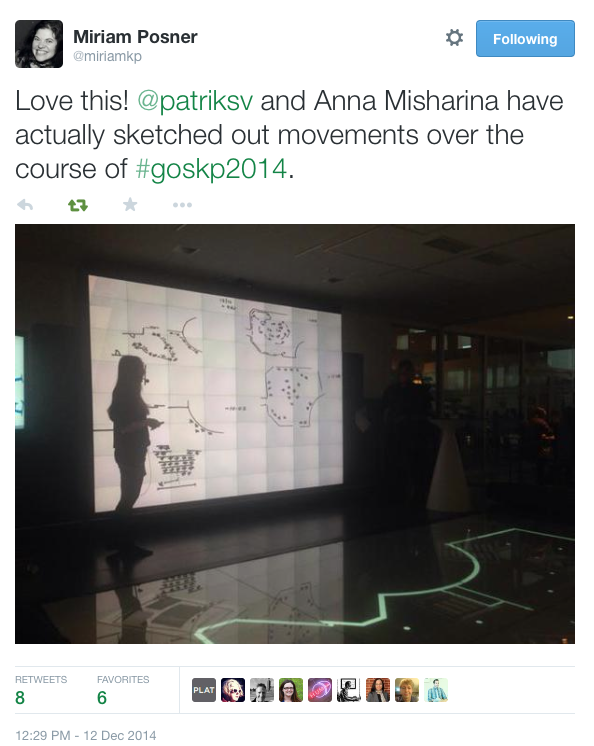
There is also a post-conference collection on Medium, which contains 12 contributions.
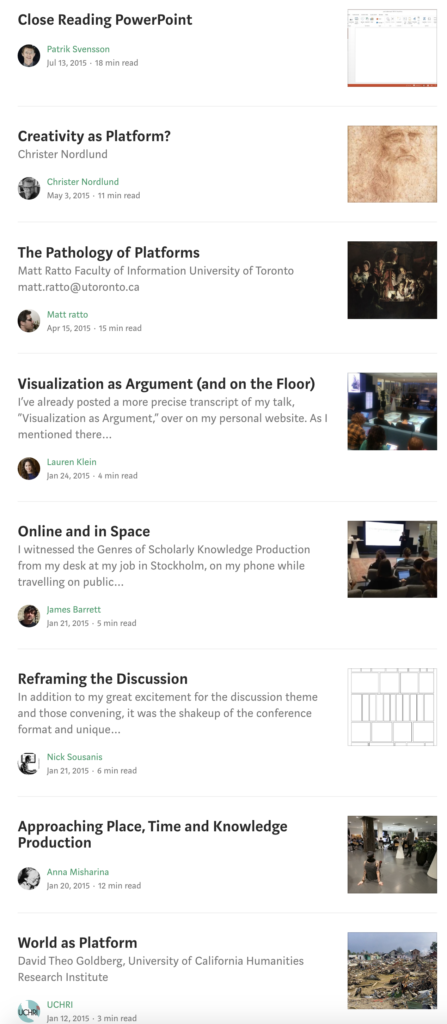
The conference was organized and supported by HUMlab, Umeå University. Patrik Svensson was chair and Shannon Mattern co-chair. The event had excellent support from HUMlab, HUMlab’s director Cecilia Lindhé and conference coordinator Emma Ewadotter. Important additional support came from the Marcus and Amalia Wallenberg Foundation (through Patrik Svensson’s chair) and the Media Places Project (Stanford-Umeå collaboration, funded by the Knut and Alice Wallenberg Foundation).
3) Seminars
3.1 T35 Seminars (2000-2003)
The T35 Seminar series was a collaboration between HUMlab and Center for Educational Technology (CUT) at Umeå University. I co-organized and co-curated the series, which included 27 seminars in total (list of all the T35 seminars). The main theme was learning and technology (in that order) in the context of higher education.
3.2 The HUMlab Seminar (2002-2012)
Between 2002 and 2014 I chaired about 150 seminars in the HUMlab Seminar series. I started and was responsible for the whole series. Occasionally others would be responsible for individual seminars – the seminar series included 172 seminars all in all. Speakers (under my curatorship) included Anne Balsamo (USC, 2007, my blog entry introducing her), Judith Donath (MIT, 2003), Lori Emerson (University of Colorado at Boulder, 2014), Kathleen Fitzpatrick (MLA, 2011), Katherine Hayles (UCLA, 2002), Ursula Heise (Stanford, 2011), Larissa Hjorth (RMIT, 2008), Yanni Loukissas (Georgia Tech, 2014), Shannon Mattern (New School, 2013), Jane McGonigal (UC Berkeley, 2005), Jessica Pressman (Yale, 2010), Peter Stokes (King’s College London), Nishant Shah (Centre for Internet and Society, Bangalore, 2013), Jenny Sundén (KTH, 2002), Steina Vasulka (artist, 2007) and Anders Ynnerman (Linköping, 2014). There is a list of seminars that was published as part of the HUMlab book project (2014).
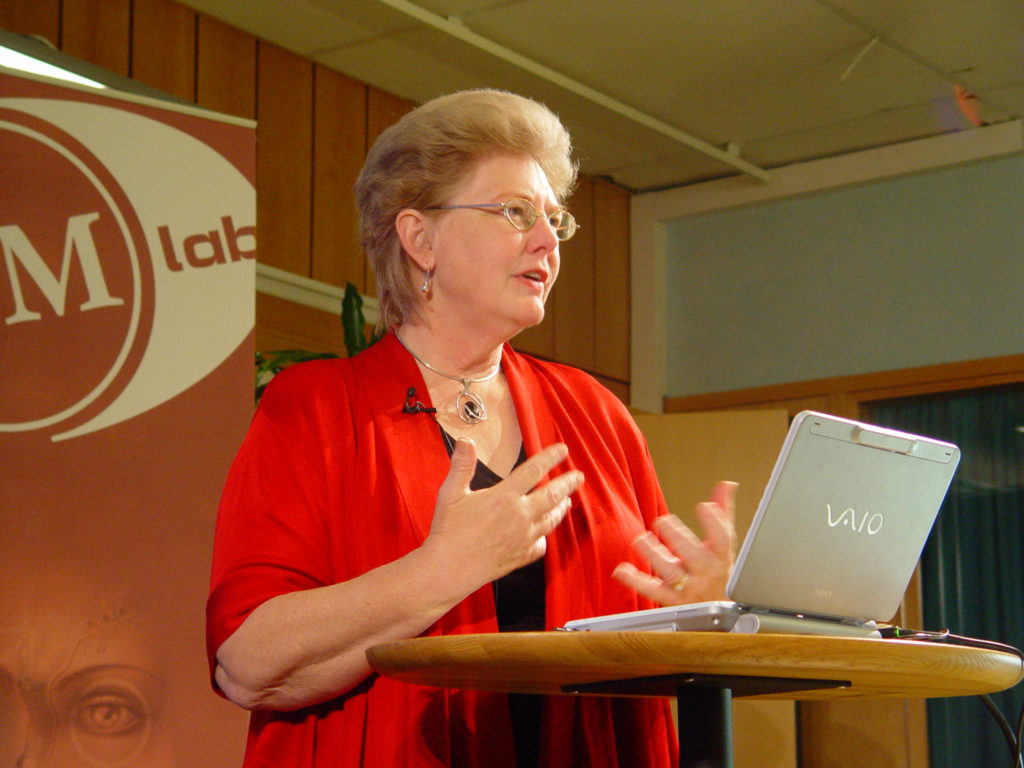
The seminar series was a central curatorial work in the continuous, collaborative shaping of the direction of HUMlab. It was place for both well-established and early career scholars/experts/artist (many now leaders in their fields) to contribute to HUMlab and to the formation of digital humanities (broadly speaking). And of course also a way to bring in interesting scholars, technologists and artists from all over the world and to support sharp intellectual exchange and joint exploration. We started to live broad cast seminars in the early 2000s and built several platforms to achieve this (including early facilitation of referencing segments of audio).
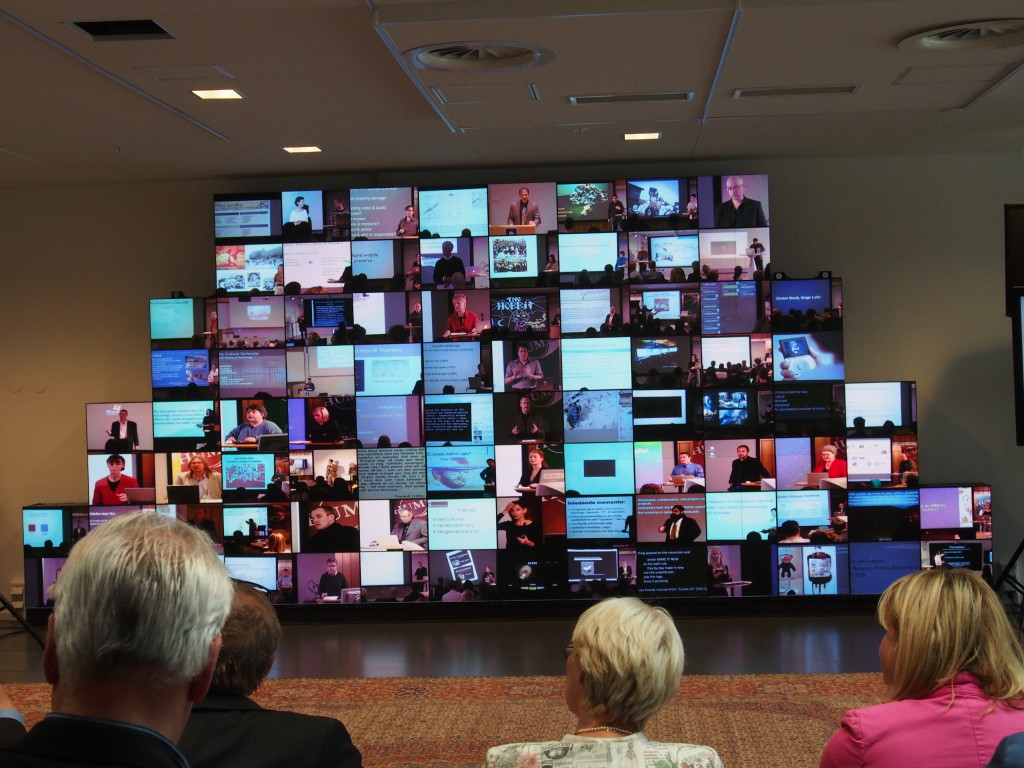
I was heavily involved in the development of these platforms. The simple rationale was that if one brings in really interesting guests, it makes sense to make the seminars available outside the physical space.
4) Other events (reverse chronological order)
I have also curated and chaired many other events – often in collaboration with others. Some examples are listed below ( (where I had the main responsibility).
HUMlab Inauguration 2009 (after a large expansion and a new research initiative)
May 14, 2009
A range of international och national speakers (program available here) including Göran Sandberg, Vice Chancellor of Umeå University, Erica Robles (Stanford, HUMlab postdoc), David Theo Goldberg (UC Humanities Research Institute), Bruce Damer and Galen Brandt (video), Harold Short (King’s College London), Cecilia Lindhé (Umeå University), Kjell Jonsson (Umeå University) and Sven Strömqvist (Lund University). This large-scale event came after we had virtually doubled the HUMlab facility (with a new performance/multiple-screen/interaction space) through support from the Wallenberg Foundation and also initiated an international postdoctoral program with the support of the Kempe Foundation. Umeå University supported this new stage of the lab generously through an allocation made by the University Board. The actual inauguration was carried out by the County Governor (through uncovering content on a very large touchable, high-resolution screen, went very well, but there was some drama, video 1 and video 2, in Swedish).
From Vision to Practice: Language Education and Information Technology
May 11-12, 2005
The Swedish title of this conference was “Från Vision till Praktik: Språkutbildning och informationsteknik” (program, photo collage). 85 participants from 22 institutions of higher educations participated (press release from Umeå University in Swedish). The conference was carried out in collaboration with Ulrike Klingemann (co-chair) and Therese Örnberg. It was the first event (I believe) in HUMlab where we offered (free) baby-sitting/childcare for participants.
Ravi Purushotma, a master student from MIT, was the opening/keynote speaker. Other international speakers included YlvaBerglund (Oxford University) and Agnes Kukulska-Hulme (Open University).
The conference was part of a national effort to build a network around language education and information technology (ITAS). I headed this initiative – which came to be supported by multiple funding agencies – together with Ulrike Klingemann, Stockholm University. Therese Örnberg-Berglund helped us coordinate the network.

The Technological Texture
January 17-18, 2005
Umeå University
The Swedish title was “Den teknologiska texturen”. This was an International-Swedish conference on the humanities and information technology. It was supported by Riksbankens Jubileumsfond (report). Invited participants included Espen Aarseth (IT University of Copenhagen), Jay Bolter (Georgia Tech), Henry Jenkins (MIT), Lena Karlsson (Lund University) and Solveig Jülich (Linköping University). Program available here. Photo collage available here.
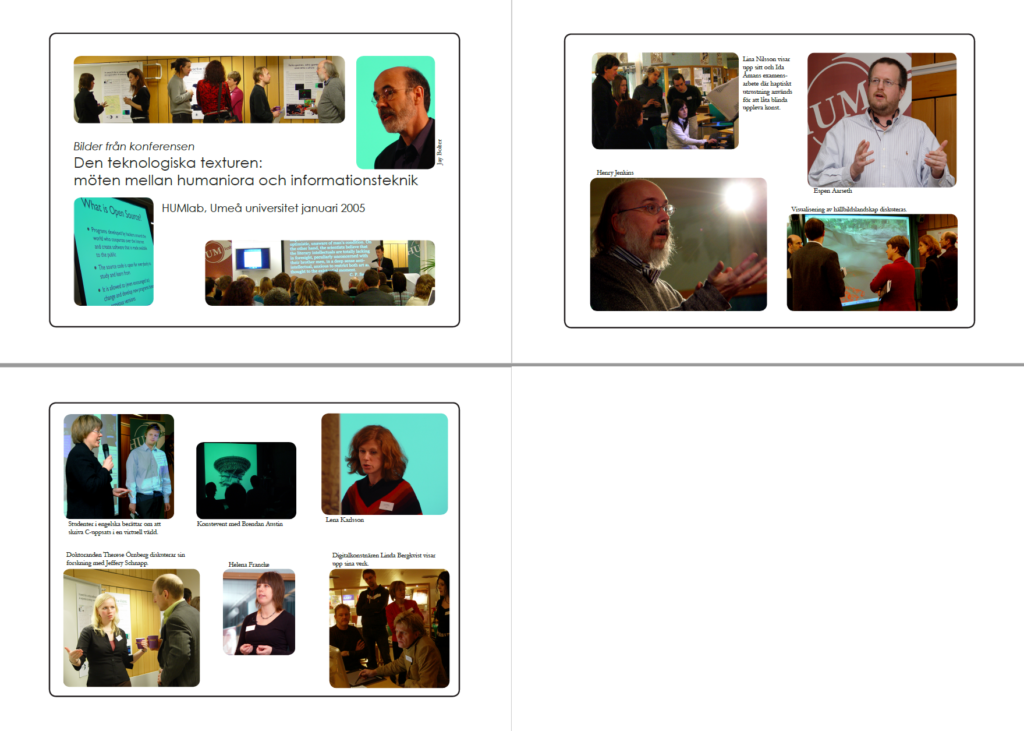
Dynamic Maps: A HUMlab workshop
September 17-18, 2003
This was an international workshop on mapping and visualization. Information and program can be found here. It took as its starting-point both new interactive visualization technologies and traditional representation, maps and cartography. It took place in a modern information technology space with ample opportunities for testing new technologies and for showing examples as well as informal discussion. In co-operation with BildMuseet, the museum of contemporary art and visual culture, a unique collection of early pictorial representations were shown. These served as a starting-point for a discussion of visual traditions and scientific representation. A key concern was the dynamic nature of representations – both traditional and new. Invited speakers included Katy Börner (Indiana University, virtual/tele participation), Martin Dodge (UCL London), Judith Donath (MIT Media Lab), George J. Gumerman (Santa Fe Institute, Arizona State University), Jan Svenungsson (independent artist)
and Sverker Sörlin (Sister) .
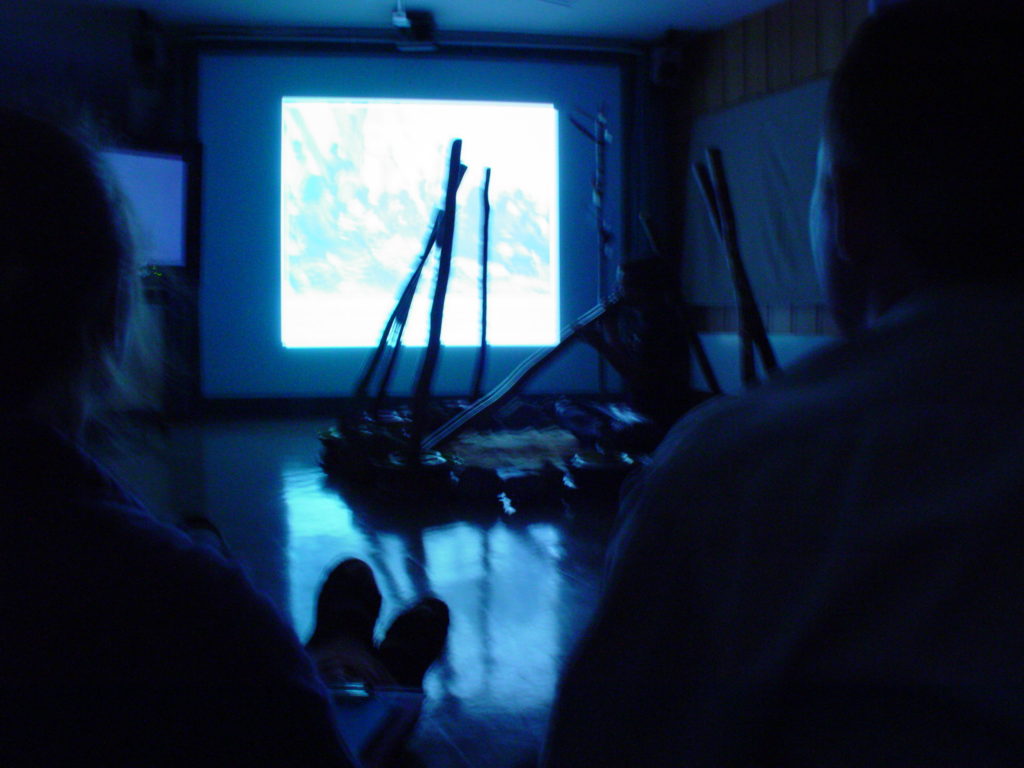
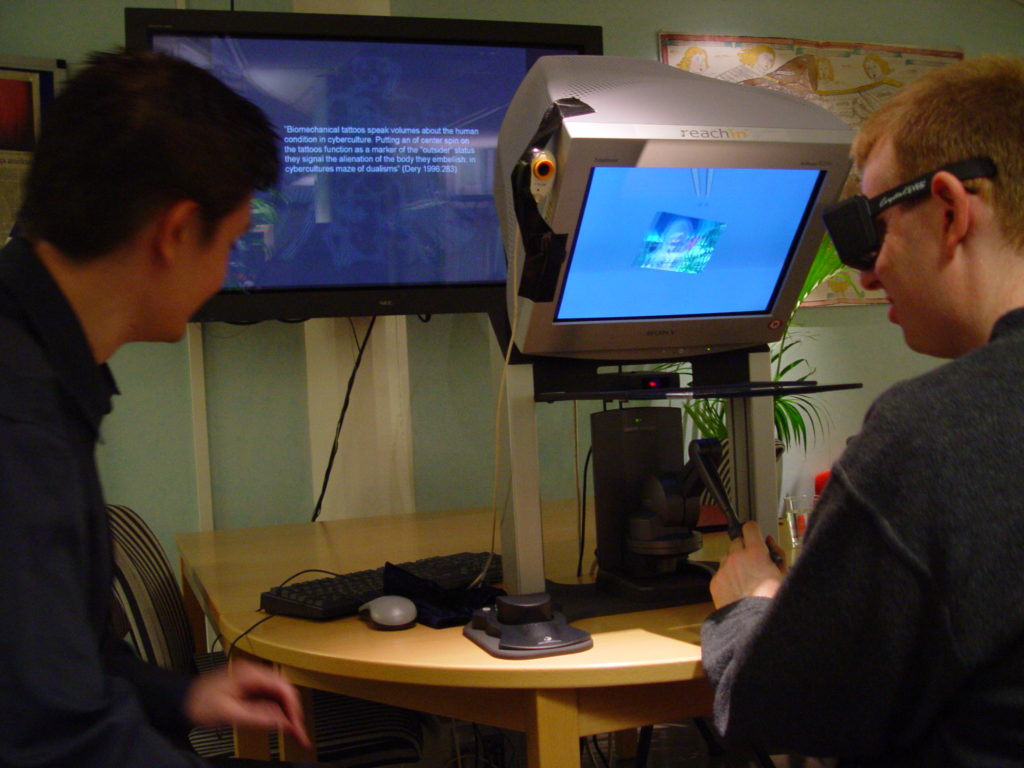
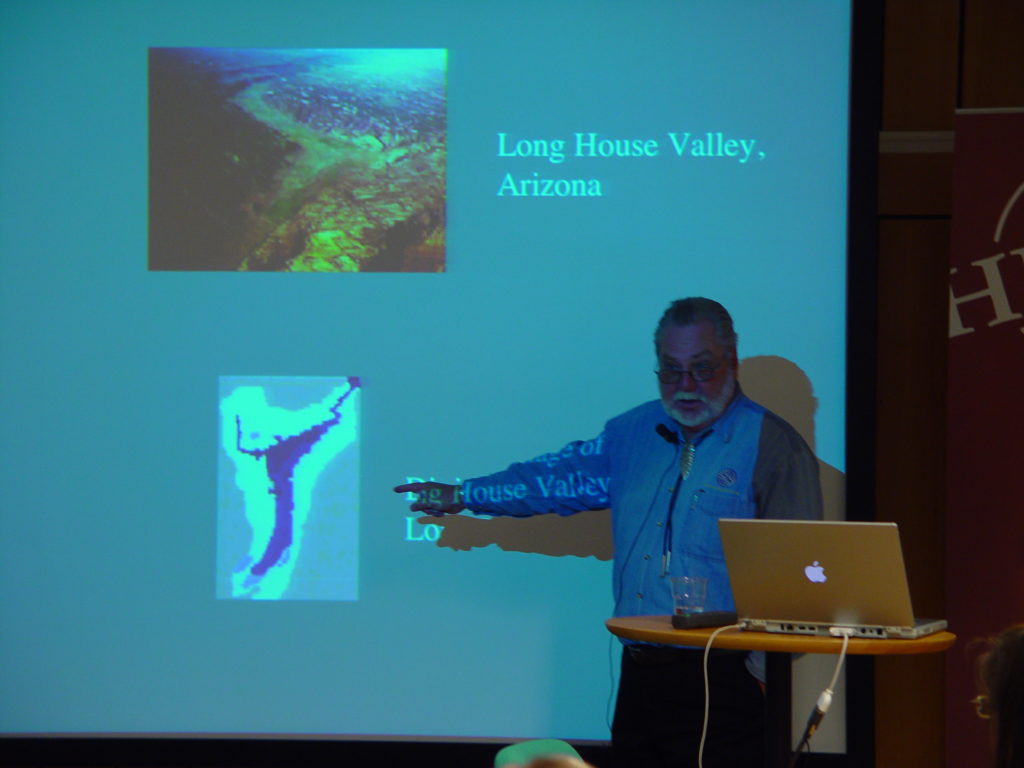
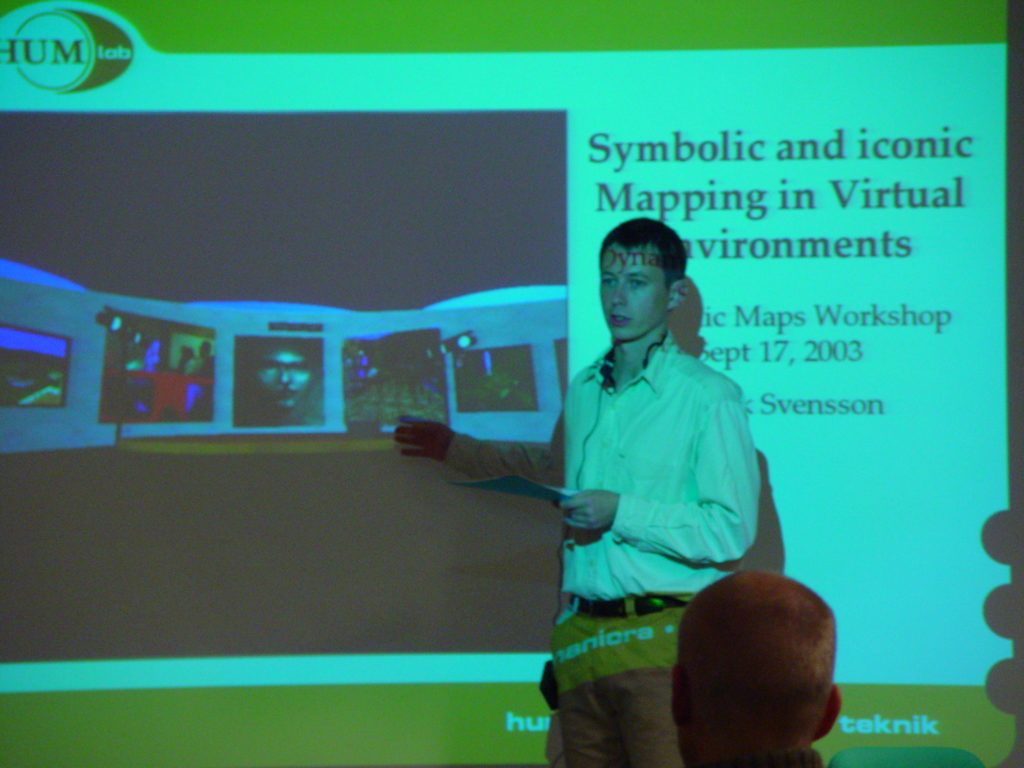
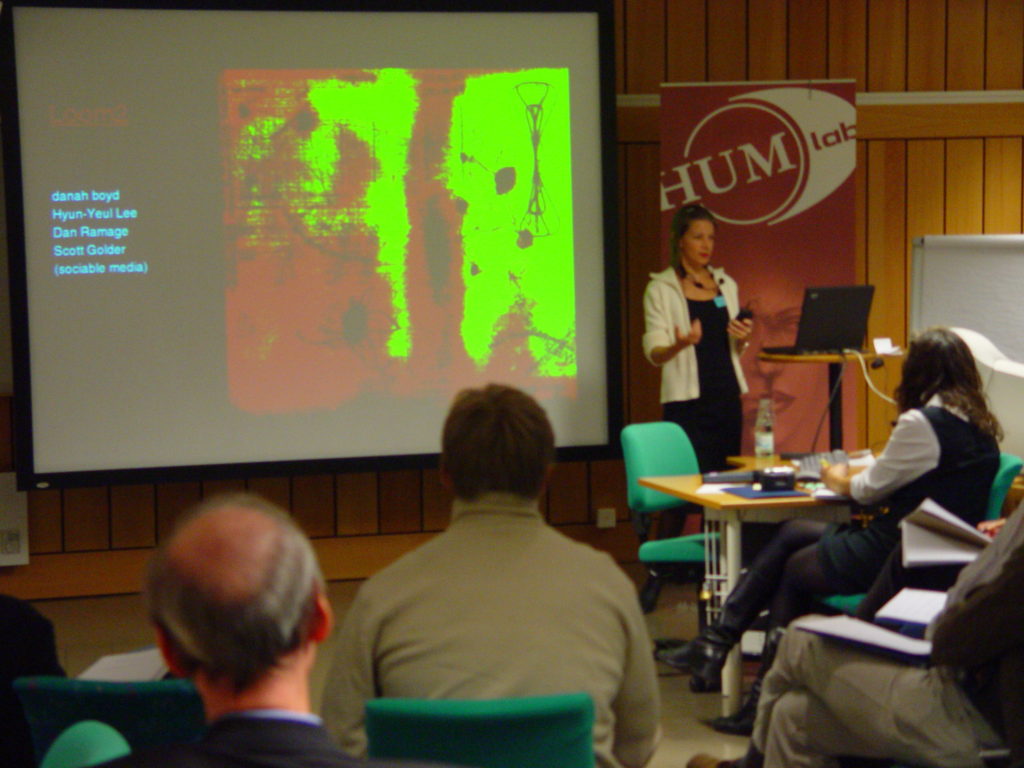
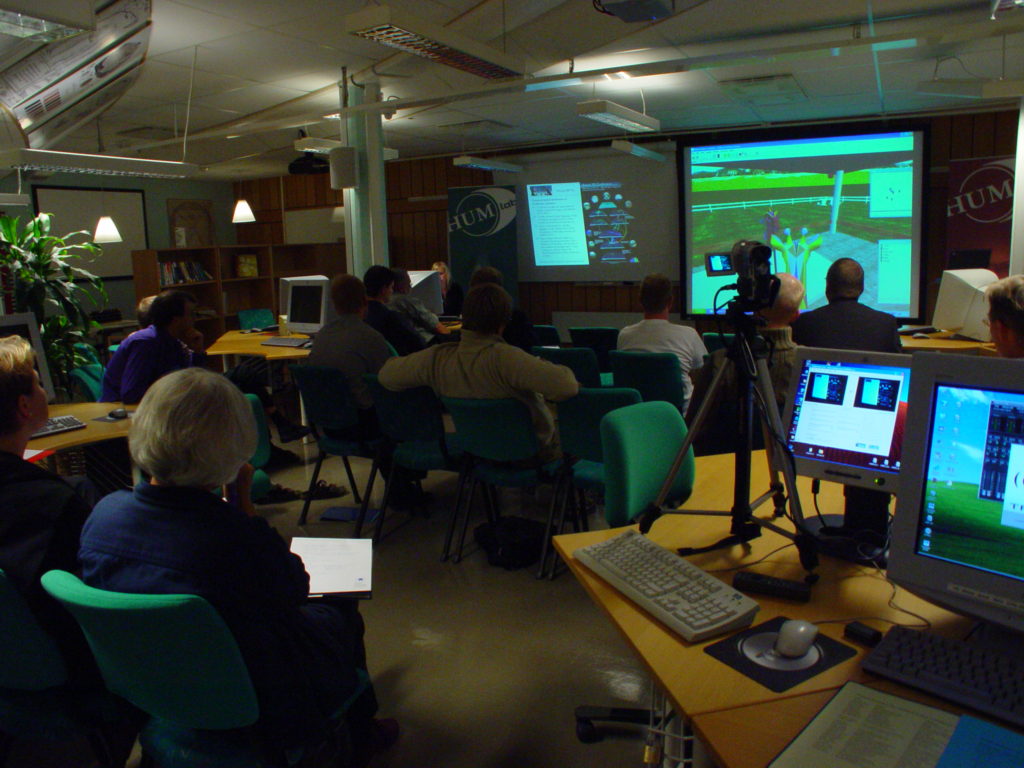
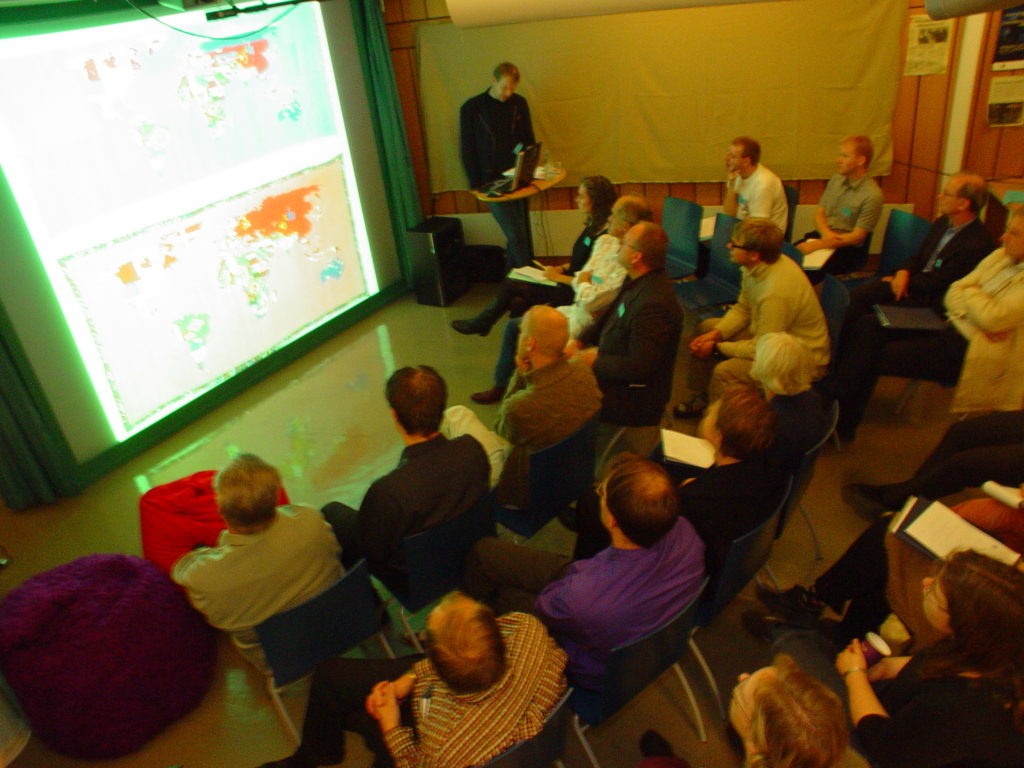
Från tradition till vision [From Tradition to Vision]
December 5-6, 2001
International-Swedish conference on language learning and technology. Uschi Felix (Monash University) was the keynote speaker. An English version of the program available here.
The conference was one of the first steps in a national effort to build a network around language education and information technology. I headed this initiative – which came to be supported by multiple funding agencies – together with Ulrike Klingemann, Stockholm University.
Inauguration of HUMlab, Phase II
September 12, 2001
Large-scale event with Swedish and international speakers (see program). The Swedish University Chancellor Sigbritt Franke performed the actual inauguration using a laser harp (see below). Invited speakers included Ana Valdés, Espen Aarseth and Ola Larsmo.
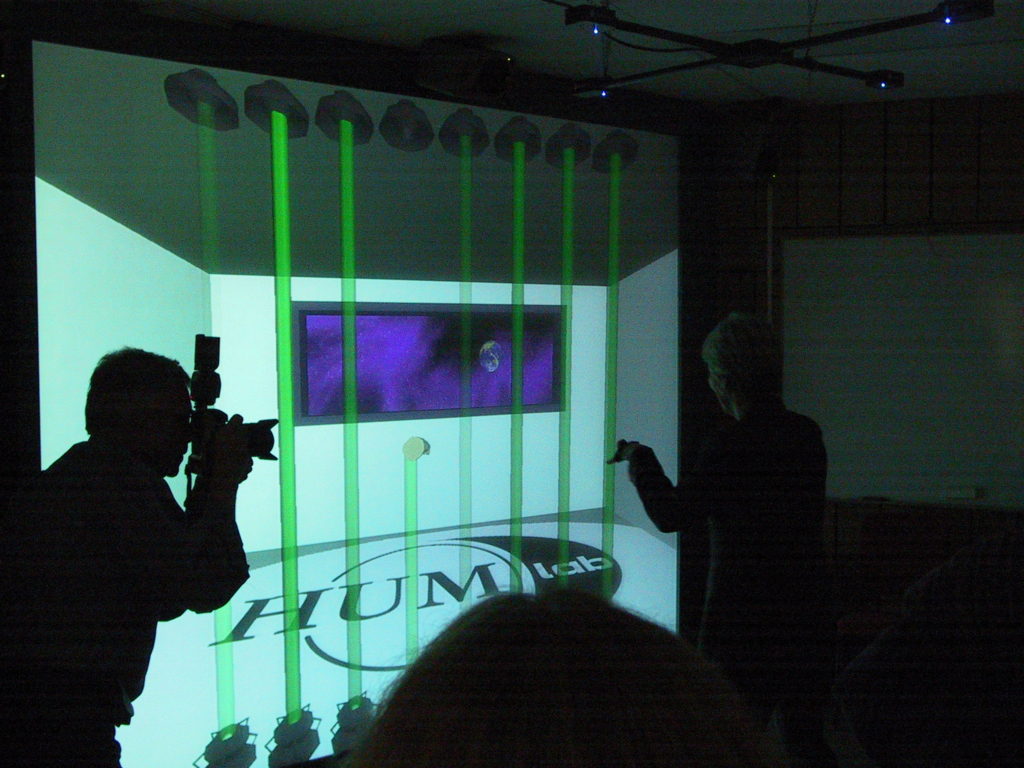
National Symposium on Visualization
December 6-7, 2000
This event was an early attempt at bringing together historians, visual studies experts, computer scientists, visualization experts and learning specialists to discuss the intersection of humanities, arts, technology and the digital. It was a mid-sized event with invited guests and local participants. Program and description available here.
